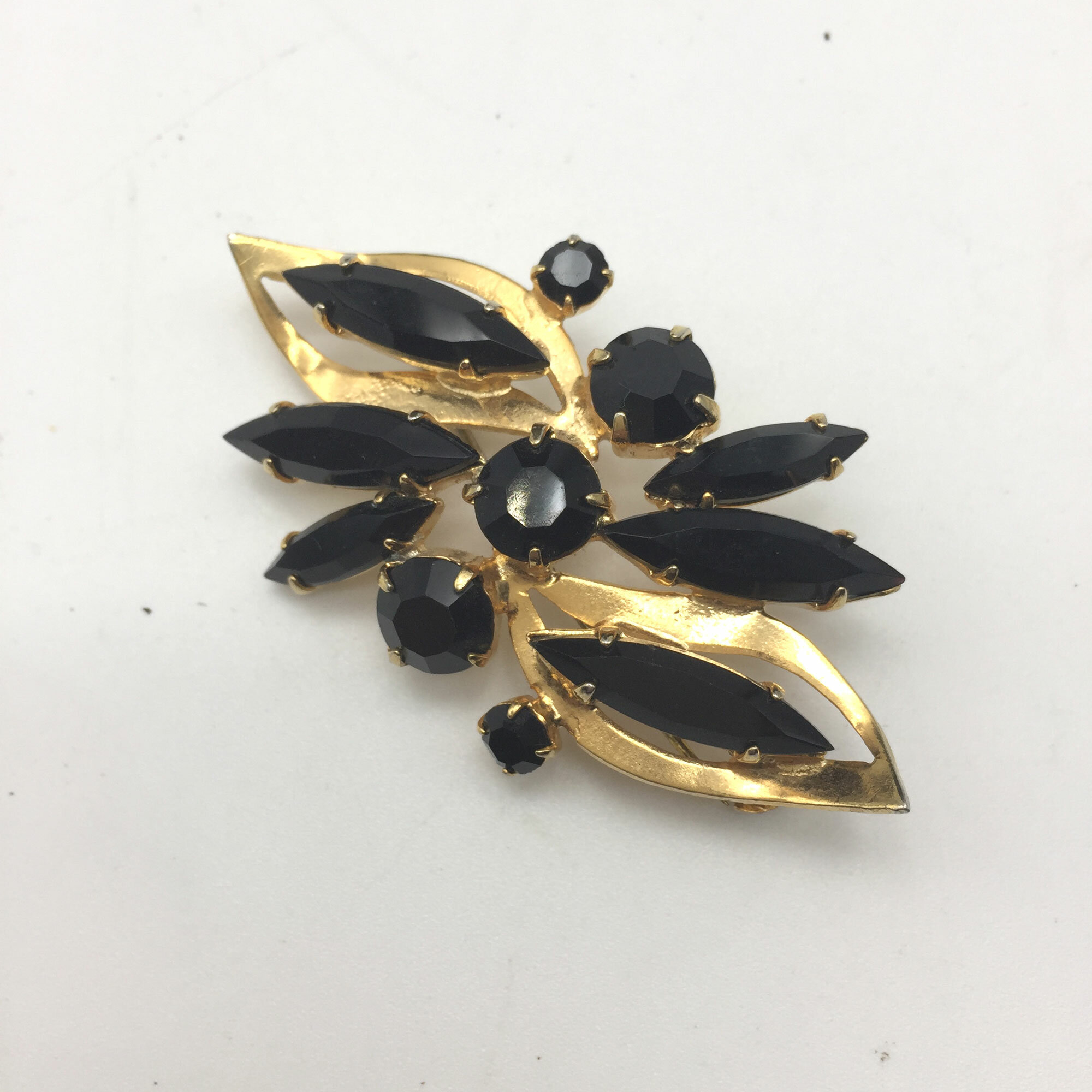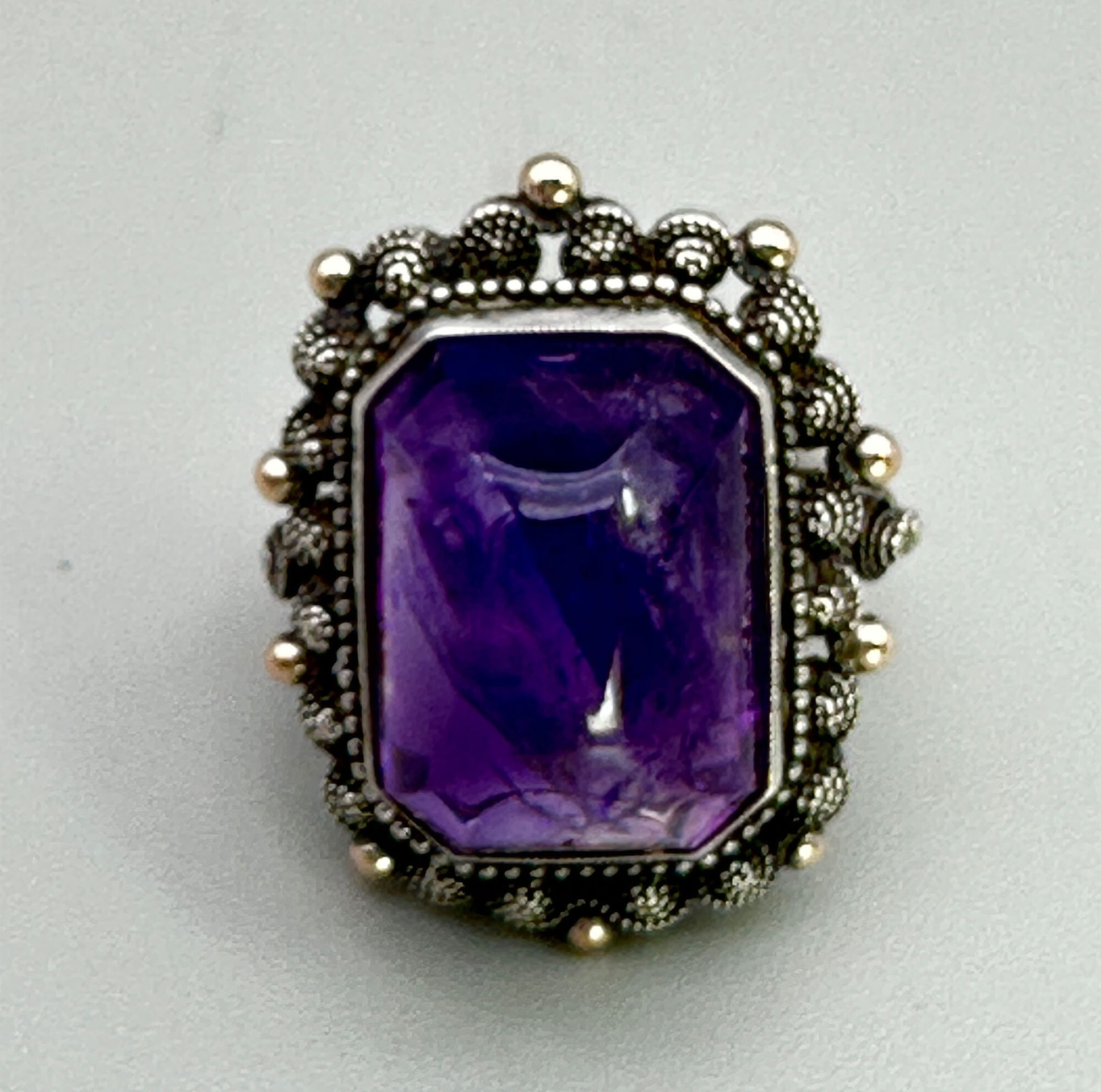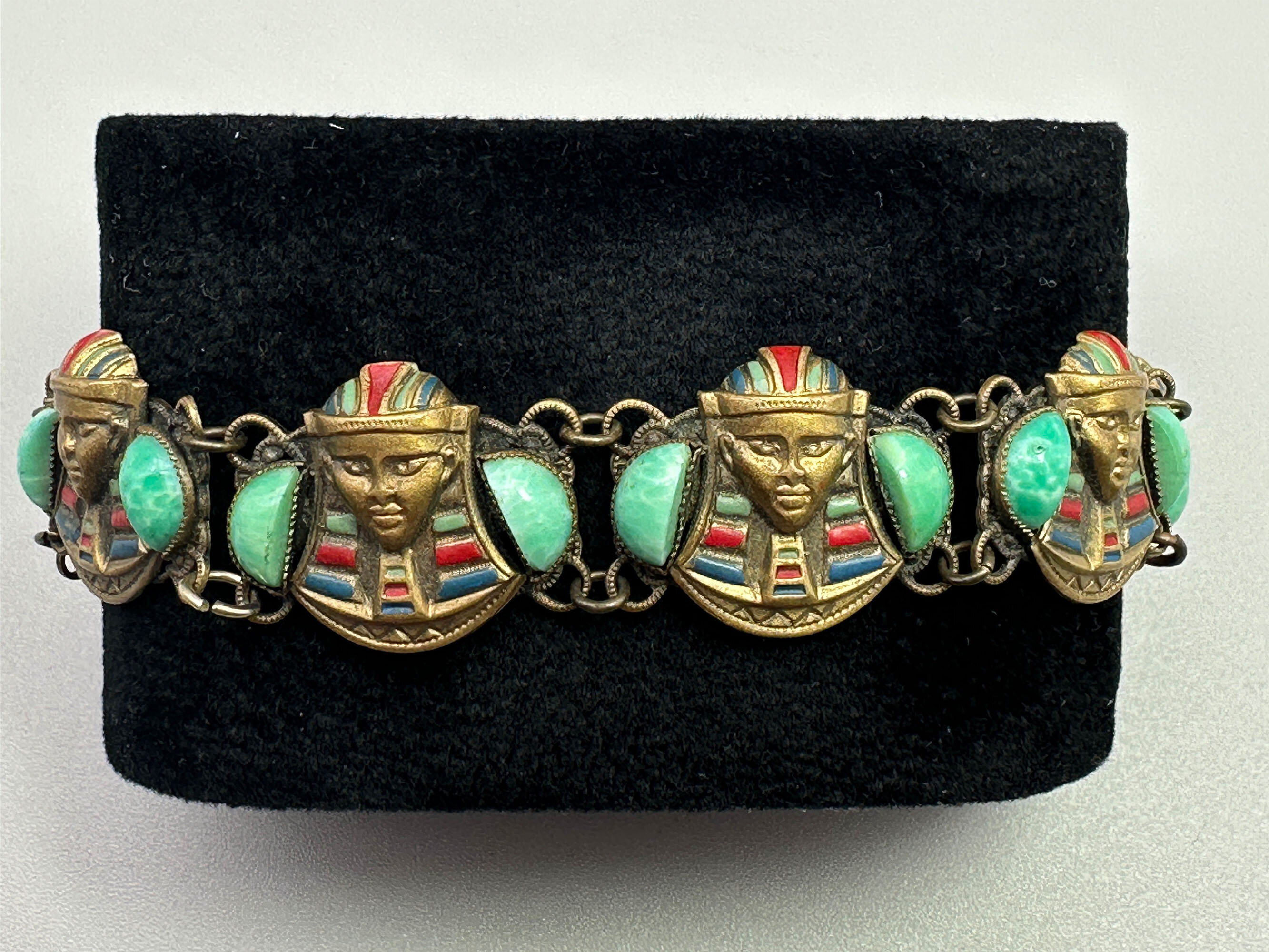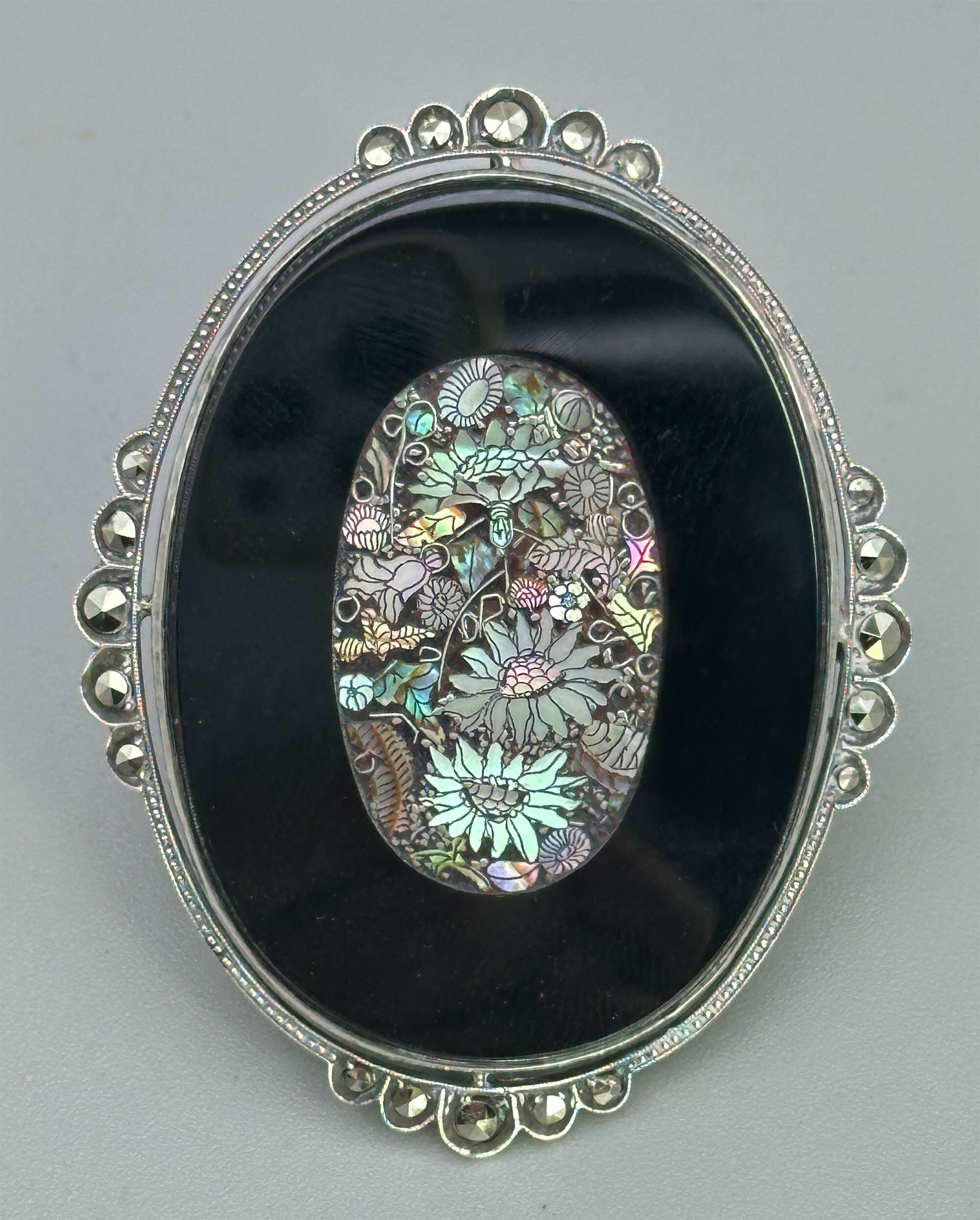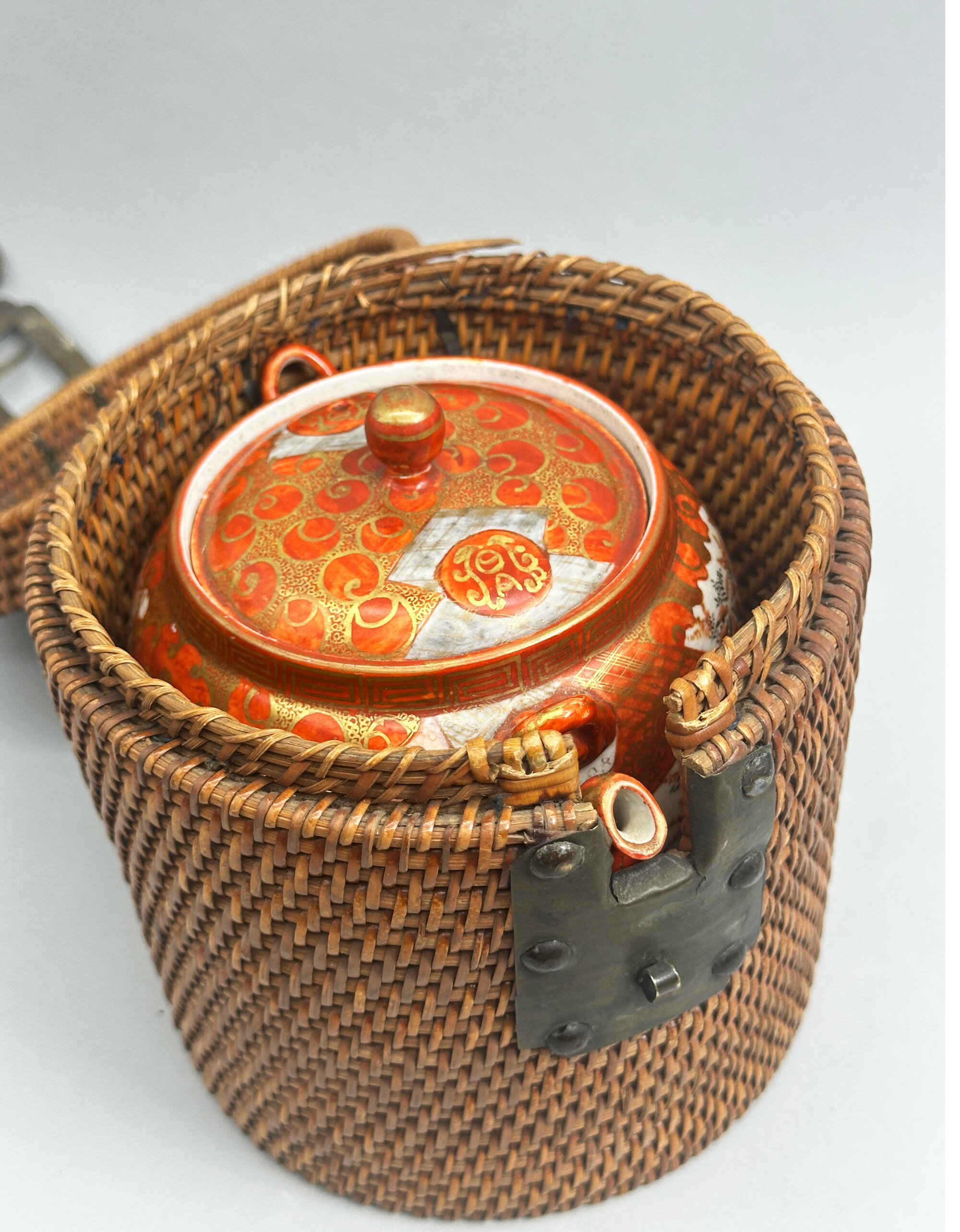
Japanese Kutani Teapot in a carrying Basket, circa 1900
Price: £45Kutani (the word means 'nine valleys') porcelain was made at various factories in the former Kaga province of Japan. The earliest pieces were in a completely different style employing a palette of colours emphasising green, the so called 'Ko Kutani'. Production of this ceased around 1730, and manufacturing was not revived until the early nineteenth century when the more familiar colourings of iron red and gold were introduced. Vases, bowls and plaques are found in this style but also teapots of which this is a typical example. The decoration is of birds and flowers on a faintly craquelure glaze ground and the lid has a complementary ‘brocade pattern’ design. The base has a two character mark reading ‘ku’ ‘tani’ as is often found. The basket is of tightly woven wicker with the metal fitments as described and is probably Chinese in common with many similar examples, although the Japanese did, of course, have a basket weaving tradition of their own. Slight damage means that the ensemble has to be of decorative value rather than practical use but it remains an interesting and entertaining souvenir item from the orient.

Pair of continental style openwork border Dishes, probably Chinese C20th
Price: £20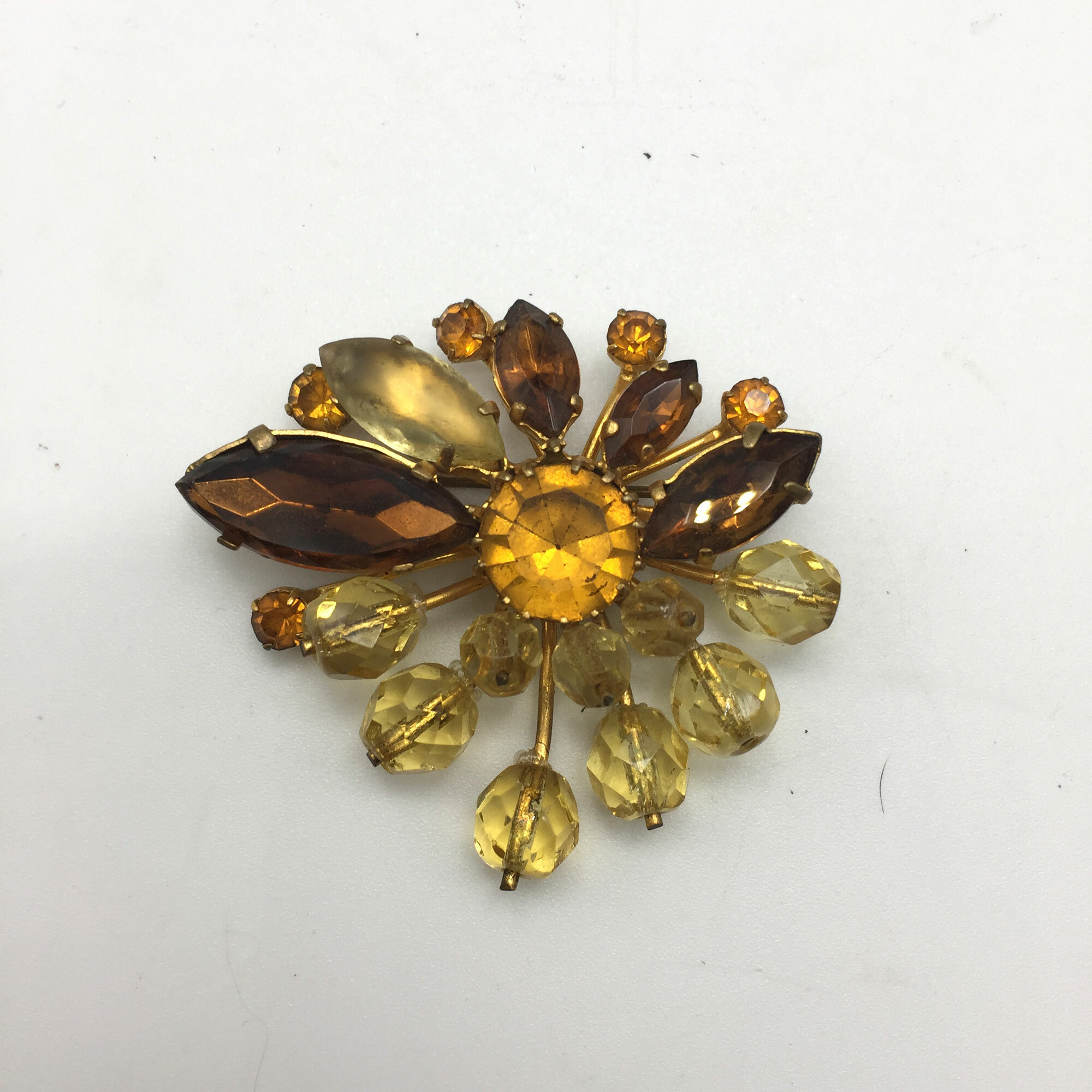
Unusual floral spray brooch 1960s
Price: £10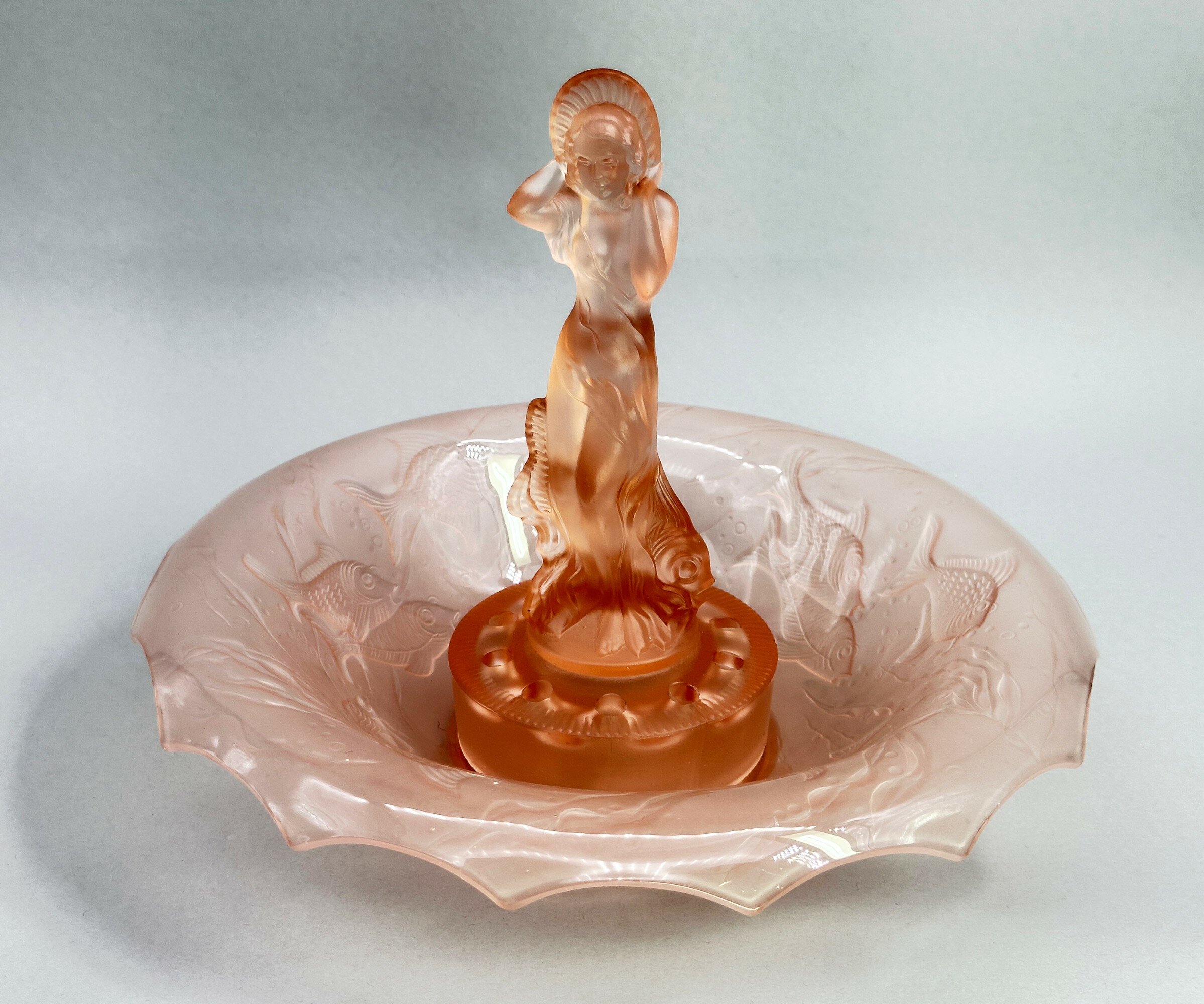
Pink Glass Centrepiece Set, Arabella, Walter and Sohne, 1930s
Price: £55The influence of Art Deco style of this piece is clear and it does indeed date to the 1930s. The model, termed ‘Arabella’ can apparently be seen in the 1934 catalogue of the German glass manufacturers Walther and Sohne, founded by August Walther in 1888 at Ottendorf-Akrilla near Dresden. In the 1930s the firm was famous for its Art Deco designs and also produced a version of ‘cloud glass’ which at one time was held to be exclusive to the English manufacturer Davidson. But some of the English glass makers also drew on their German rival’s work such that Walther and Sohne patented some of their designs in the UK in 1937, presumably to protect their work. This centrepiece set is a classic example of Walther and Sohne’s pre war productions and a distinctive example of Art Deco glassware.
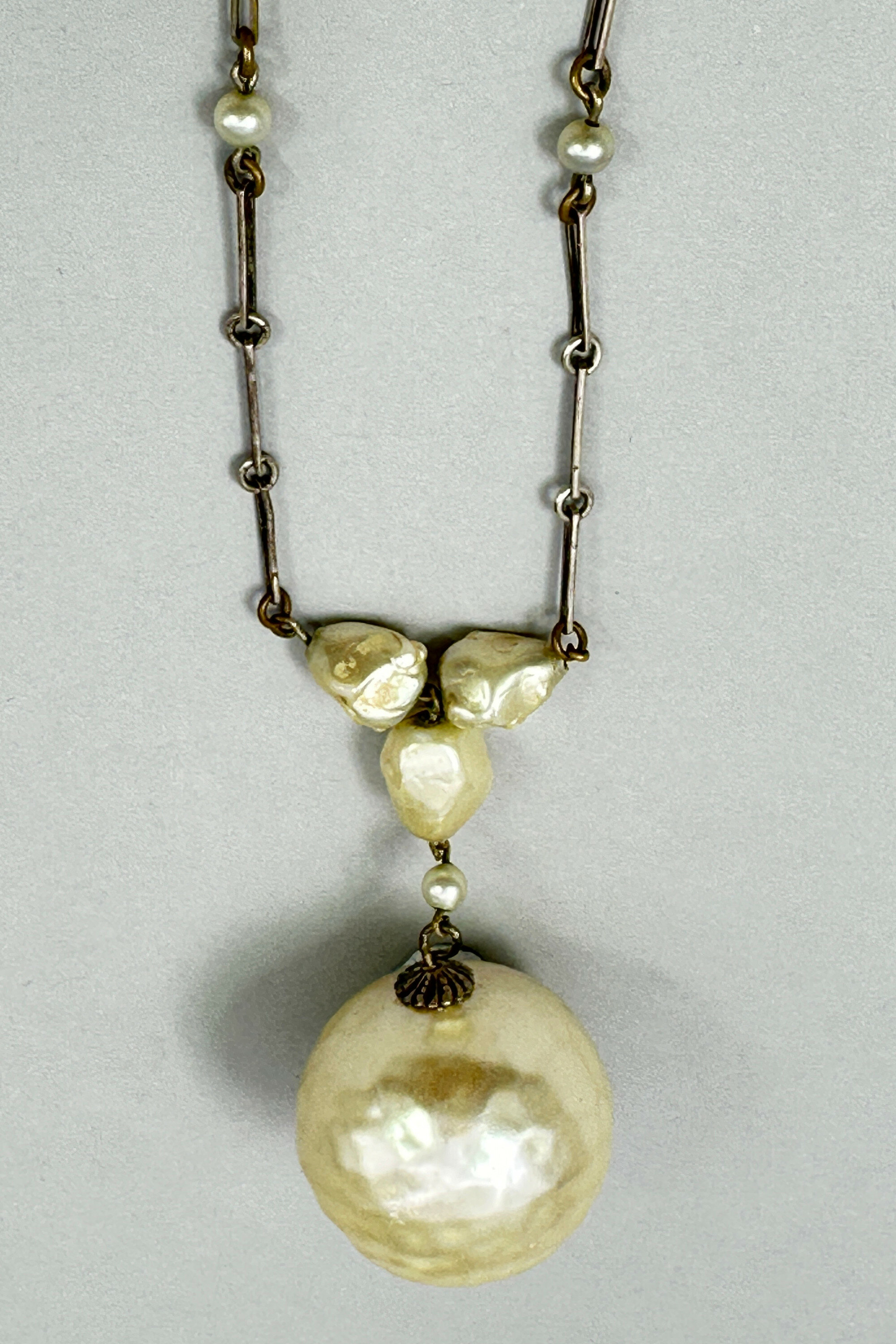
Faux pearl necklace c1910
Price: £15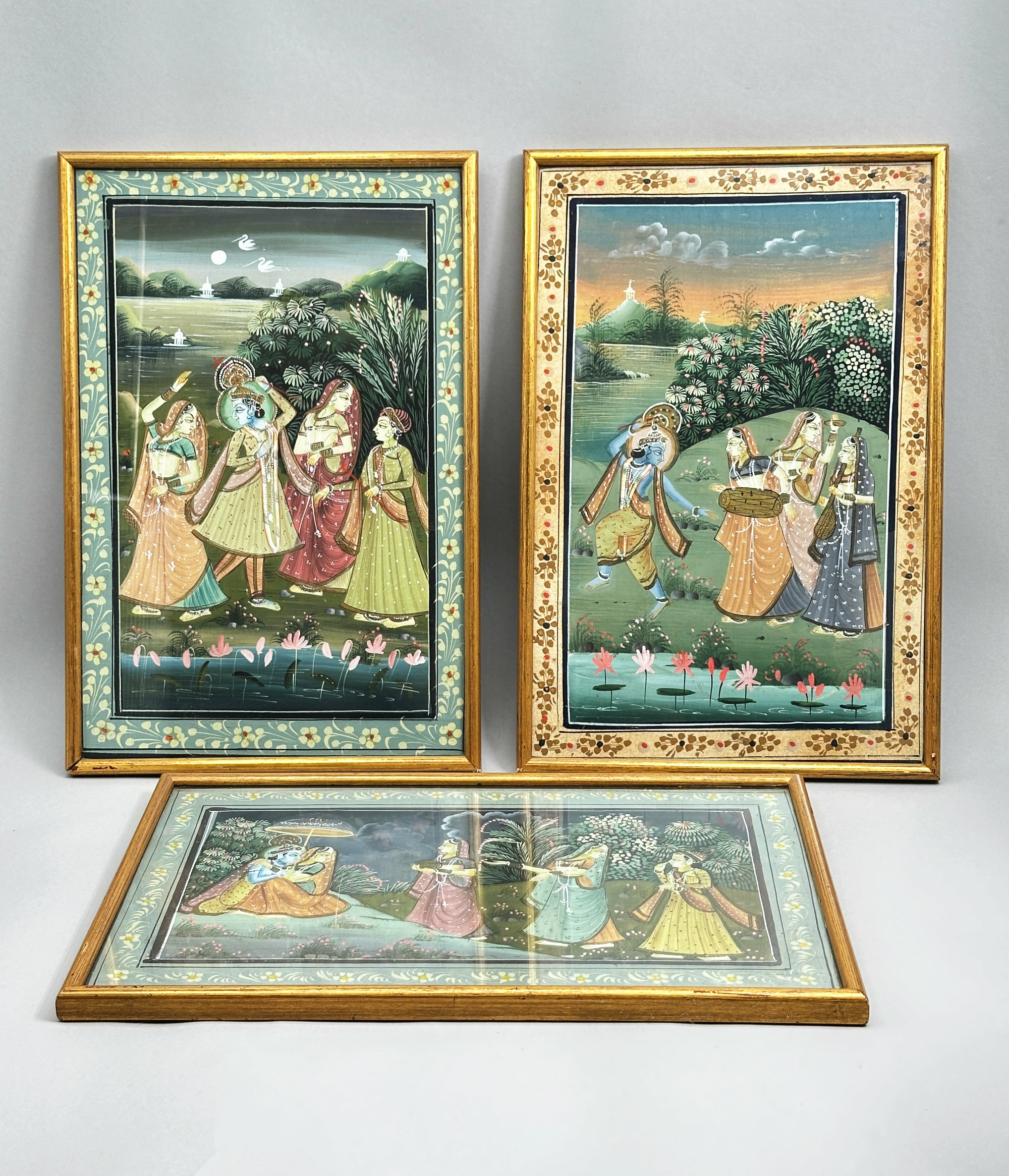
Three Indian gouache paintings depicting Krishna and Radha, framed, first half C20th
Price: £150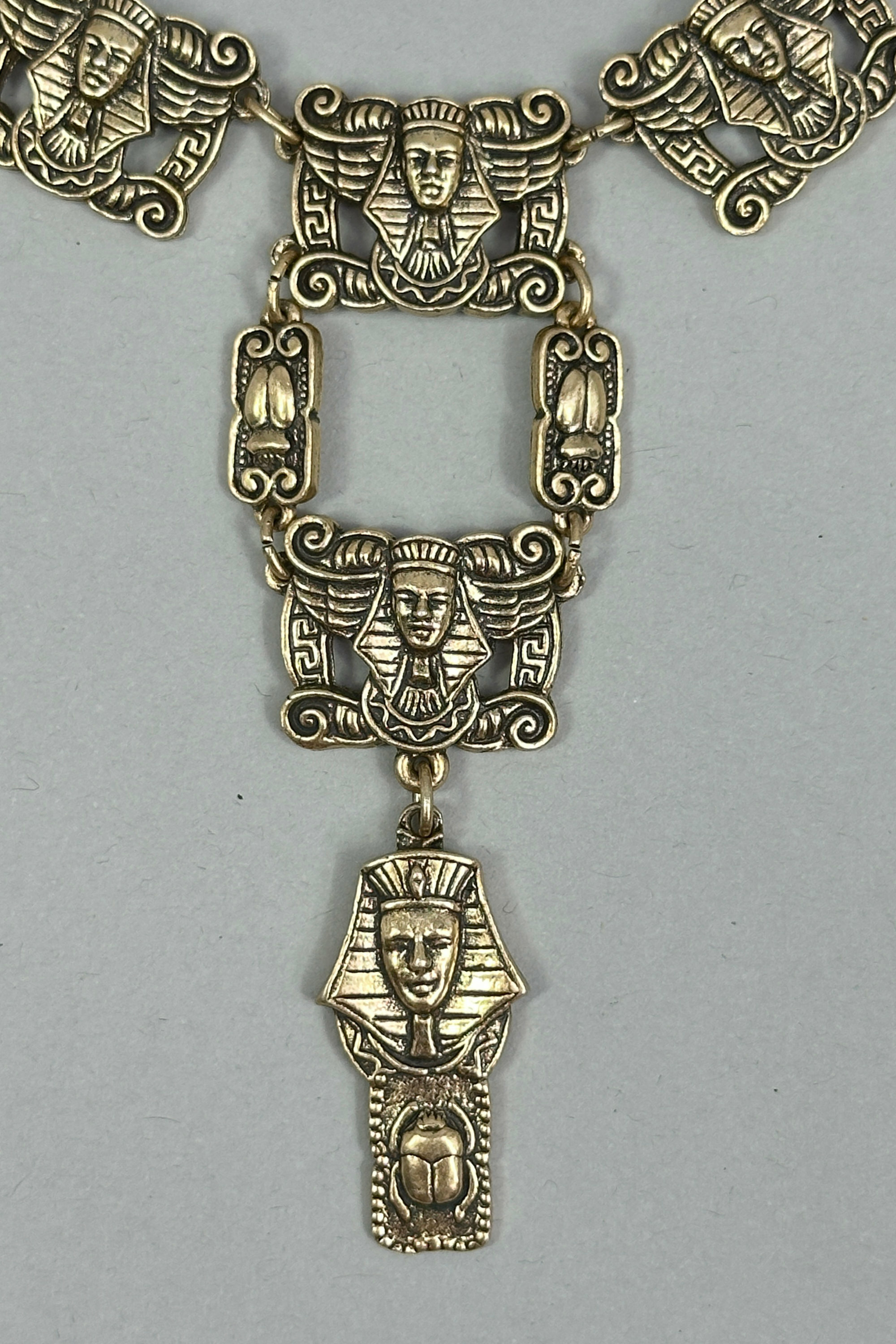
Egyptian Revival necklace depicting Tutankhamun c1980
Price: £45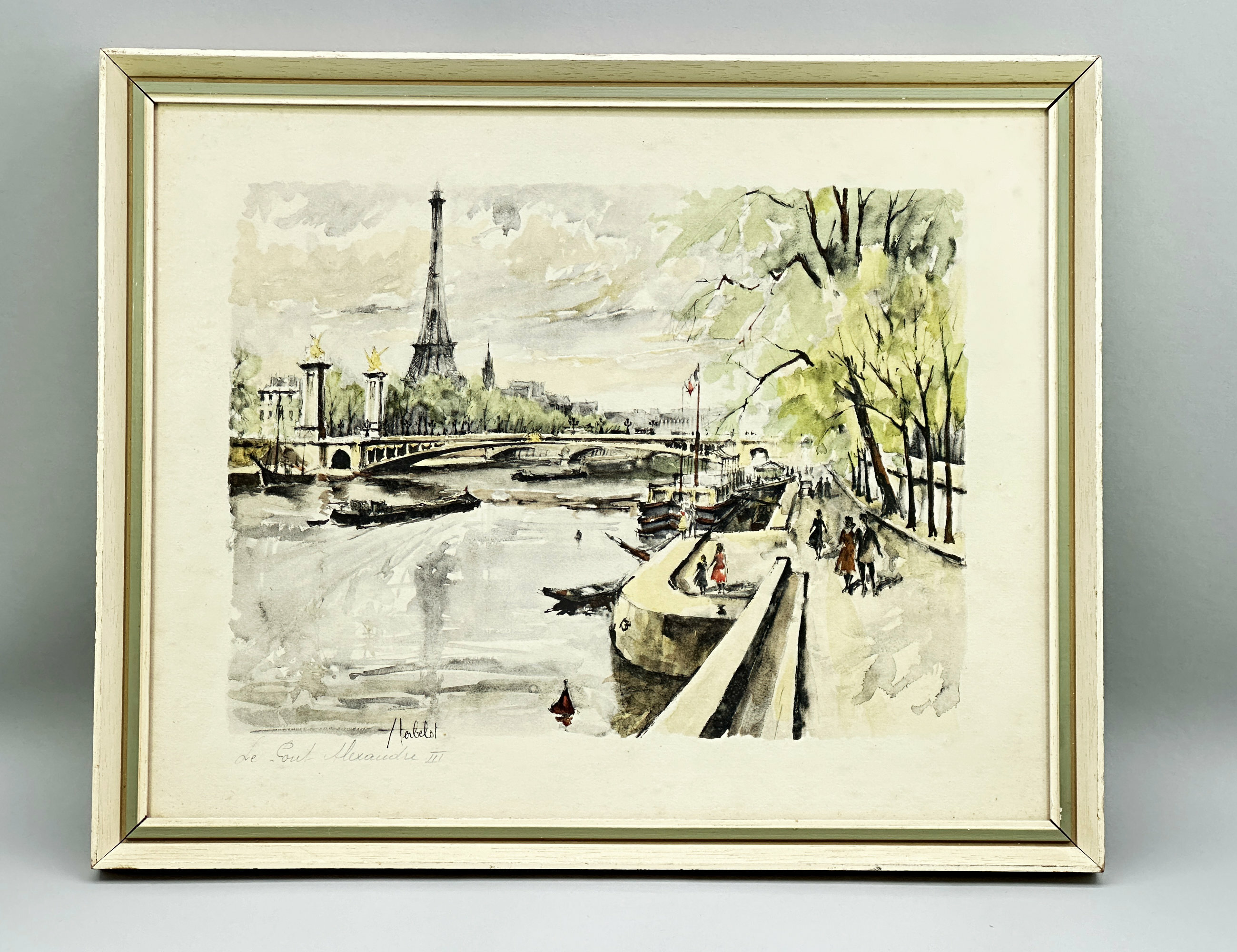
Lithograph Print, Le Pont Alexandre III in Paris, signed Herbelot, 1950s/1960s
Price: £45
Massive Victorian Carnelian Cameo Shell
Price: £55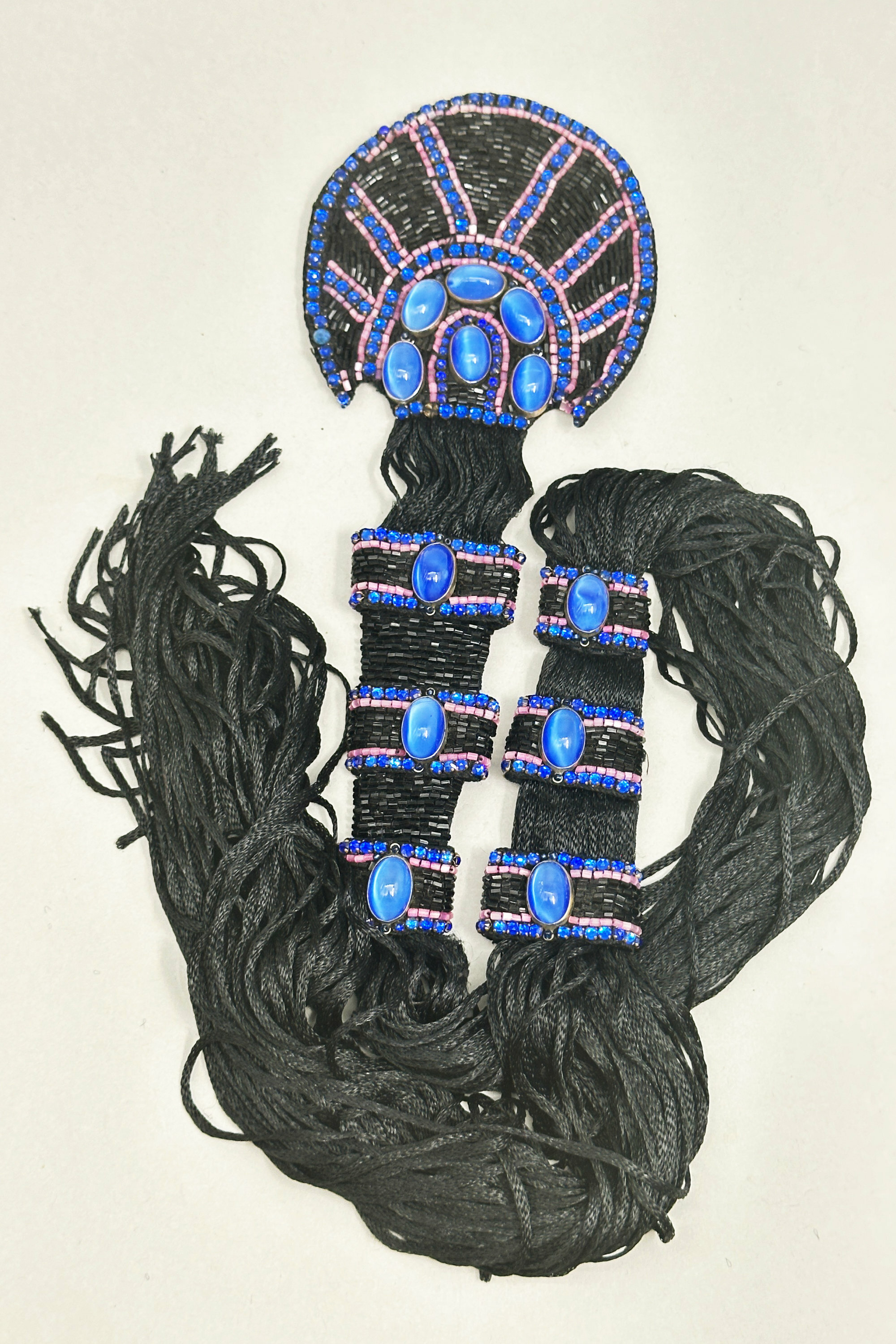
Art Deco beaded dress adornment
Price: £30
Victorian tortoiseshell hair ornament
Price: £20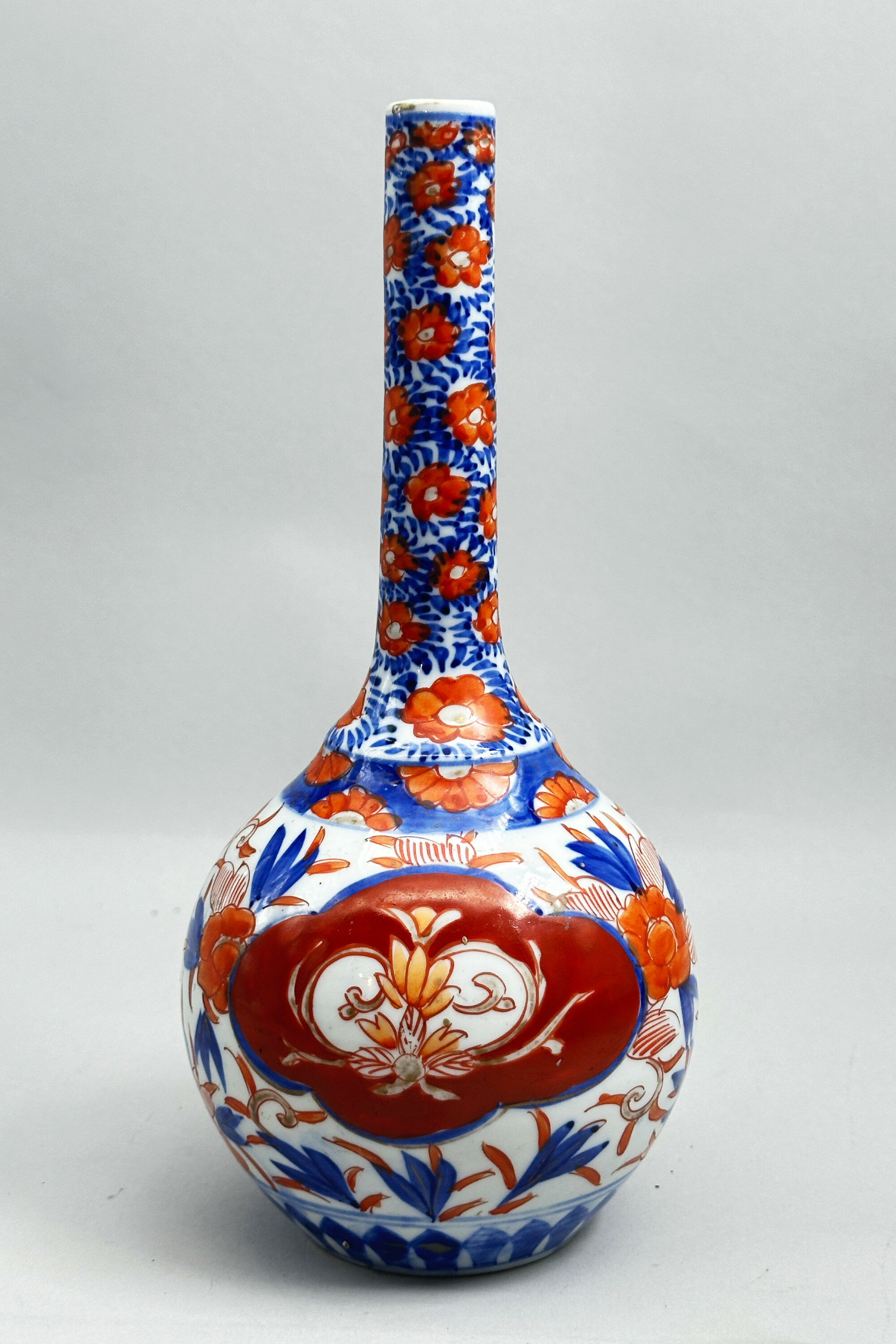
Japanese Imari Bottle Vase, circa 1900
Price: £30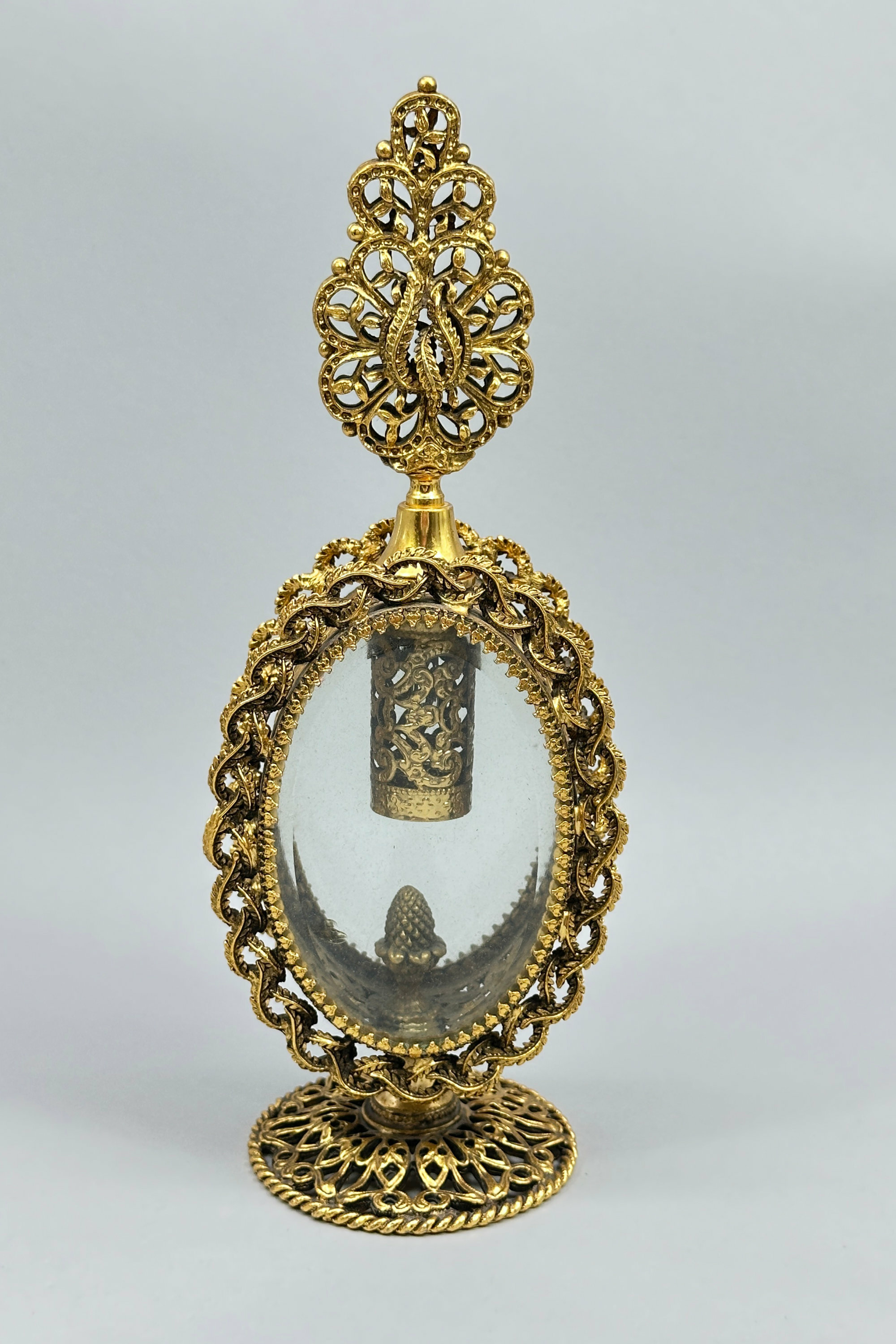
Hollywood Regency Ormolu and Glass Scent Bottle, second half C20th
Price: £95
Continental Earthenware Vase with geometric motifs in the style of Amphora, C20th
Price: £45
Two Wood Boxes : Marriage of Charles and Diana, Birth of Prince William, late C20th
Price: £15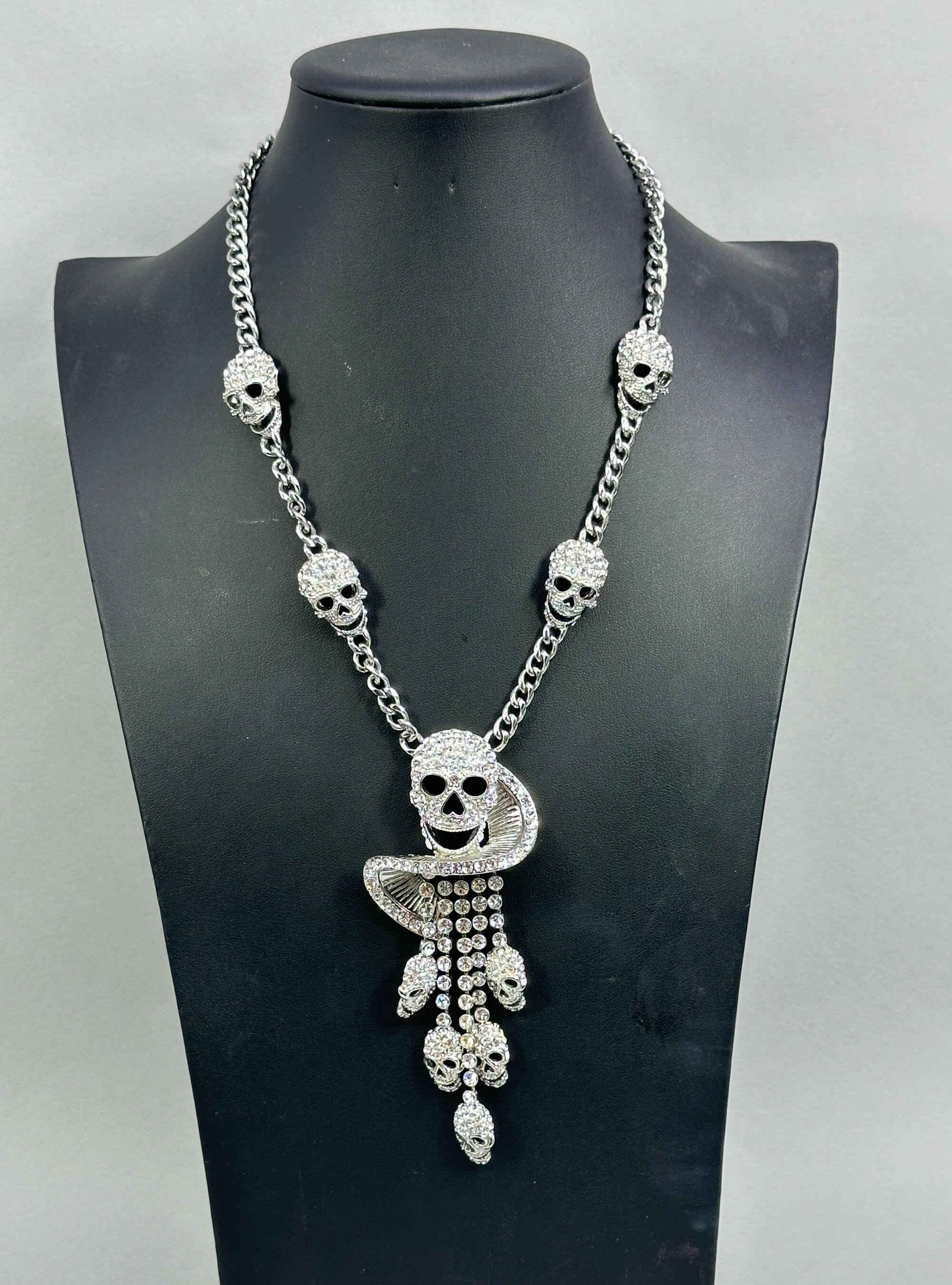
Butler and Wilson Skull Necklace, boxed, modern
Price: £125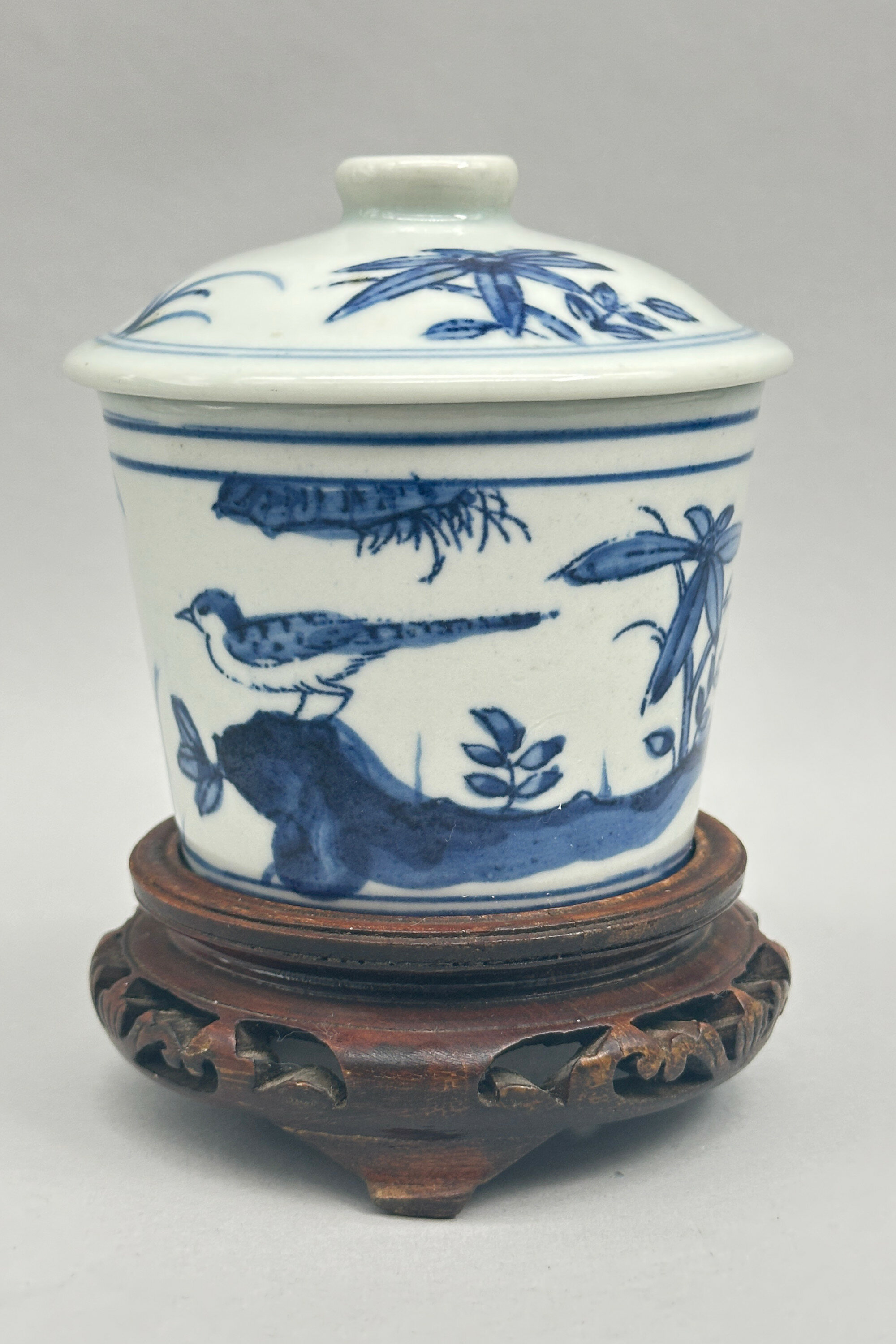
Chinese Small Blue and White Potiche and Cover with wood stand, late C20th
Price: £45
1950s Ocean Themed Earrings
Price: £15
Rare Ermani Bulatti brooch 1980s
Price: £45
Chinese Bone Netsuke carving of a man holding a musical instrument, early C20th
Price: £25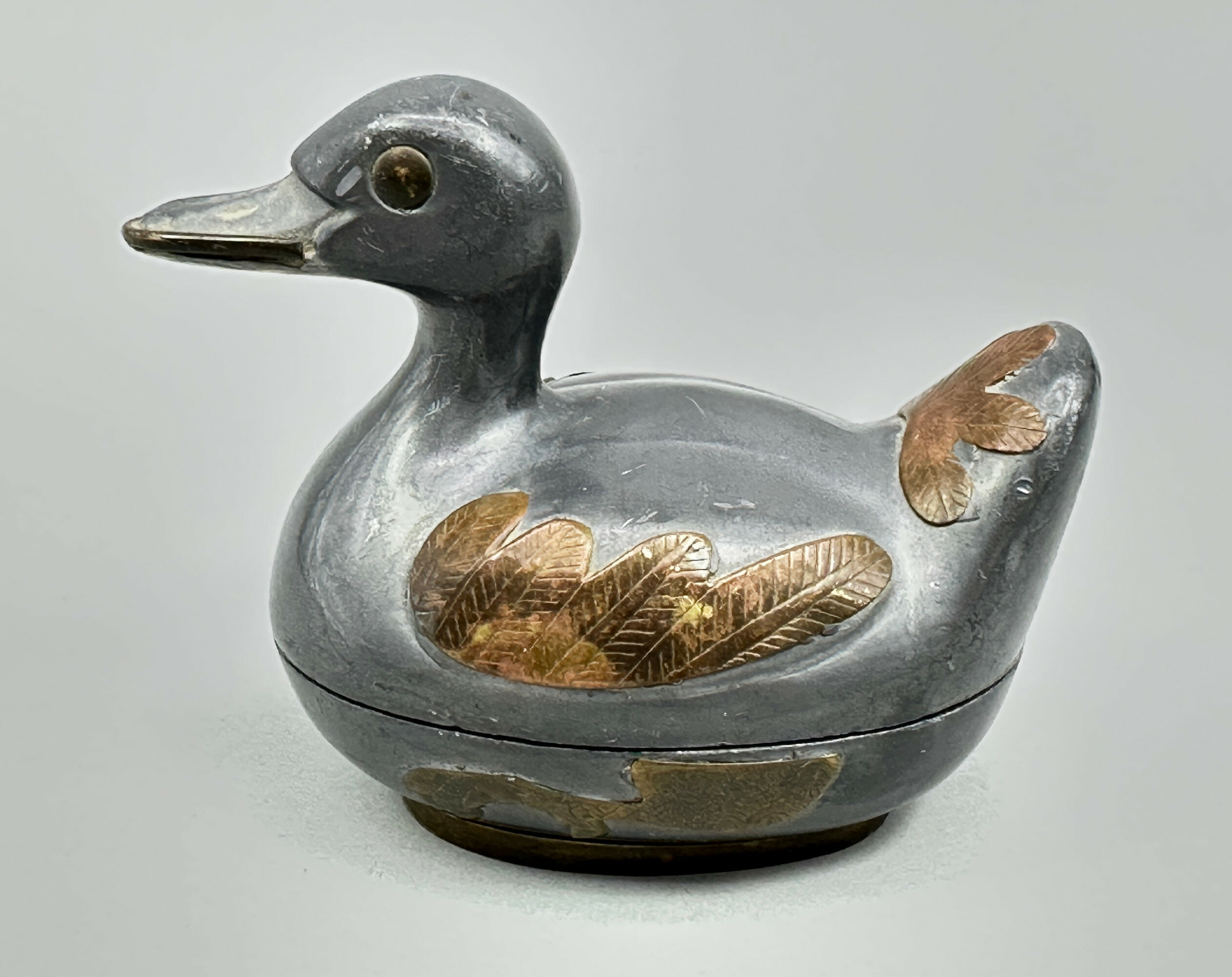
Pewter and brass box and cover in the form of a Mallard Duck, Gatco, Hong Kong, 1960s
Price: £25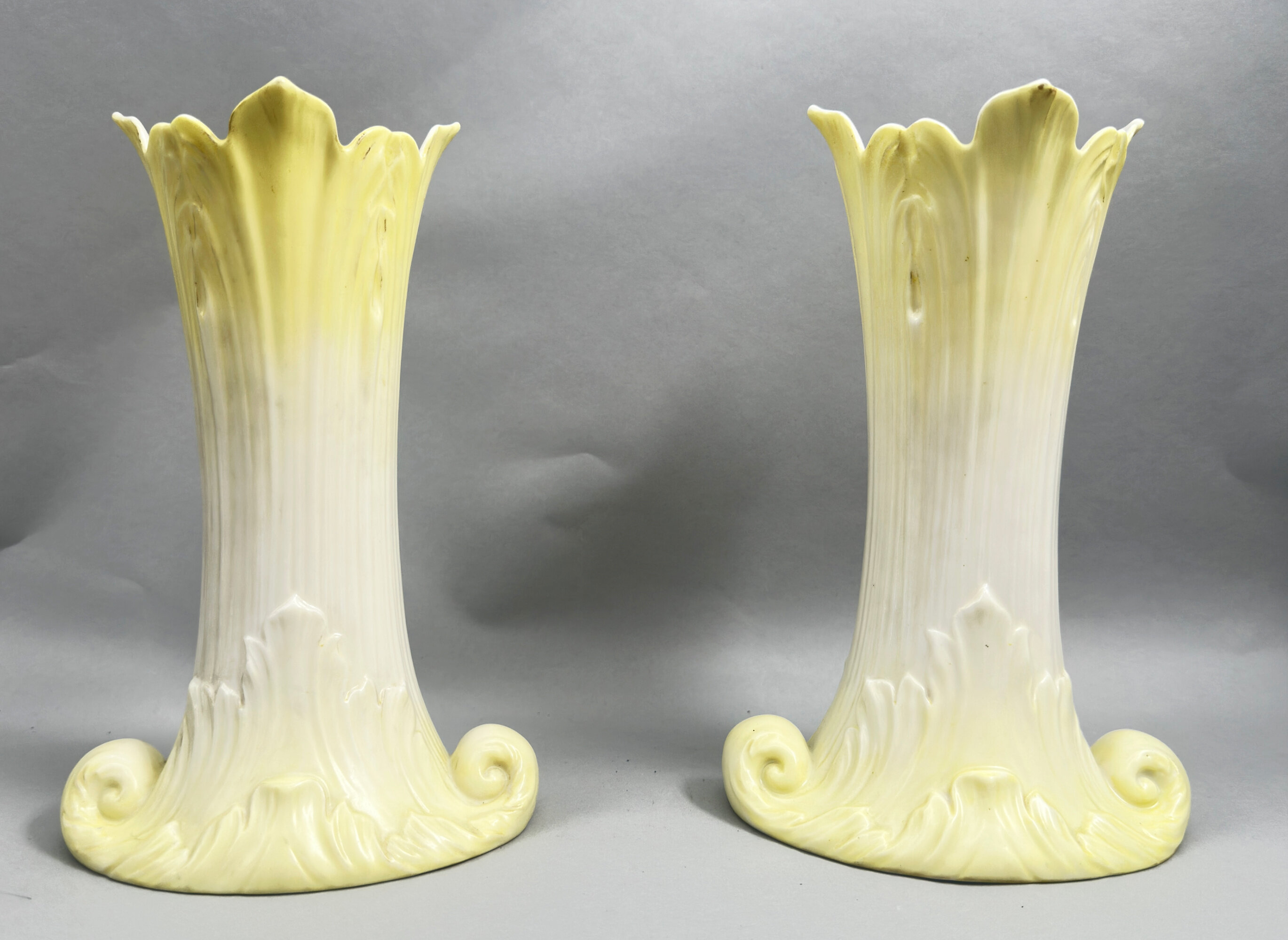
Pair of Royal Worcester Grainger and Co Vases, date mark for 1902
Price: £150The influence of the Art Nouveau movement, with its emphasis on organic and plant forms, is clearly seen here. The vases date to the early 1900s and were made by the ‘Grainger and Co’ branch of the celebrated Royal Worcester factory. The first porcelain factory at Worcester was set up in 1751 by John Wall (a doctor) and William Davis (an apothecary), along with 14 other businessmen. Fifty years later in 1801 Thomas Grainger (1783–1839) started a rival company ‘Grainger’s Worcester Porcelain’ and during the nineteenth century both companies traded successfully. However following the death of George Grainger, the son of Thomas Grainger, in 1889 the Grainger factory was sold to Royal Worcester who continued manufacture on its old rival firm’s St.Martin’s Gate site until finally closing the works in 1902. Ivory style porcelains were one of the specialities of this brief manufacturing period and the date mark ‘L’ which appears on these vases is for the year 1902, just before the two concerns were completely merged.

Edwardian Scottish agate panel bracelet
Price: £75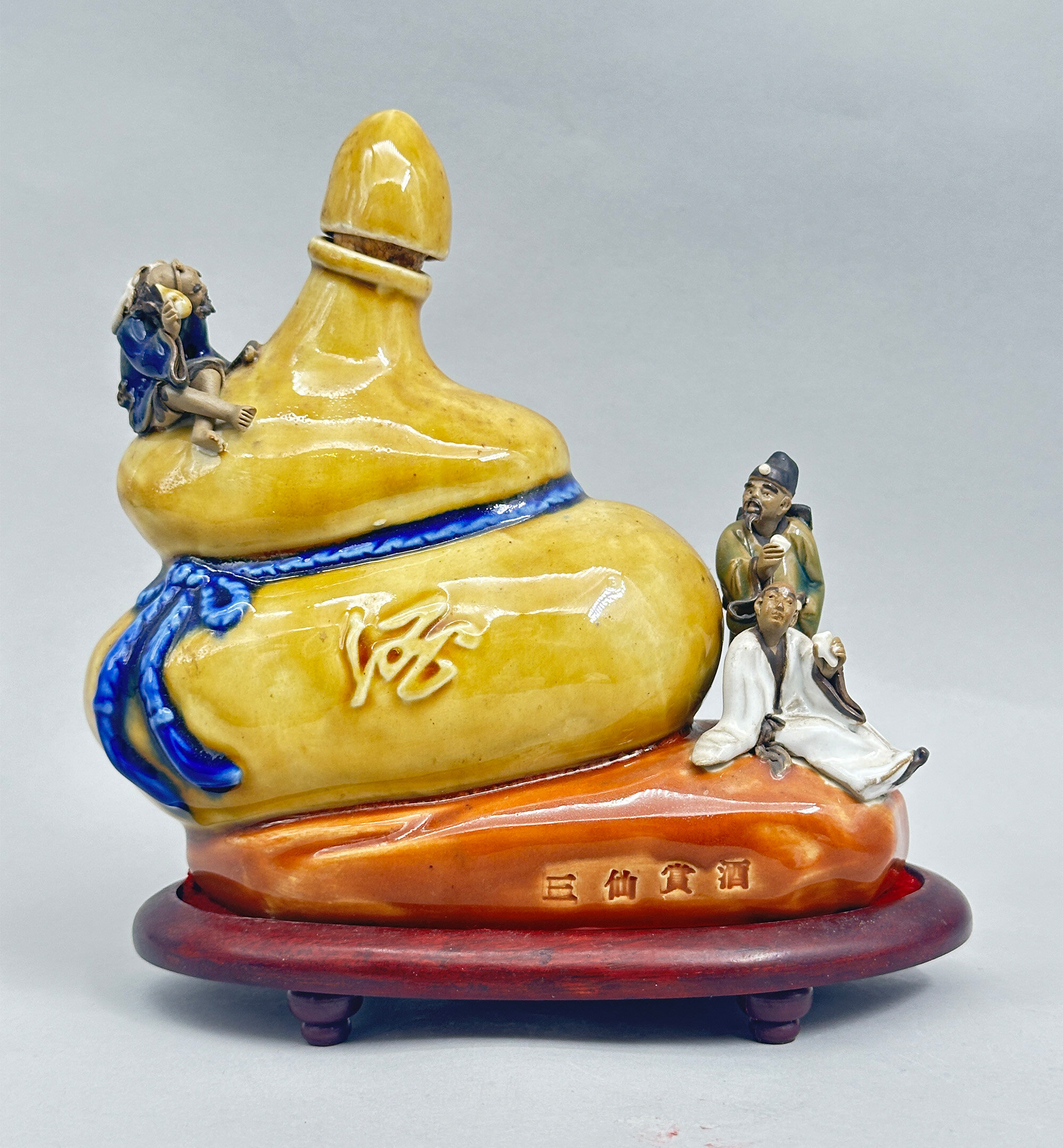
Chinese Qu Wine Decanter, Sam Seng Wine Co, late C20th
Price: £35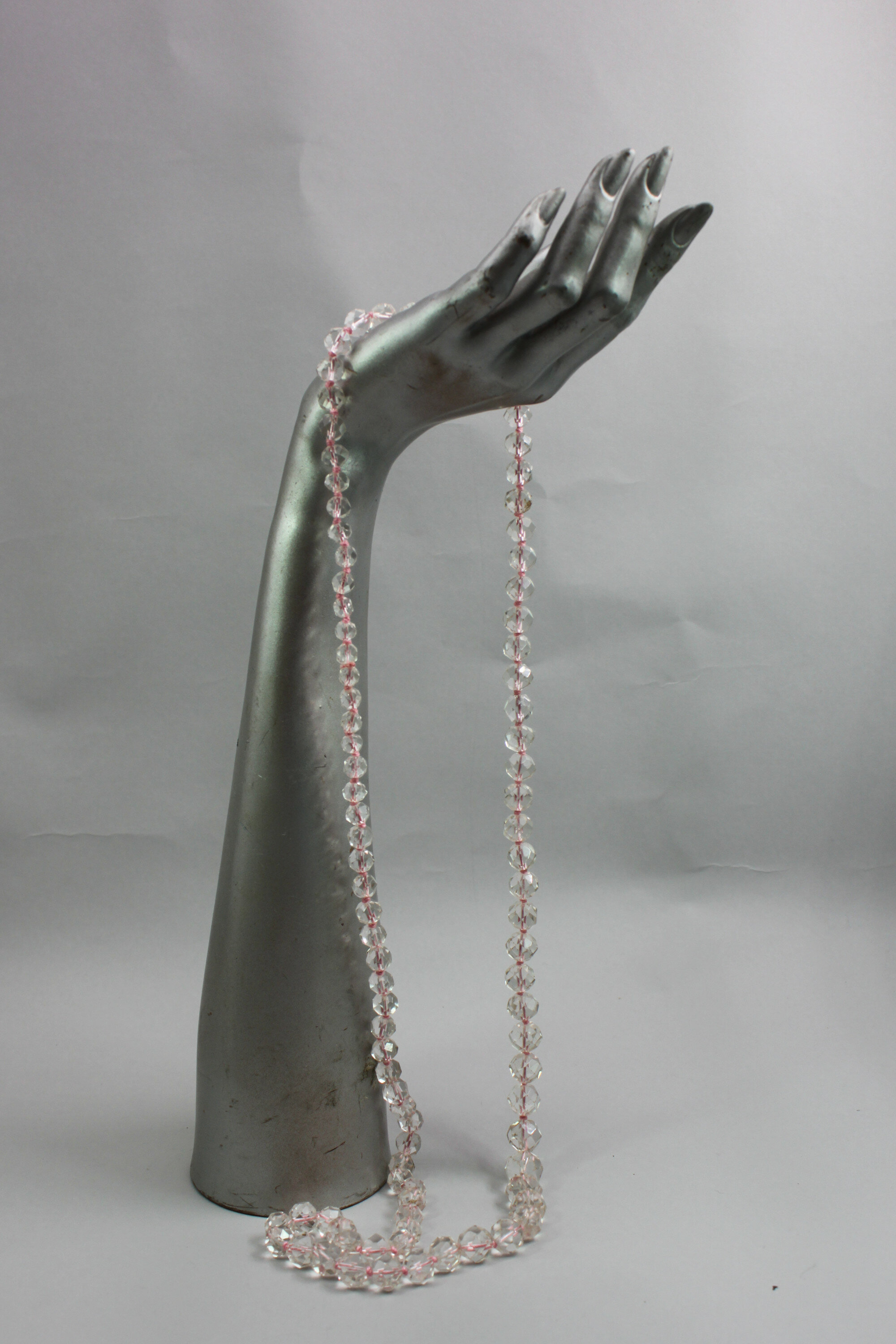
Stunning opera length string of rock crystal beads
Price: £35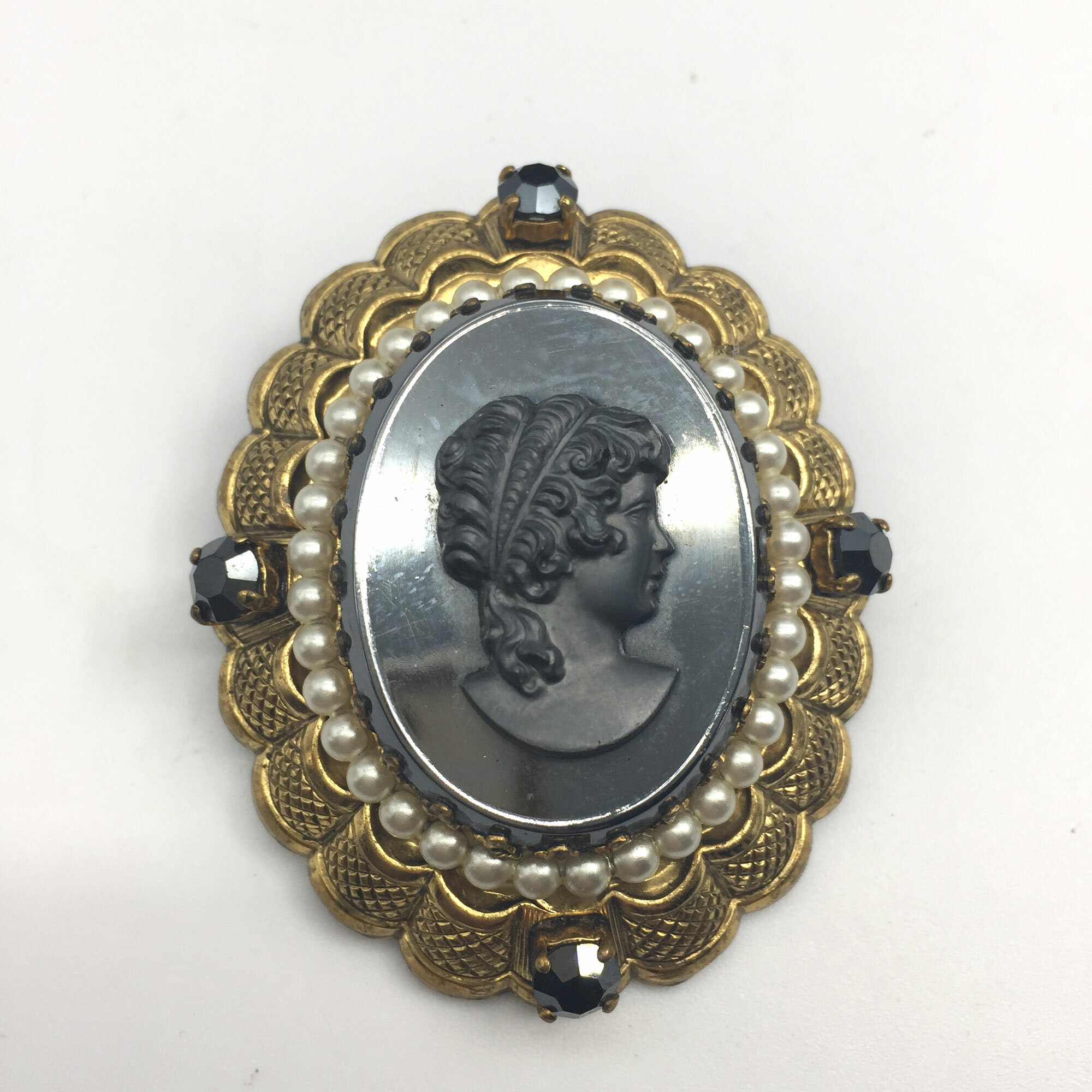
Large costume cameo brooch, marked W. Germany
Price: £15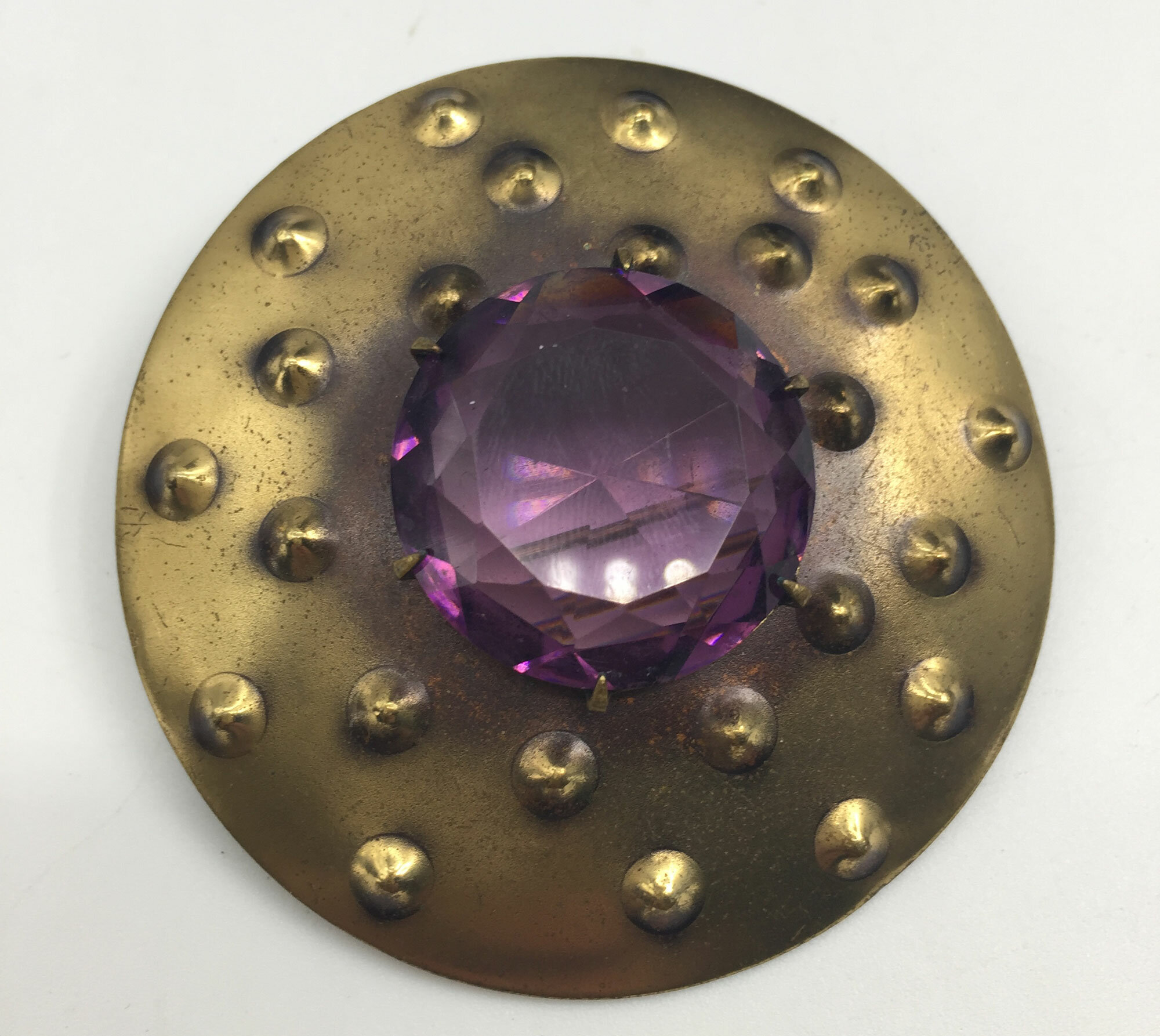
Art Deco Scottish shield brooch
Price: £20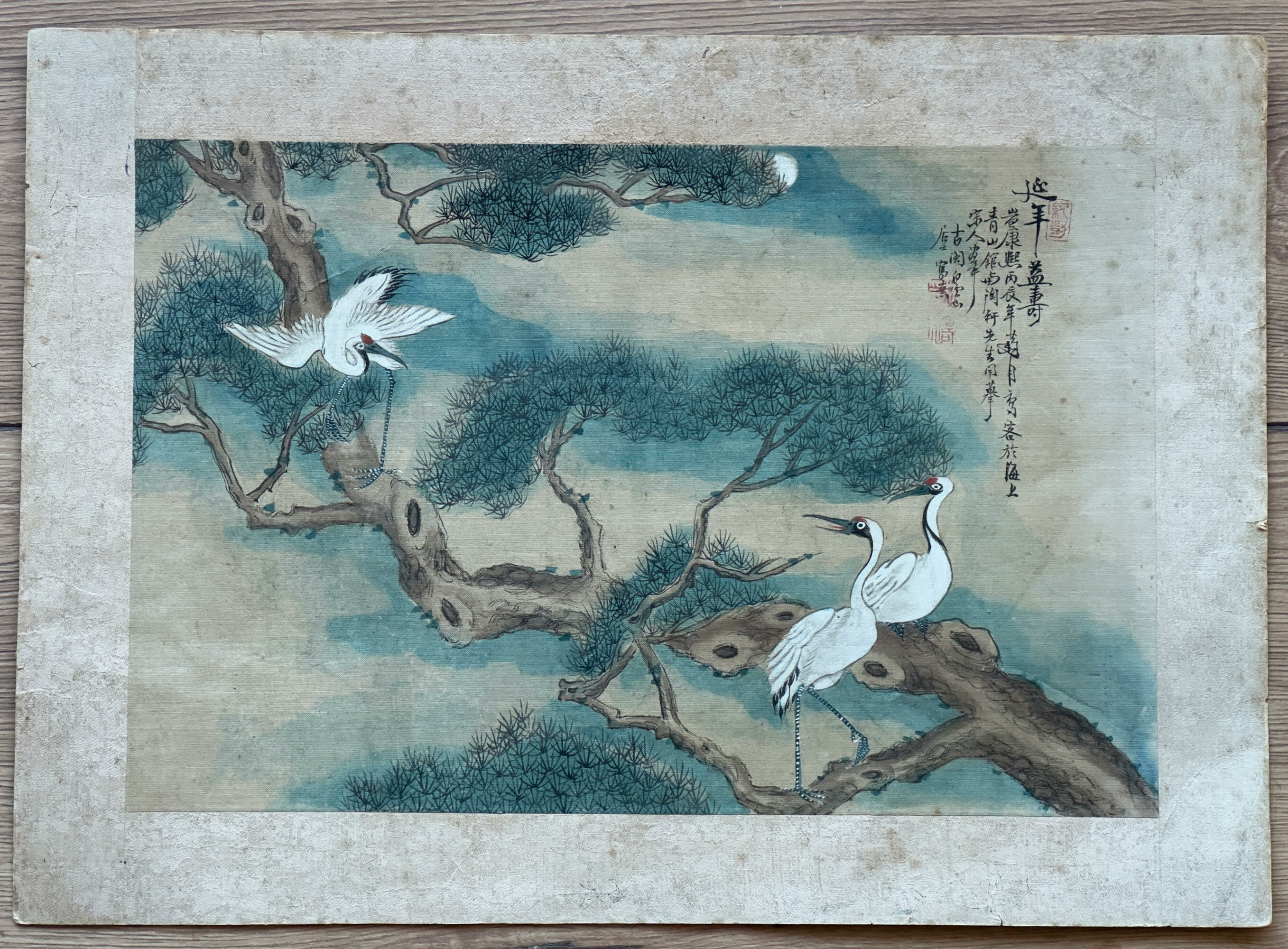
Chinese painting on Silk, Storks and Pine, circa 1900
Price: £25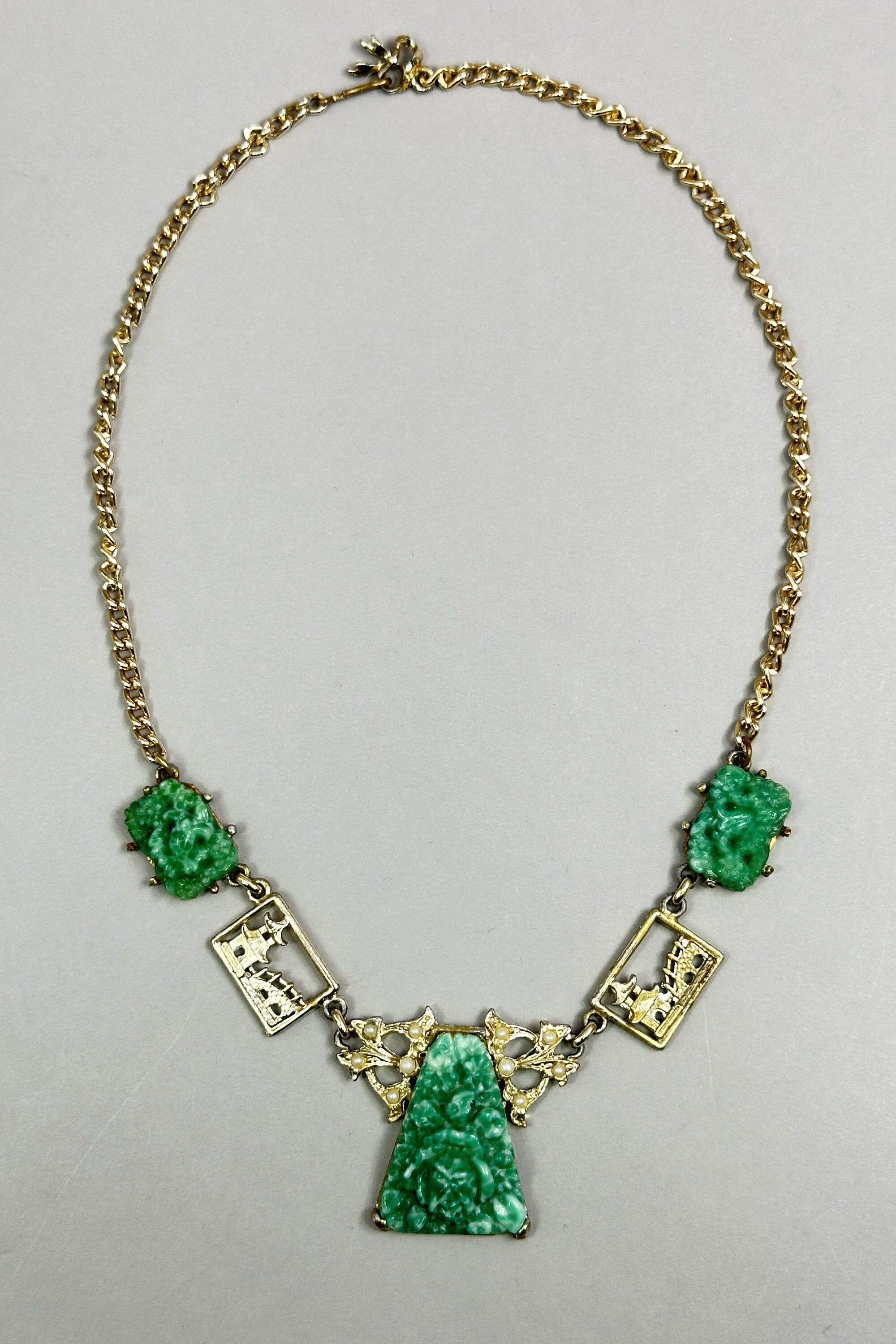
Chinoiserie necklace with peking glass plaques c1960
Price: £45
Silver Brooch in the form of a Butterfly, Taxco 1940s
Price: £65
Tigers Eye bracelet with a large central carved dragon bead, certificate for 2012
Price: £15PLEASE NOTE THAT THERE IS FREE UK SHIPPING ON THIS ITEM. For international buyers the shipping cost will be reduced by the UK shipping cost, so don't worry if you are outside the UK, you still receive this benefit!
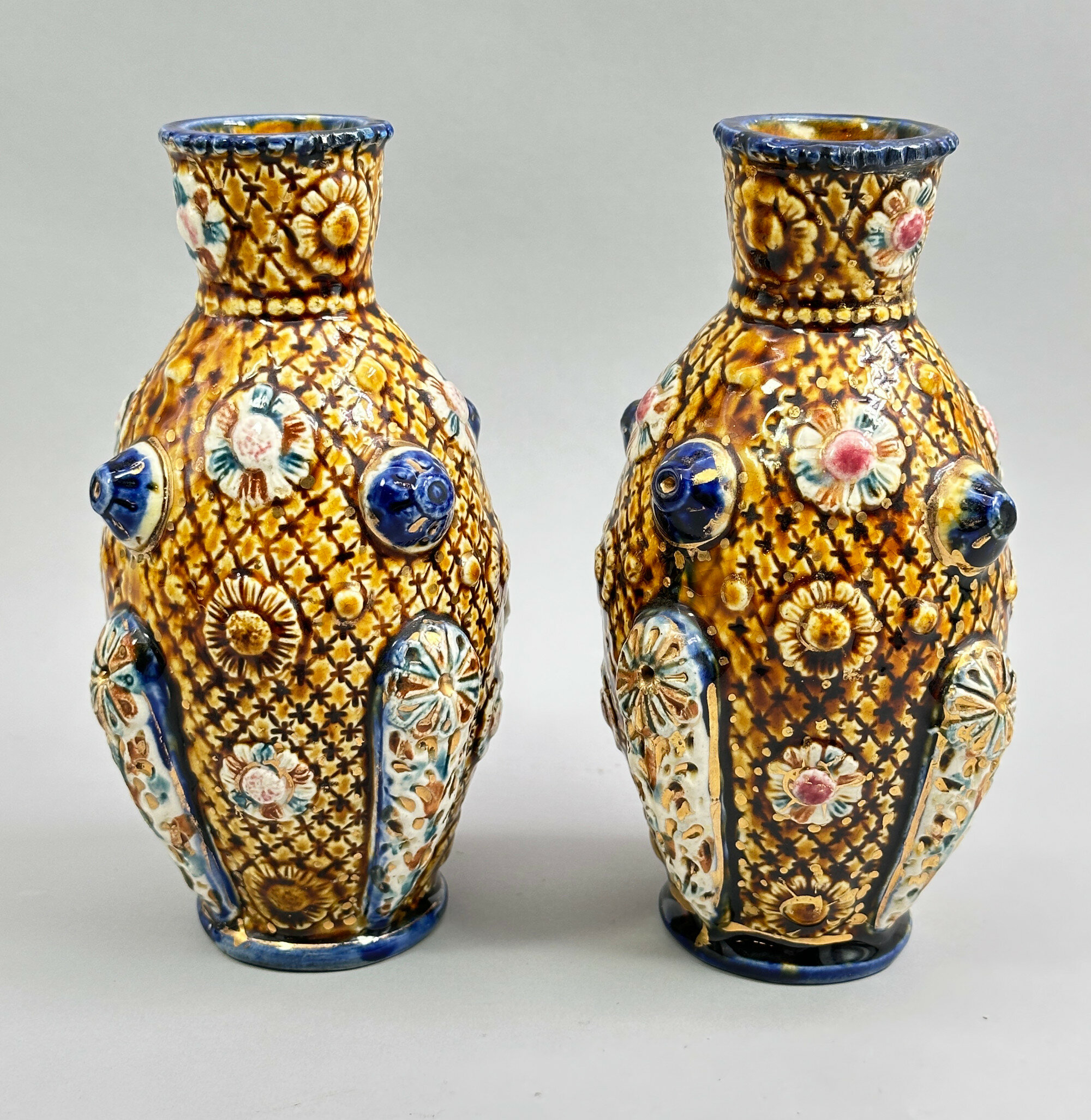
Pair of Alhambrian Ware English Majolica Vases with raised decoration circa 1880
Price: £30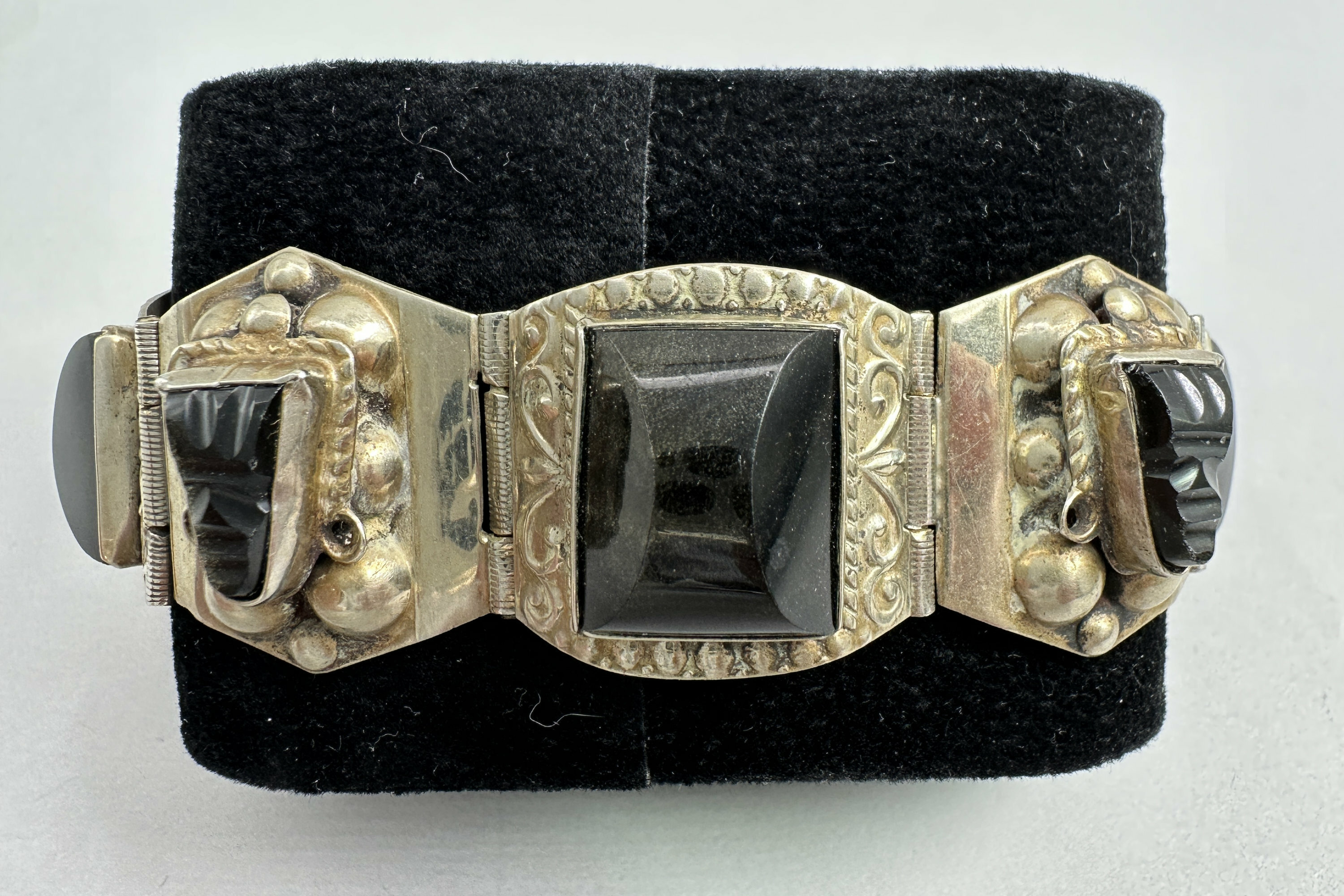
Taxco bracelet set with carved obsidian stones c1950
Price: £55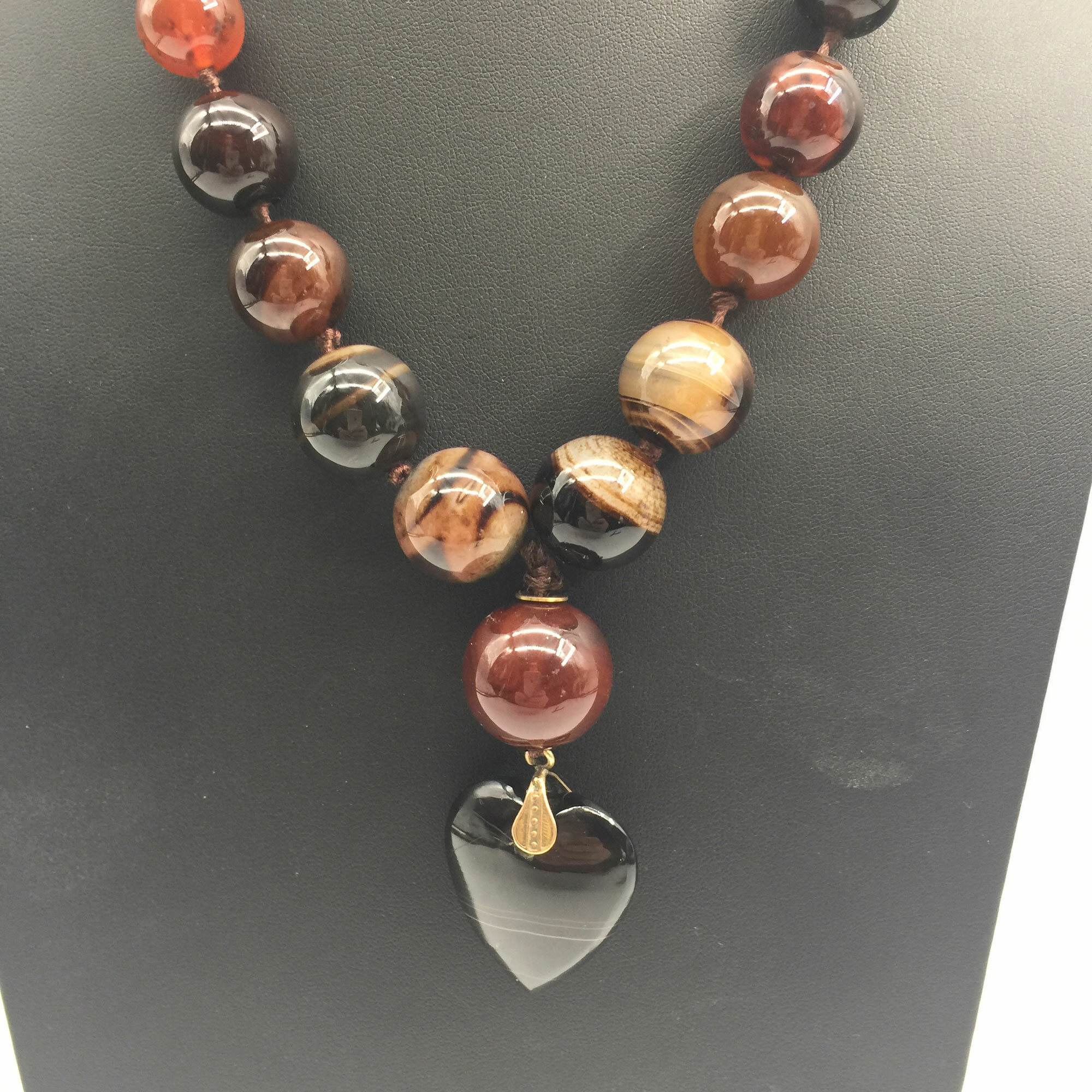
Stunning Victorian Scottish agate necklace
Price: £175
Stunning Amber and Islamic silver necklace
Price: £45
A Pair of Royal Doulton Ewers, marked, early C20th
Price: £150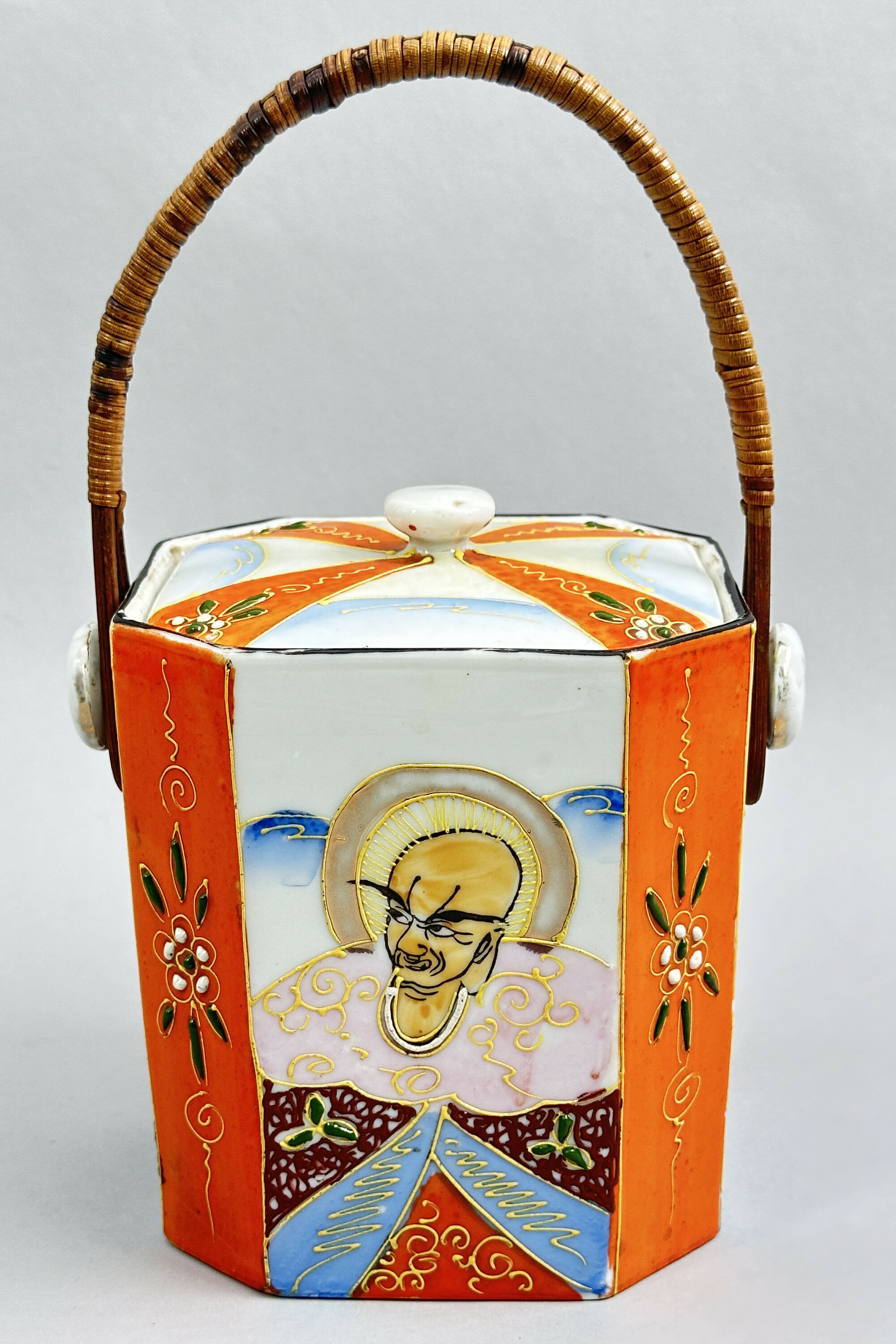
Japanese Samurai China Biscuit Box and Cover, C20th
Price: £25
Large graduated necklace of nut carving beads, 1930s
Price: £25
Statement fob brooch with large faux citrine drop c1950
Price: £15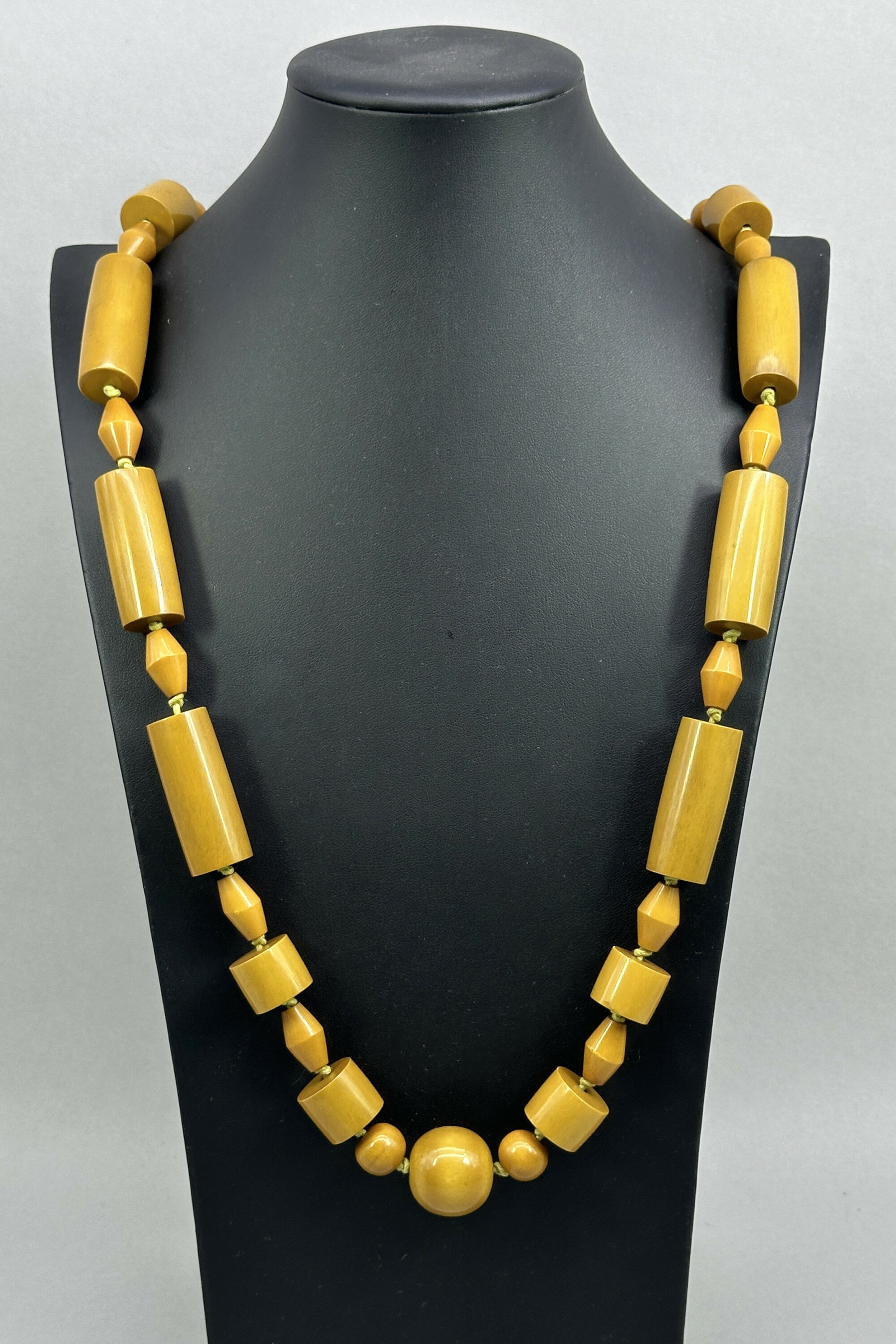
Art Deco Catalin Bakelite necklace, American c1930
Price: £125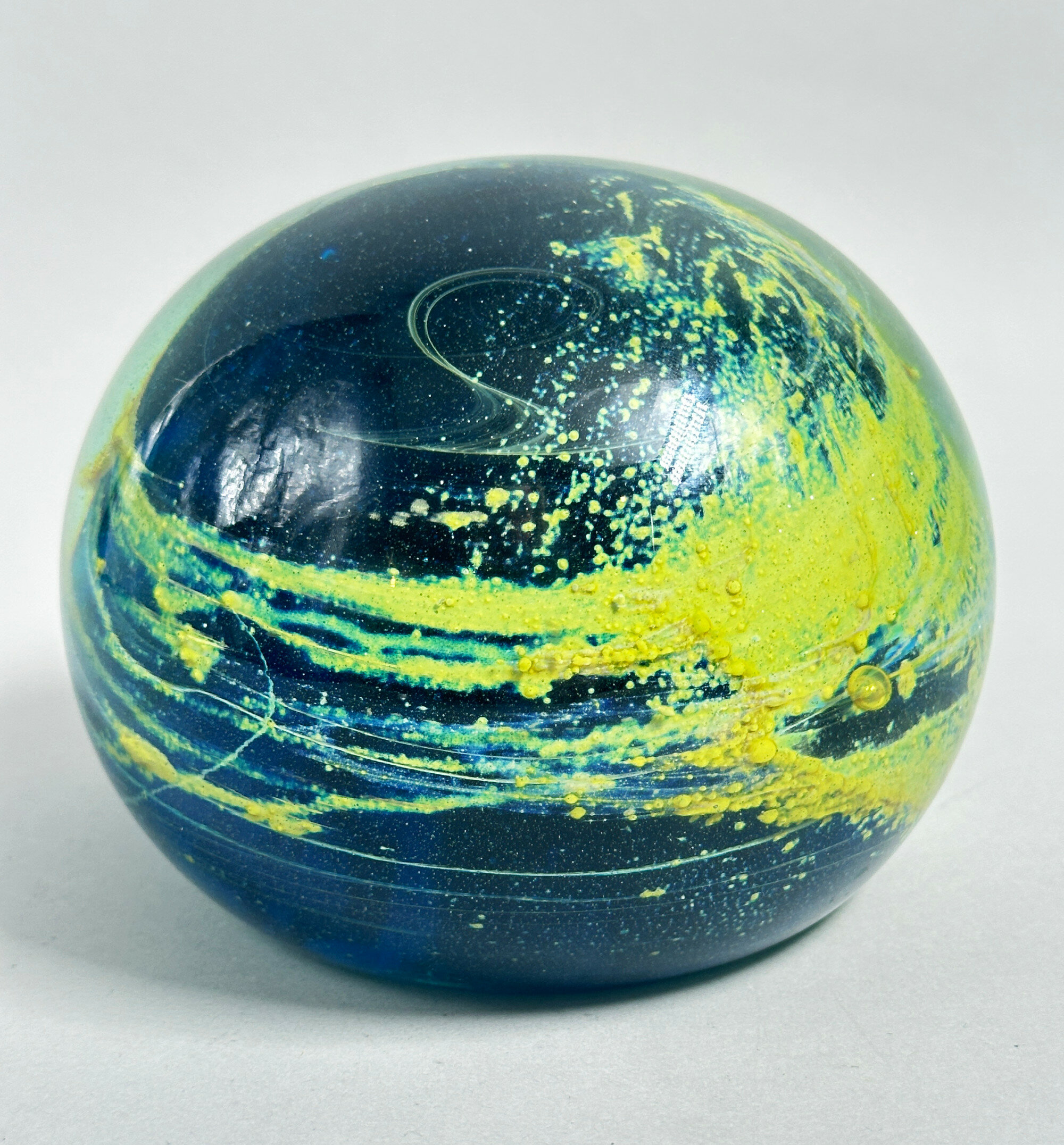
Large Mdina Glass Paperweight/Doorstop, late C 20th
Price: £55
Pair of Japanese Prints, C20th
Price: £25PLEASE NOTE THAT THERE IS FREE UK SHIPPING ON THIS ITEM. For international buyers the shipping cost will be reduced by the UK shipping cost, so don't worry if you are outside the UK, you still receive this benefit!

Turquoise Native American Cuff Bracelet, 1960s
Price: £95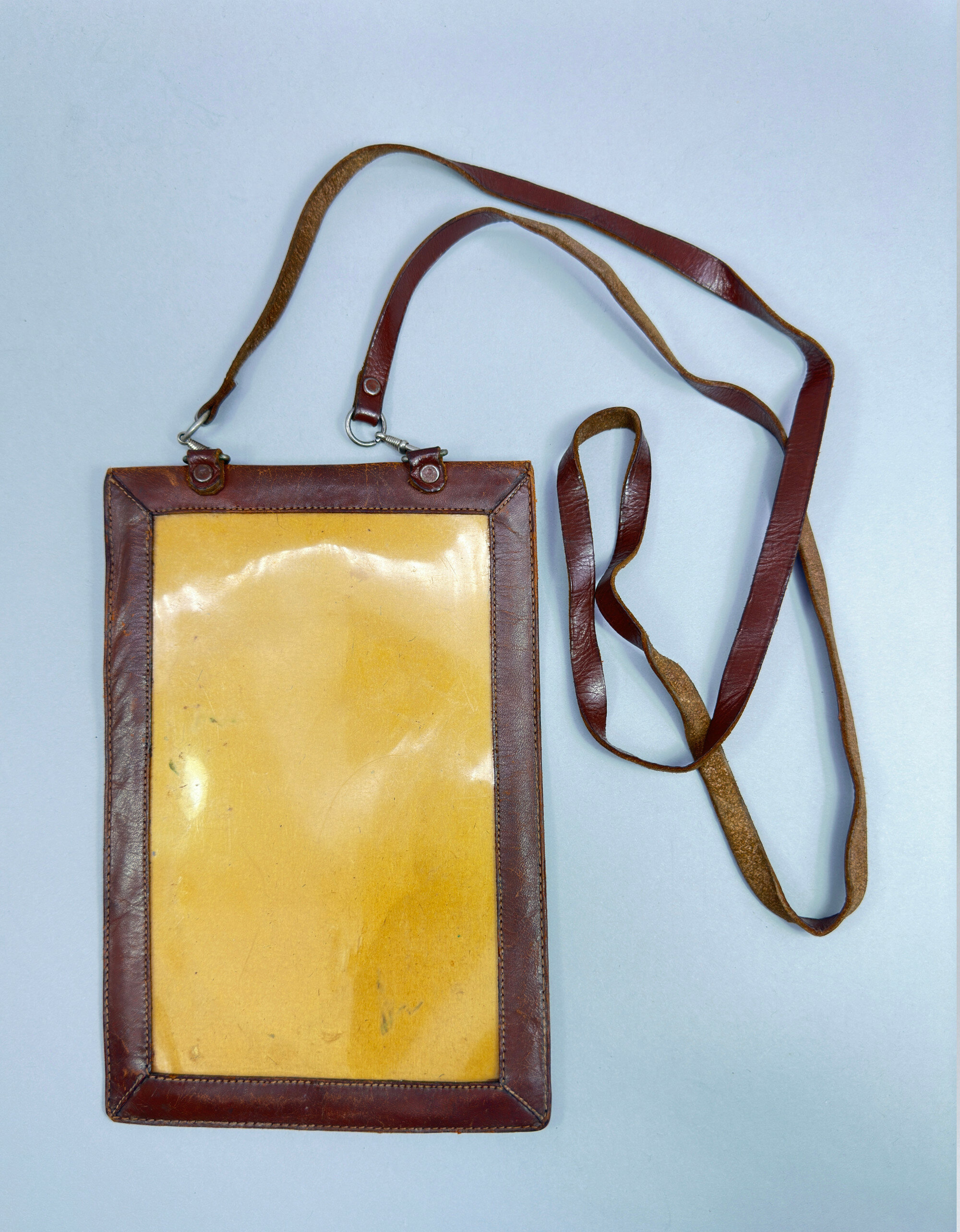
Vintage Leather Map Case, probably 1940s
Price: £45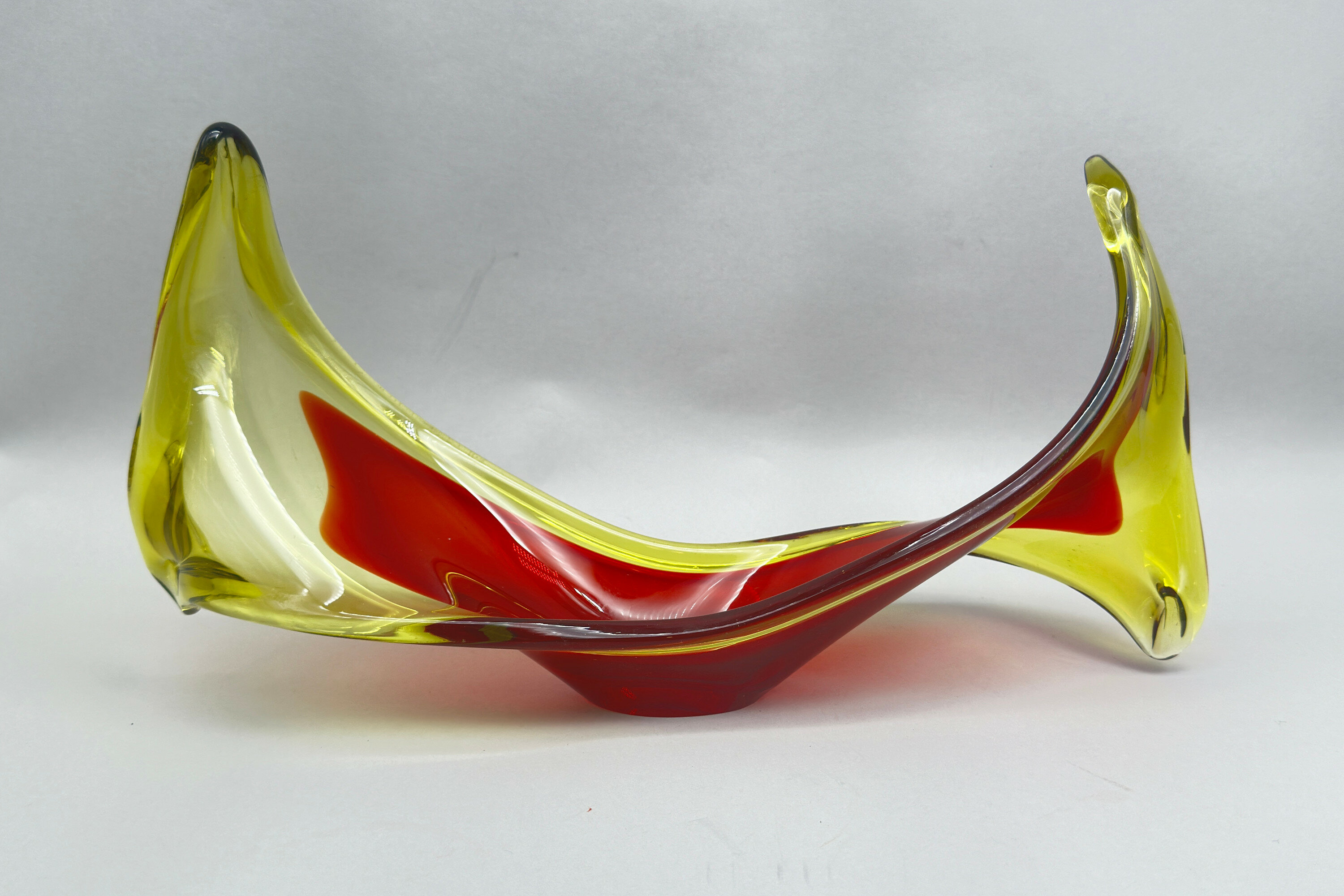
Viartec Murano Style Selenium Red & Orange Glass Sculptural Dish, Spanish 1950s/1960s
Price: £45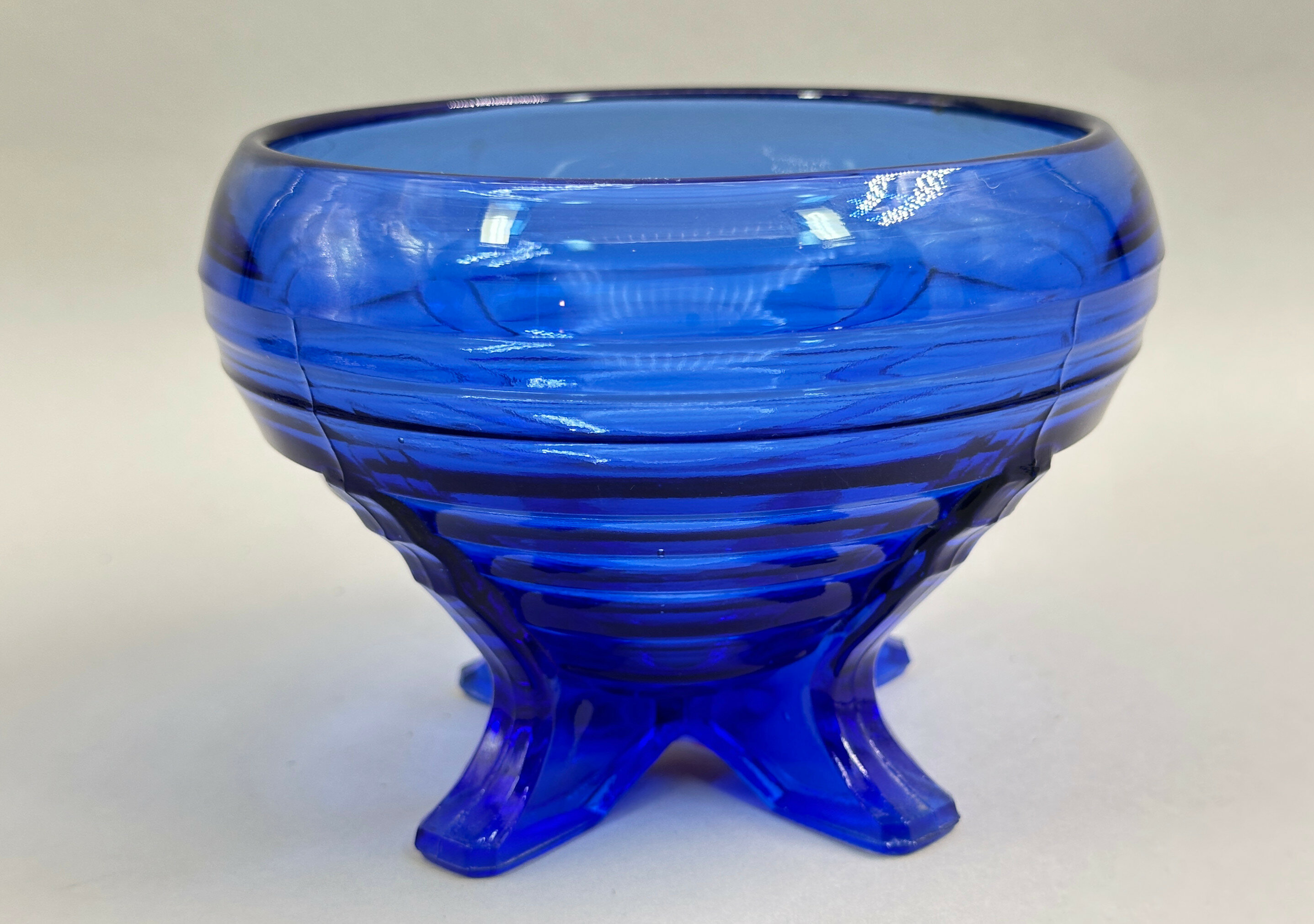
Sowerby Blue Glass Footed Bowl, 1930s/1940s
Price: £25The Sowerby family came from the North West of England near Carlisle and settled in Gateshead in the late eighteenth century. The firm Sowerby Glassworks is known from 1807 onwards and continued production until 1972, concentrating on pressed glass. Catalogues of their wares still exist and they produced pieces in a wide variety of styles and shapes which retain their popularity today.
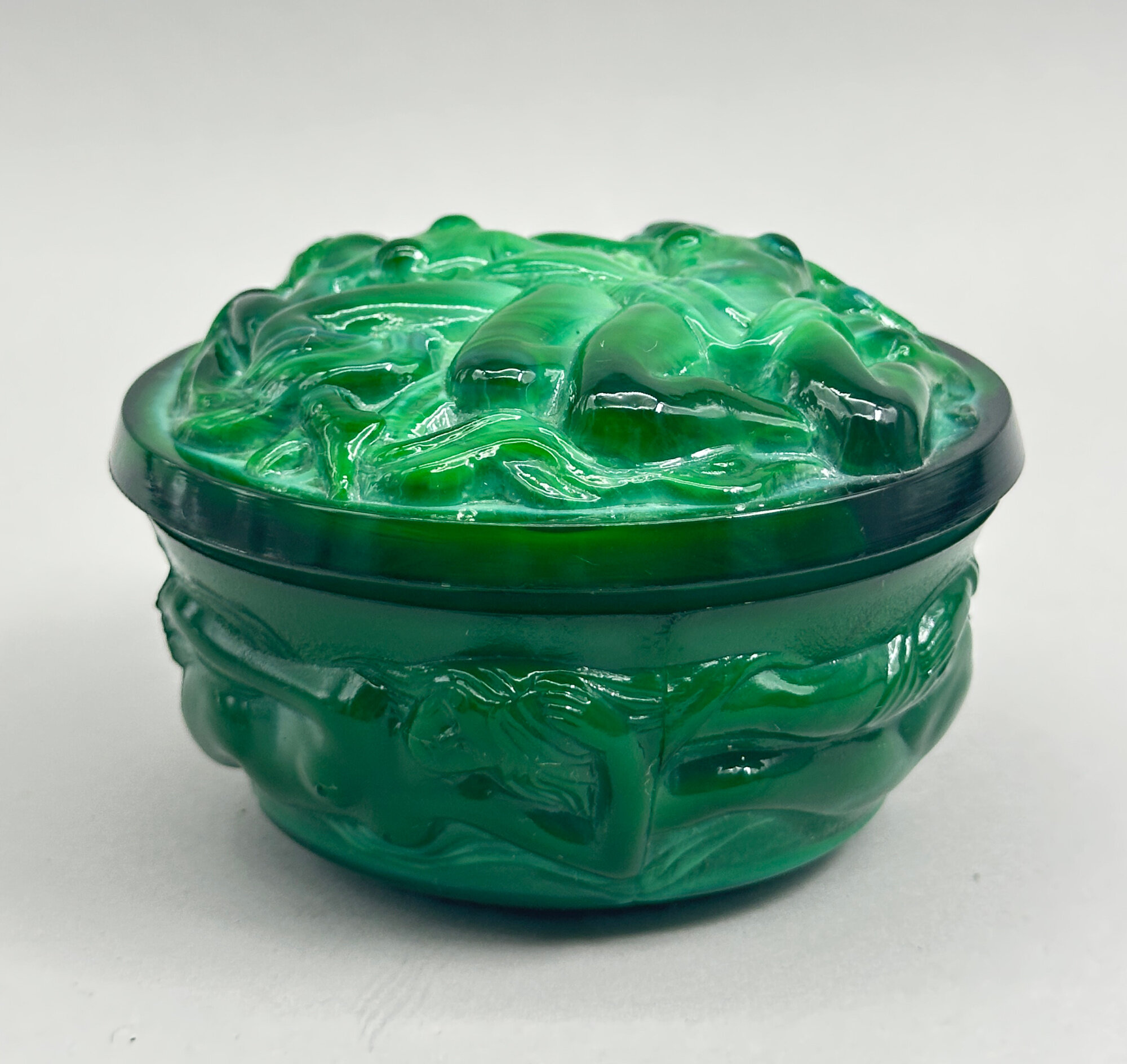
Art Deco Style Malachite Glass Box and Cover, Hoffmann & Schlevogt, C20th
Price: £55Heinrich Hoffmann (1875 – 1939) and Henry Schlevogt (1904 – 1984) were relatives as well as business partners, Schlevogt having married Hoffman’s daughter. They worked together on a variety of designs and from the moulds they produced came pieces exclusively pressed by the family glassworks of Josef Riedel established in Polaun (Polubný), Bohemia. The collection was marketed under the brand name ‘Ingrid’ and had an immediate success in Europe and the United States, being introduced at the Spring Trade Fair in Leipzig in 1934 and later in the same year presented at the Chicago World’s Fair. Hoffmann died around the time of the beginning of the second world war but Schlevogt remained in Bohemia until his capture by the invading Red Army in 1944. Eventually rescued through the intervention of influential friends, he settled in Paris and in the 1950s founded a highly successful wholesale business trading in crystals and glassware which he sold in 1972. The Czechoslovak government meanwhile nationalised the glass industry after World War II and some of Schlevogt’s moulds were reused with pressings known from the 1970s made as before at the glassworks of Josef Riedel.
Dating of the pieces is extremely difficult since the later versions resemble the earlier ones so closely and there are few firm guidelines. But the example here, even if there is the possibility that it does not date to the 1930s, is an extremely accurate reflection of the model types produced. The design is striking with the malachite effect glass formed into a two section box the deep base fitted with a shallow domed lid and both parts decorated with naked ladies swimming amidst waves in a swirling design of life and movement. The joins of the moulds can be clearly seen at the sides (see images 8 & 9). The style is quintessentially Art Deco and this is a ‘must have’ for collectors of pieces from that era.
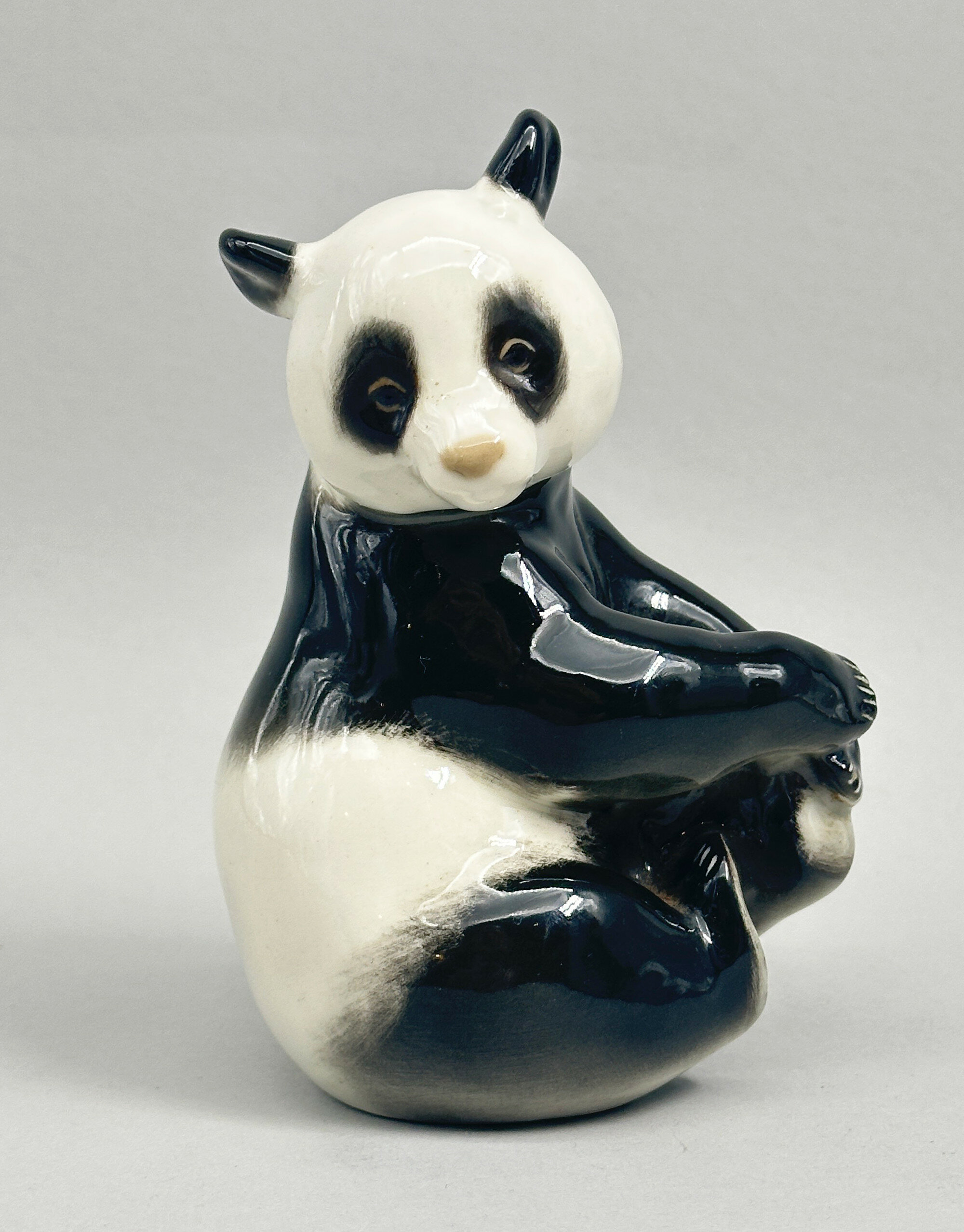
Porcelain Figure of a seated Panda, Lomonosov, USSR late C20th
Price: £25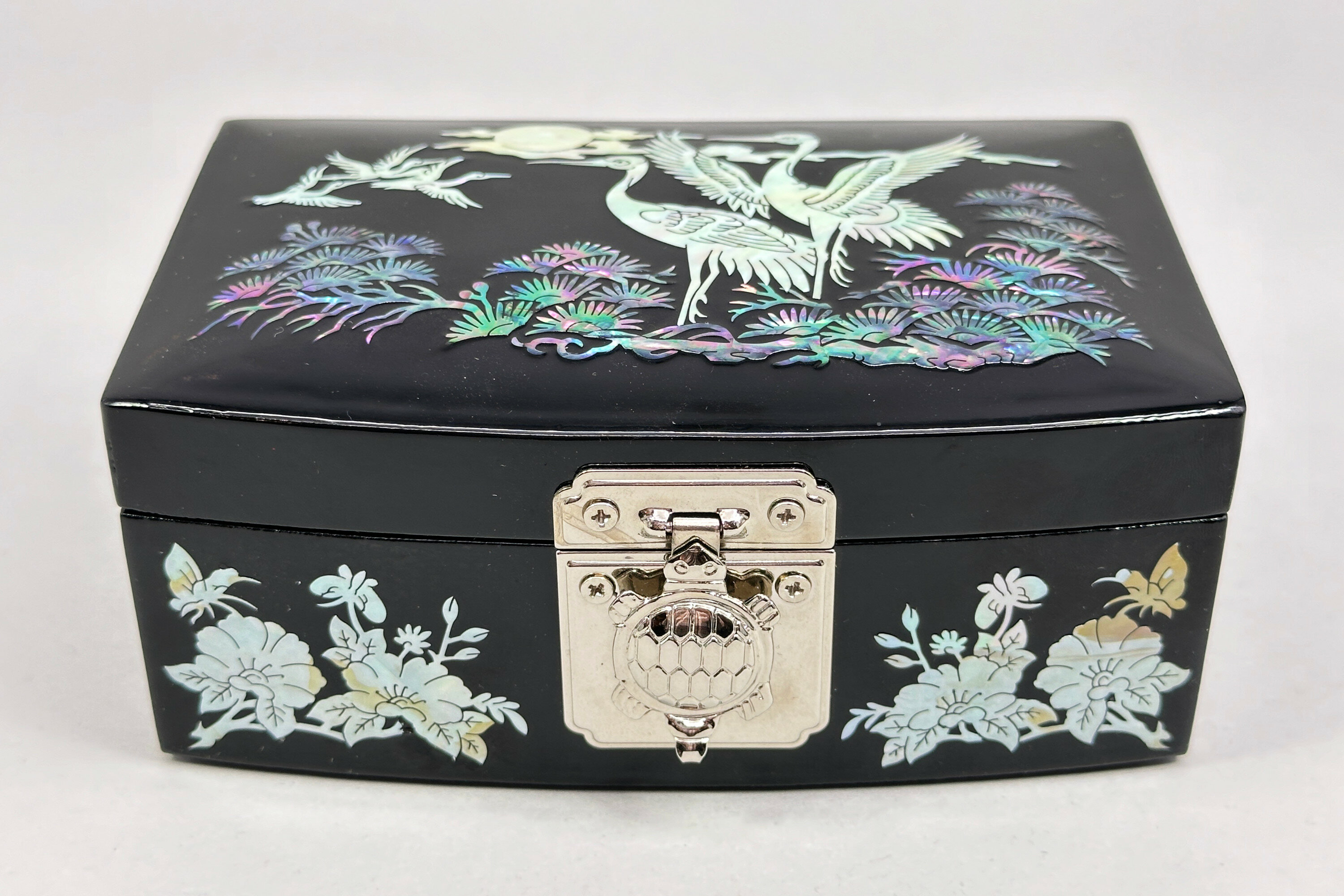
Korean Najeonchilgi lacquerware jewellery Box, C20th
Price: £25
Antqiue Scottish agate specimen brooch/pendant
Price: £55
Victorian Scottish agate brooch
Price: £65
Fun group of two porcelain brooches with paid of small earrings 1960s
Price: £15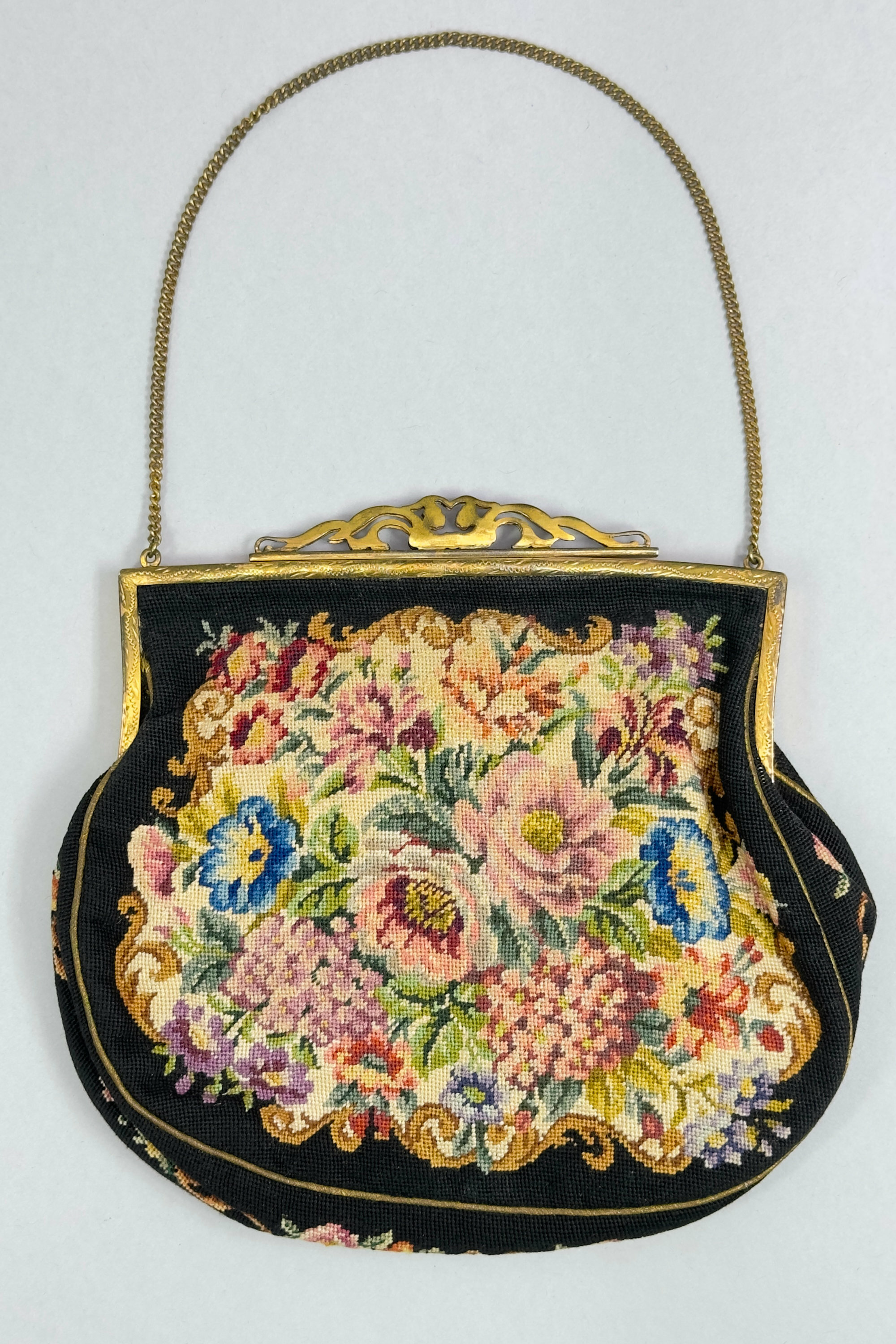
Vintage Petit Point Tapestry Bag, Austria, 1920s
Price: £15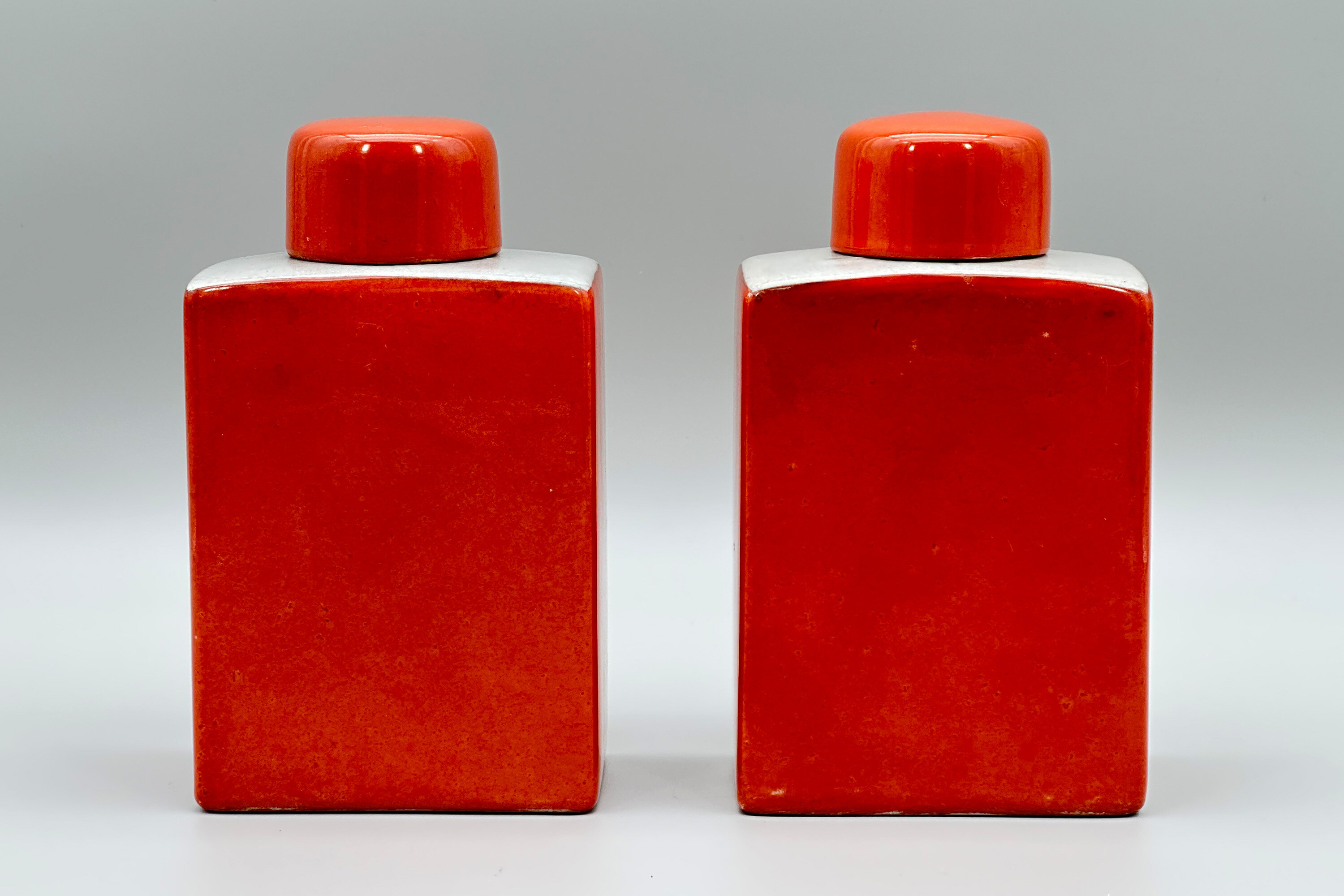
Pair of Orange Glazed Flasks and Covers, Fabienne Jouvin Paris, C20th
Price: £150The French designer Fabienne Jouvin (see image 9) graduated from the superior school of applied arts Duperré in 1985. Since then, she has travelled the world collecting designs for pieces sold and exhibited under her name internationally, with a studio based in Paris. On her website, she writes “From my travels - from Tokyo to The Habana, from the streets of Paris to the sea bed of The Maldives - I bring back sketchbooks, pads of notes, drawings and collages: hispanic or contempory architectures, faces reminding those of Piero Della Francesca, enigmatic objects non identified... These spontaneous sketchbooks give rise to unique pieces and editions painting, textile, porcelain, cloisonné...”. Her first exhibition was in 1989 and in 1996 she began an association with the firm ‘Asiatides’ allowing her to create pieces made in China and Thailand and utilising their designs and techniques.
This pair of flasks, possibly intended as tea caddies, are typical of her ability to give a ‘twist’ to the pieces from which she draws her inspiration. The shape is Chinese from the seventeenth century (see image 10), while the iron red colour is found on Chinese pieces two hundred or more years later. Combining this with a white ‘crackle glaze’, also well known from Chinese ceramics, was Jouvin’s own idea completing the mix of ancient and modern. Marked as from the Asiatides range with the stylised ‘A’, pieces like these are no longer available currently implying that they were probably made early on in her association with the firm and now have a uniqueness of their own.
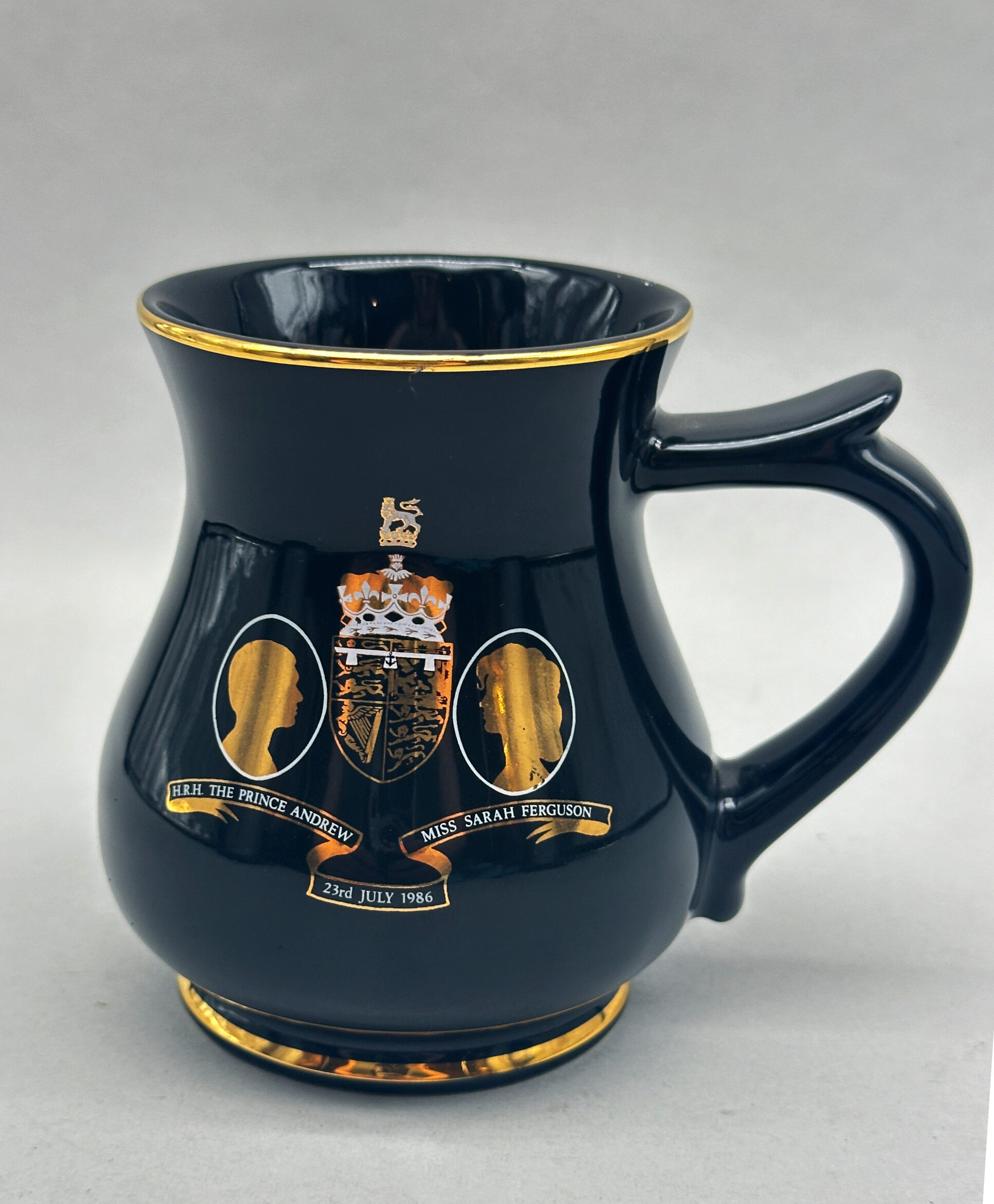
Ceramic Tankard celebrating the Marriage of Prince Andrew and Sarah Ferguson in 1986
Price: £10
Japanese Arita Dish circa 1880
Price: £45The town of Arita in the former Hizen Province, northwestern Kyūshū island was a major cente for the production of porcelains in Japan. Best known for blue and white pieces it also produced polychrome wares as well, including the familiar imari colourings. While similar to Imari, the wider palette of colours used here is usually termed ‘Arita’ and the decorative appeal of the style is clear. This plate probably comes from an original set of five and its quality is much above average. Dating is to the Meiji era (1868 - 1912) probably around 1880.
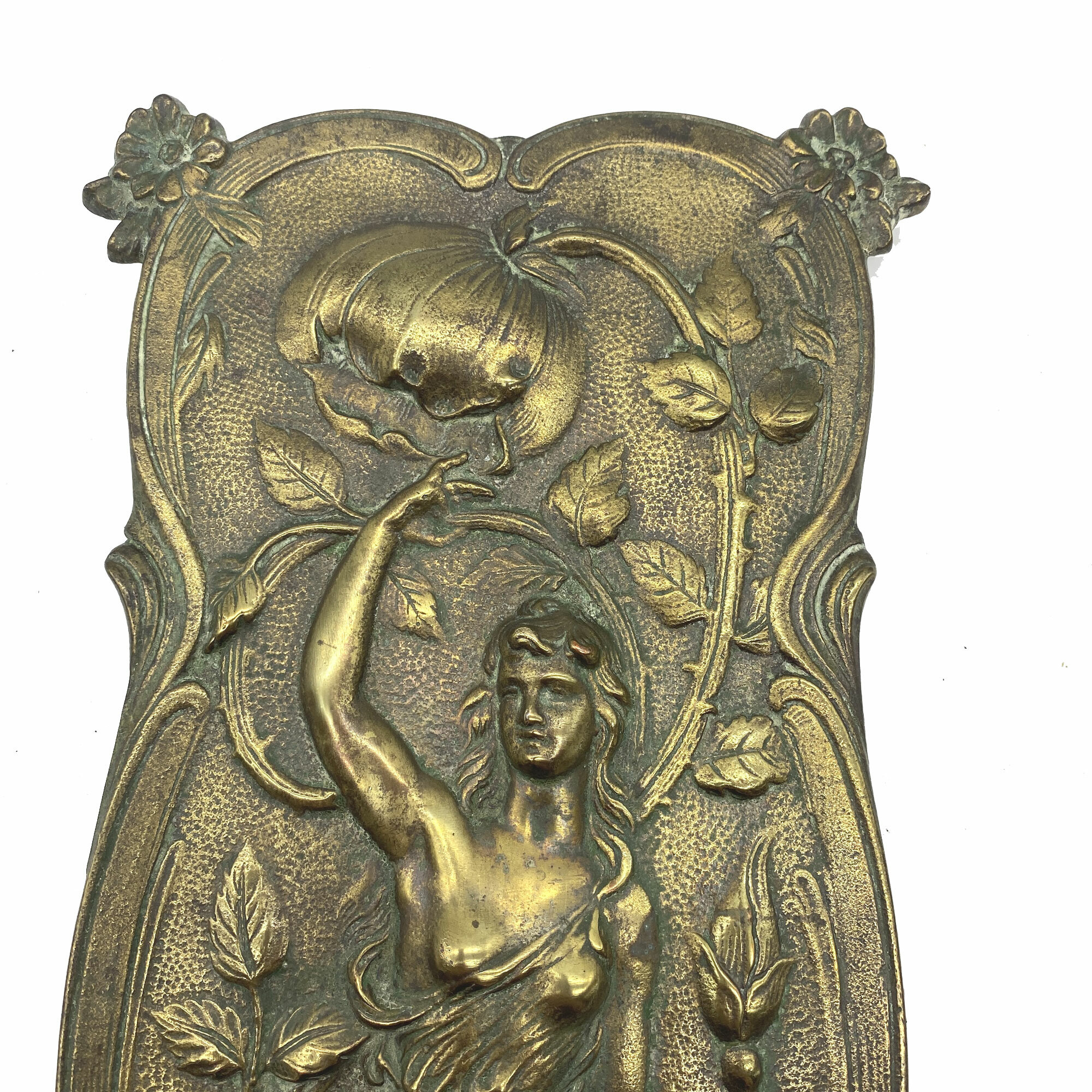
Art Nouveau Bronze Plaque c.1900
Price: £75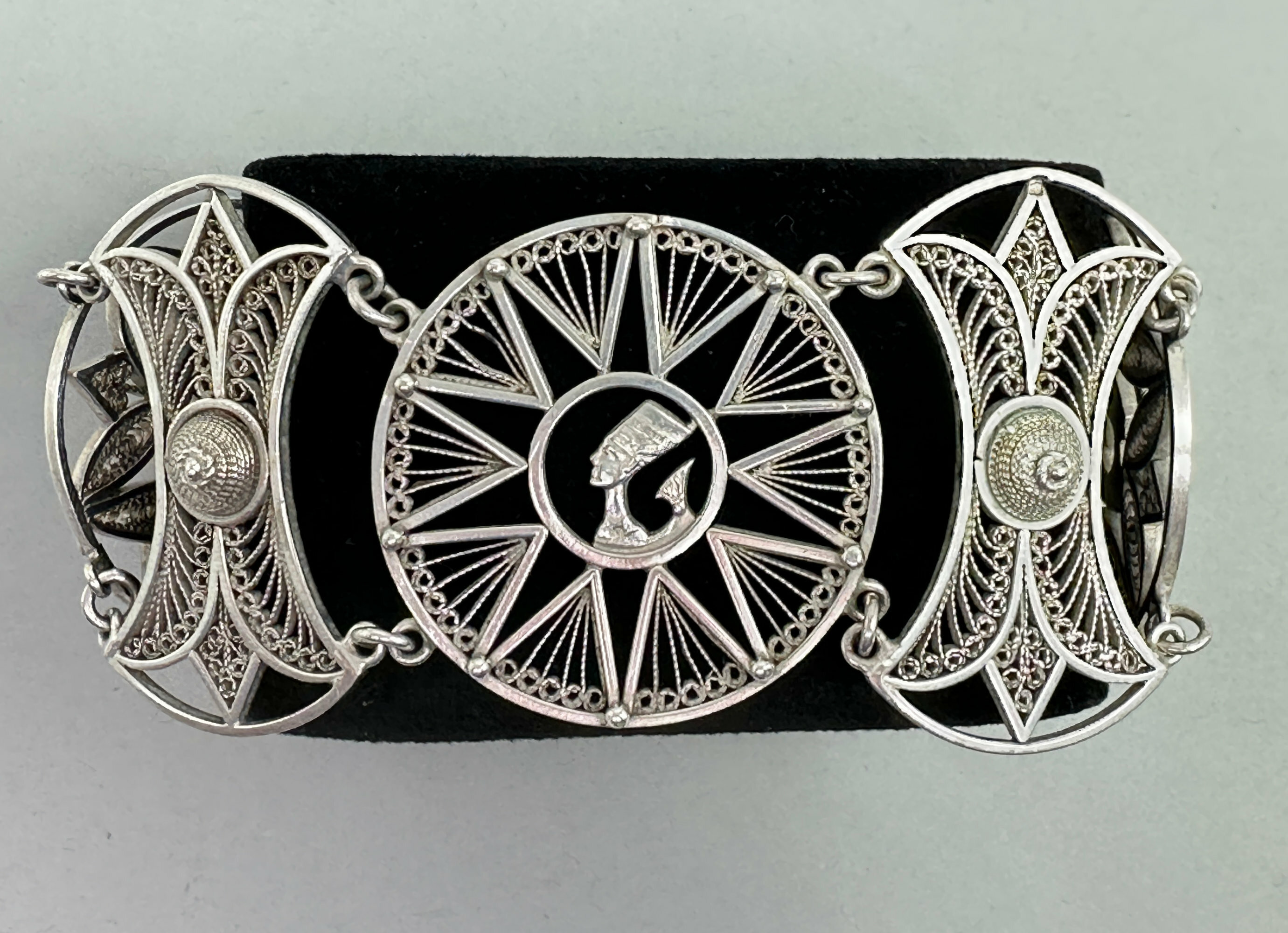
Egyptian Revival filigree cuff bracelet 1930s
Price: £95
Large Islamic silver necklace with heart shaped box c1920
Price: £85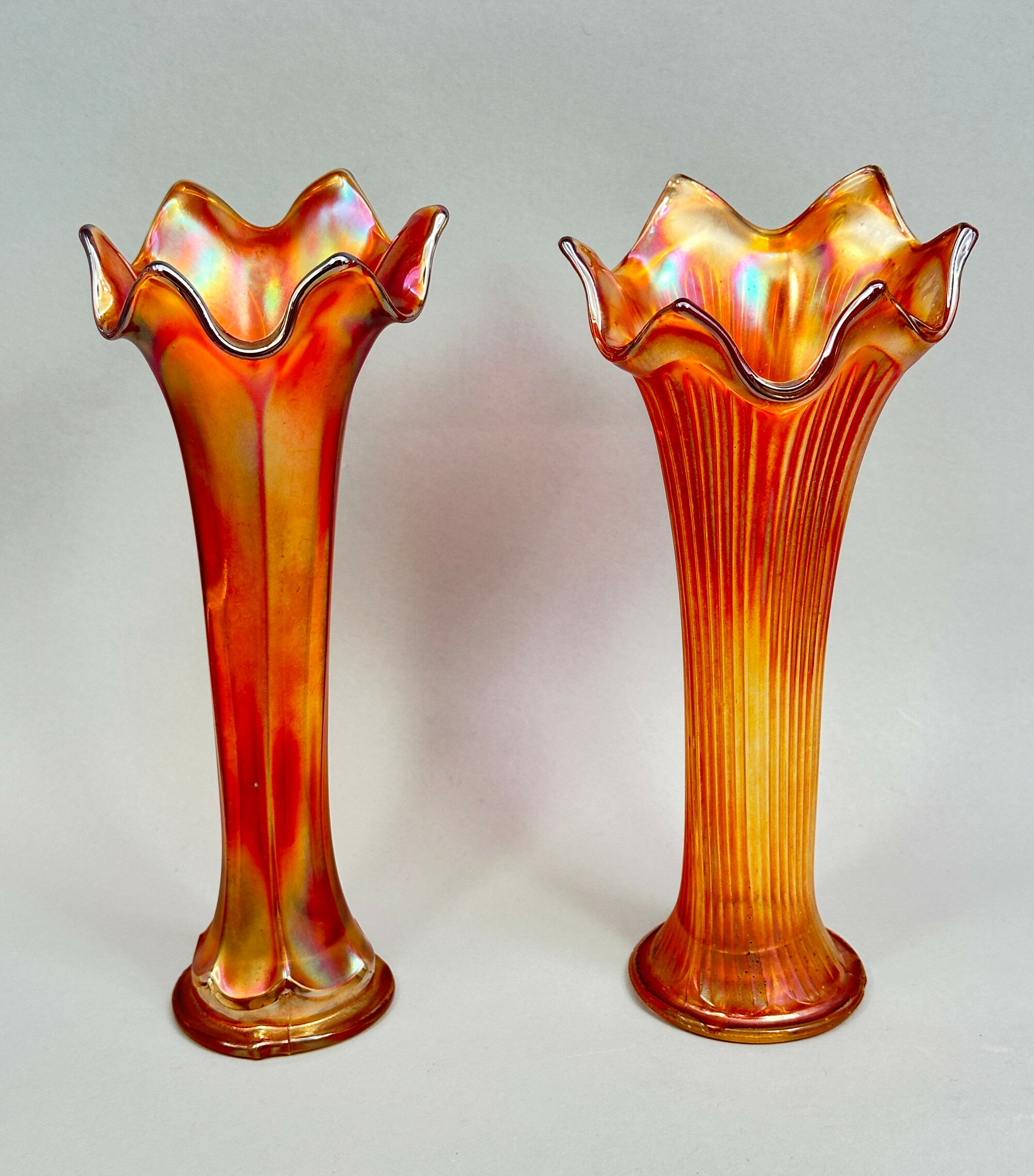
Two Carnival Glass Vases, Marigold, probably Fenton USA, early C20th
Price: £55
Brass and Enamel Campaign Serving Set, Made in British India mark, 1920s
Price: £45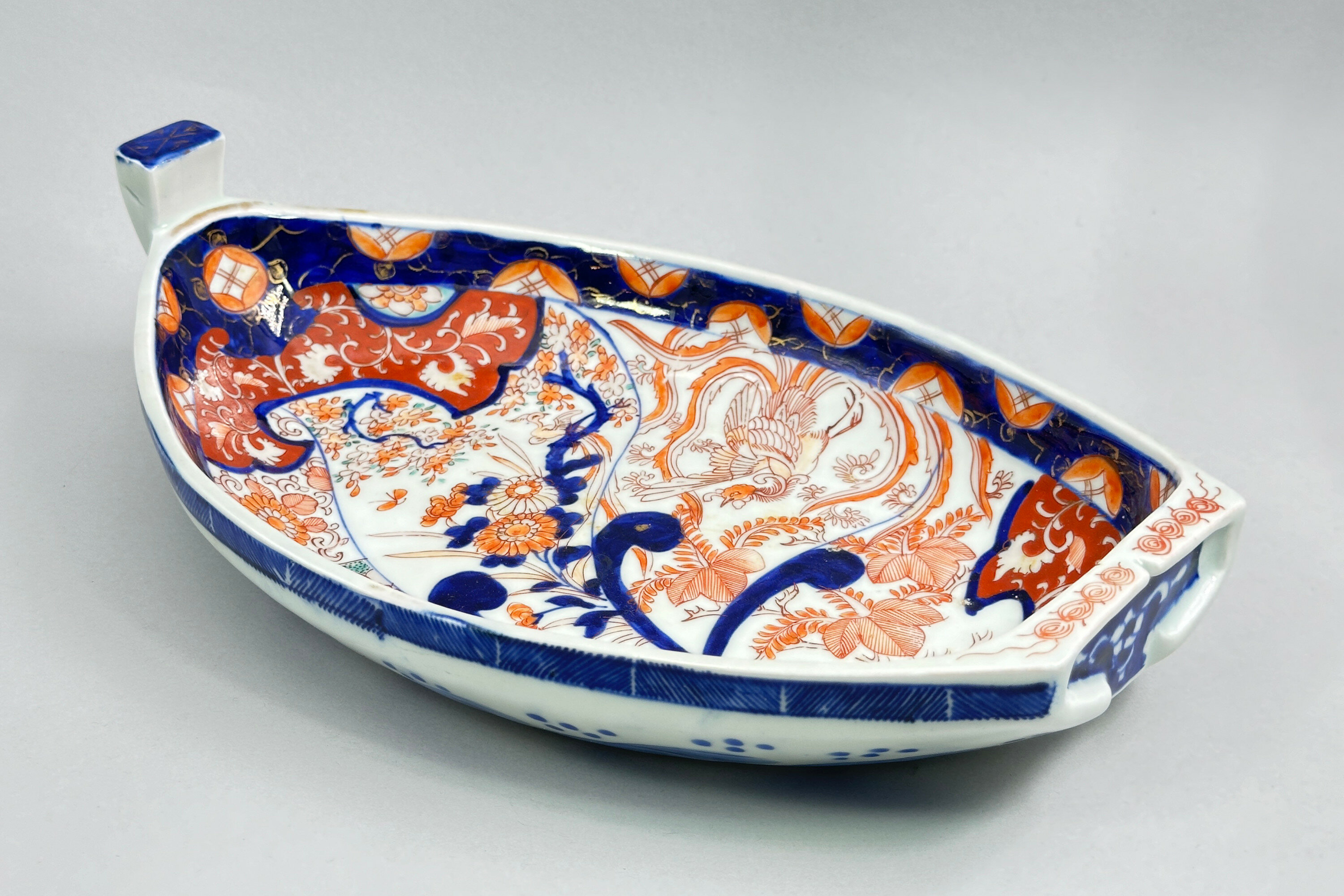
Japanese Imari Dish in the form of a Treasure Boat ‘Takarabune’, Meiji Period, circa 1900
Price: £250In Japanese folklore, the Takarabune or "Treasure Ship", is a mythical ship piloted through the heavens by the Seven Lucky Gods during the first three days of the New Year. Ceramic boat shape dishes were produced during the Meiji period (1868-1912) in both Arita and Imari porcelains. Paste of the foot rim and style of decoration suggest a circa date here towards the end of the nineteenth century.
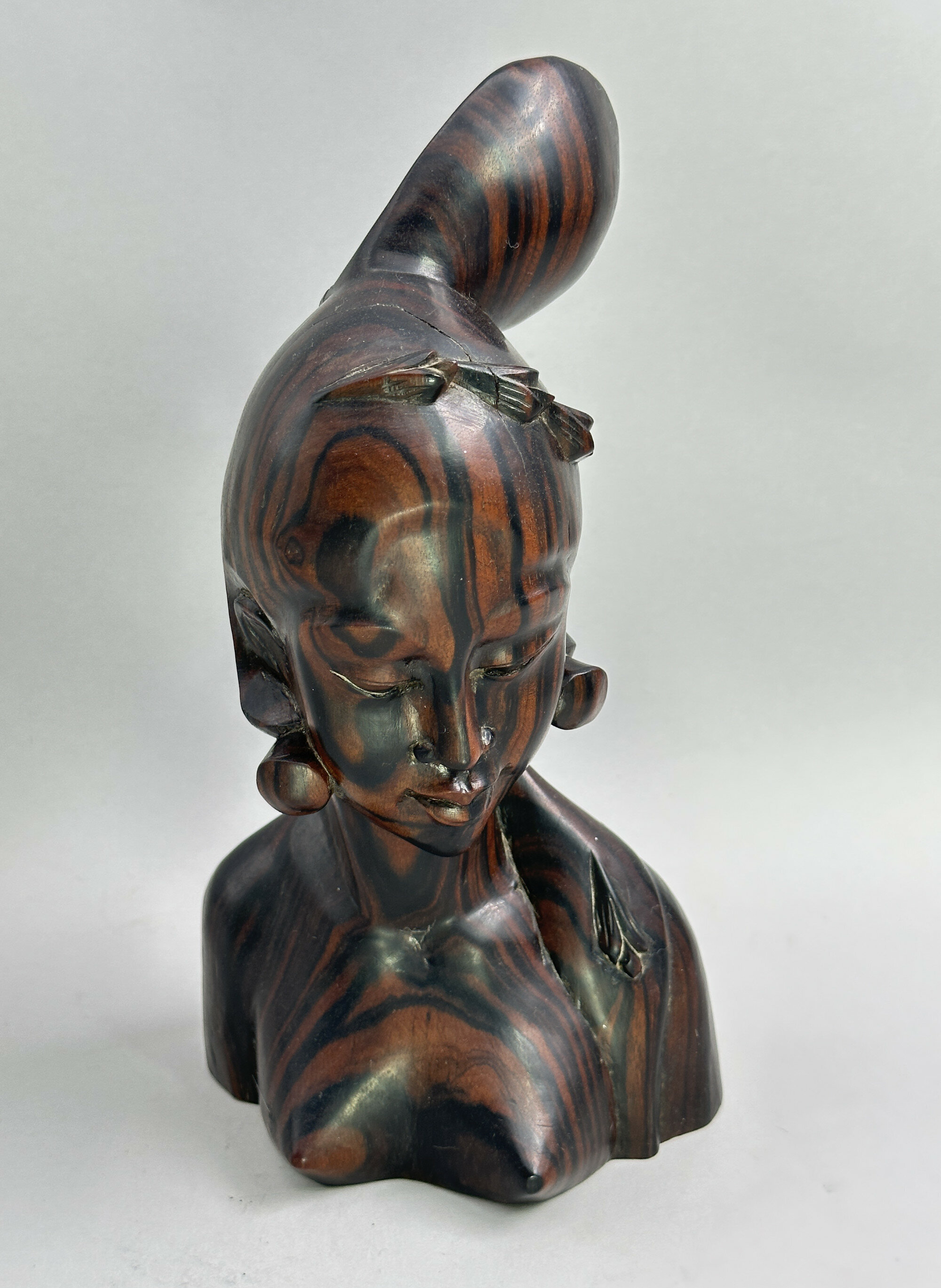
Vintage Carved wood bust of a Lady, Bali, Indonesia, second half C20th
Price: £75
Chinese Famille Rose Bowl decorated with ladies, Qianlong mark, Republican period
Price: £45PLEASE NOTE THAT THERE IS FREE UK SHIPPING ON THIS ITEM. For international buyers the shipping cost will be reduced by the UK shipping cost, so don't worry if you are outside the UK, you still receive this benefit!
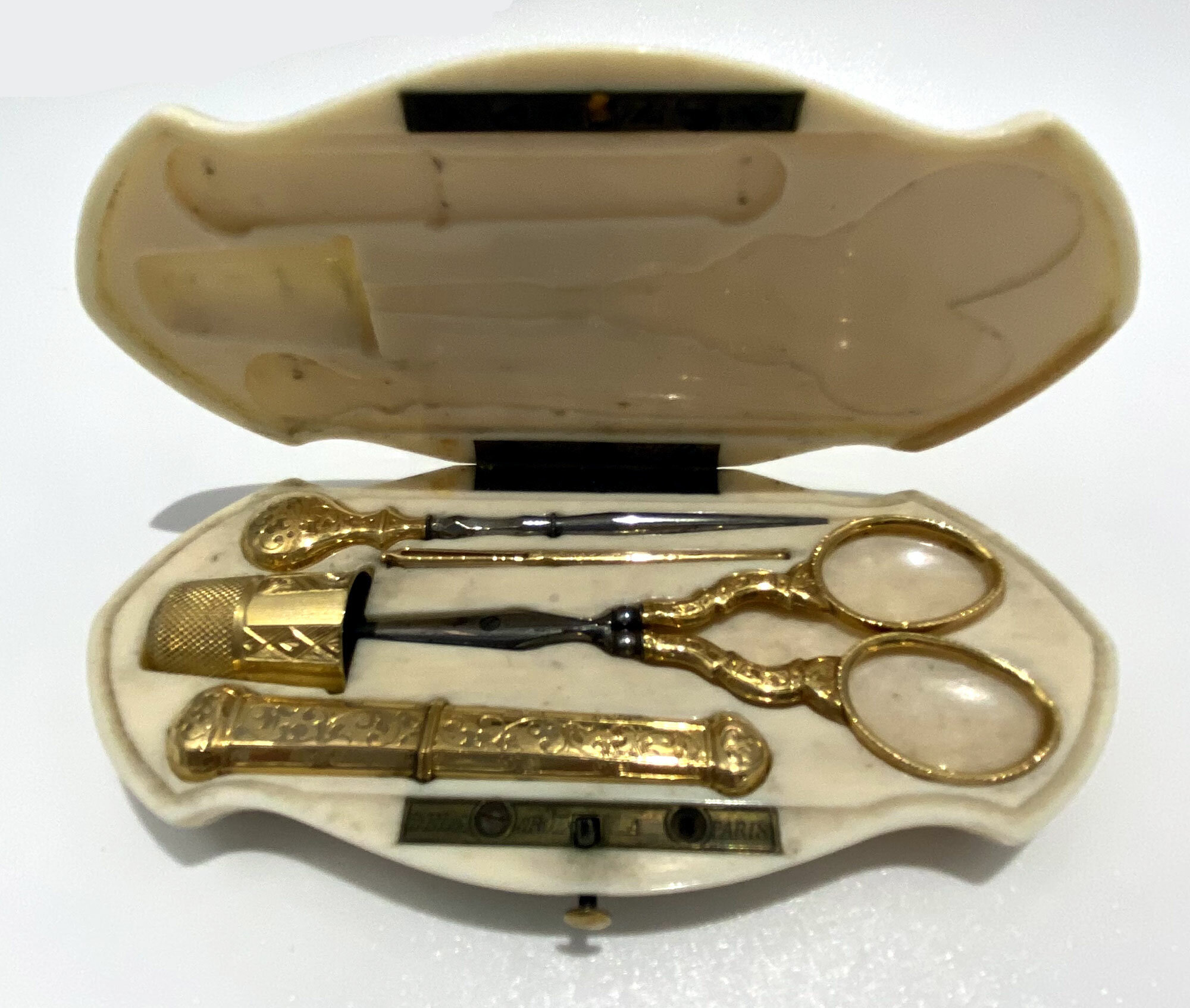
Set of 5 matching 18ct gold sewing tools in fitted case, August Boileau, French c.1850
Estimate: £100 – 200
Stunning Art Deco onyx and rock crystal necklace
Price: £250
Pair of French Blue Ground Square Vases Choisy Le Roi, late C19th
Price: £45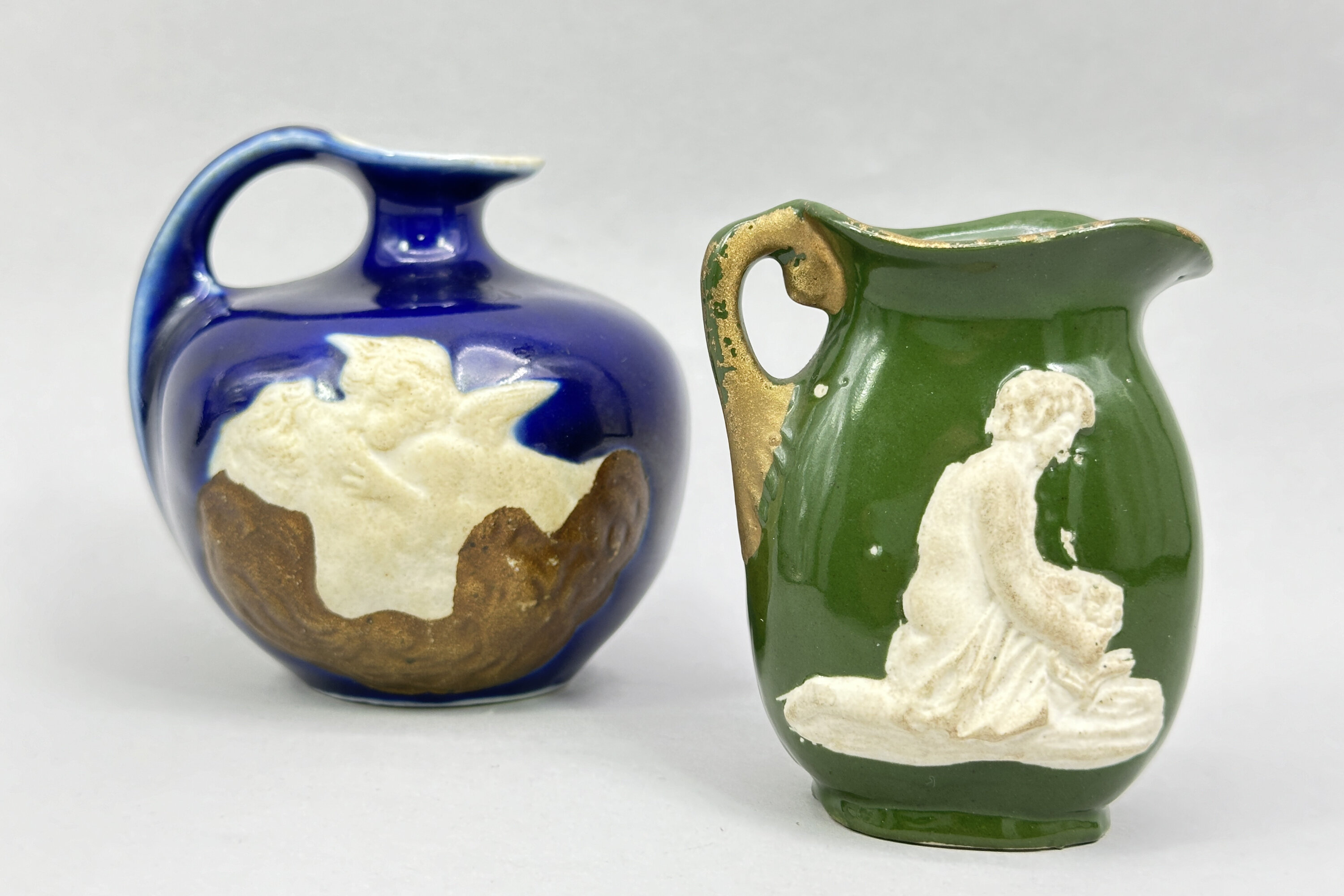
Two Ceramic Jugs with Erotic Decoration, continental perhaps German, circa 1900
Price: £25These pieces represent something of a puzzle. Seen the right way round (with the handle on the right) they are plain and the decoration only reveals itself on the reverse. This suggests a playful intent to conceal which, when combined with the subject matter, suggests something a bit ‘naughty’ which could confirm the second interpretation of what the seated man is holding! The paste, and general style of the pieces, looks continental and a German origin might be a good guess, but no more than that. The blue glazed jug has an impressed mark to the base ‘186 [plus an unidentifiable number]’ which might be the date but is more likely the pattern number; a dating of around 1900 for both seems reasonable - certainly there is an ‘old’ look to the pieces. There are one or two similar examples but little in the way of firm information. One for a collector to puzzle out!
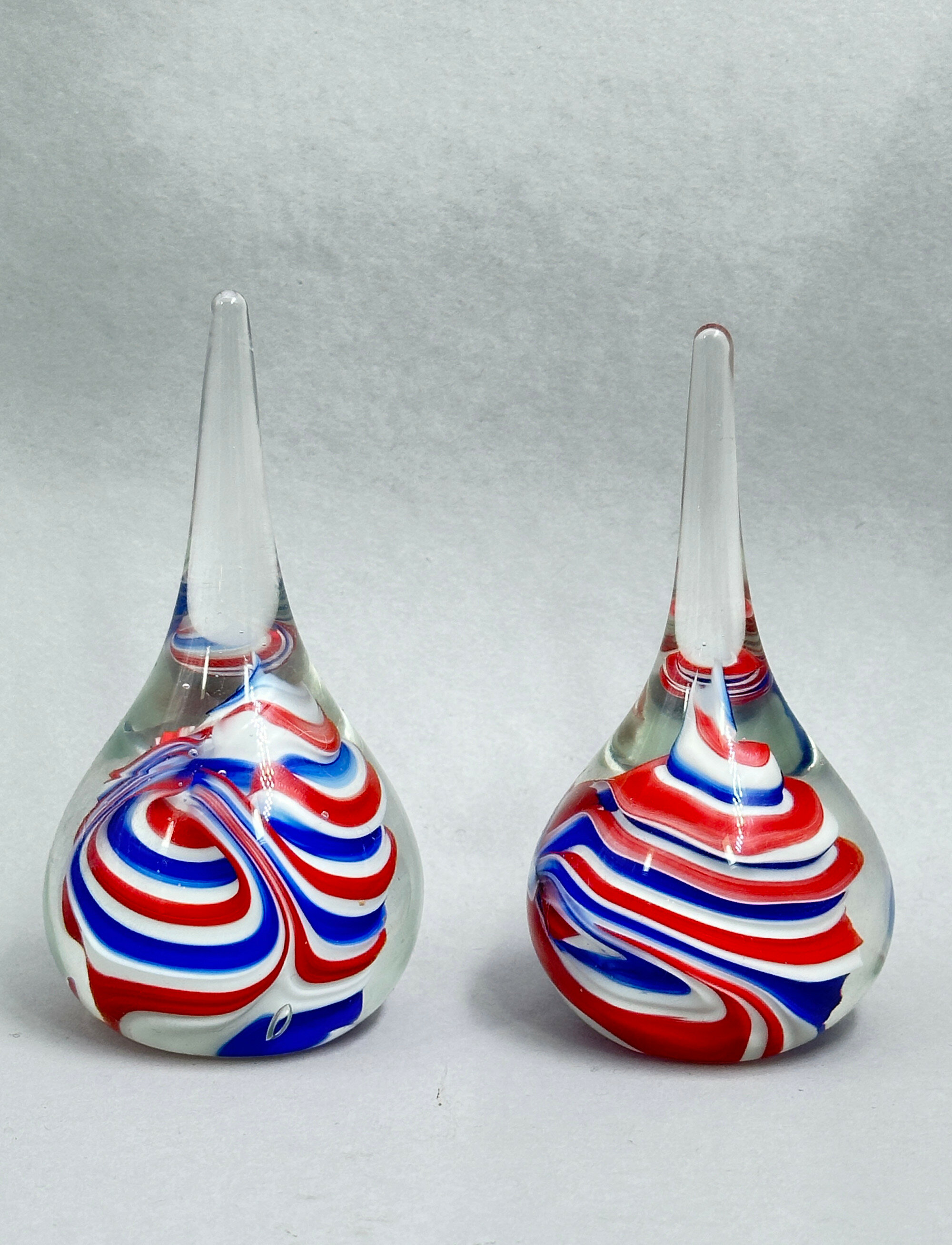
A Pair of Glass Vases or Paperweights, probably Selkirk Glass, Scotland, 1980s/1990s
Price: £25
Silver Art Nouveau Mucha style brooch c1910
Price: £35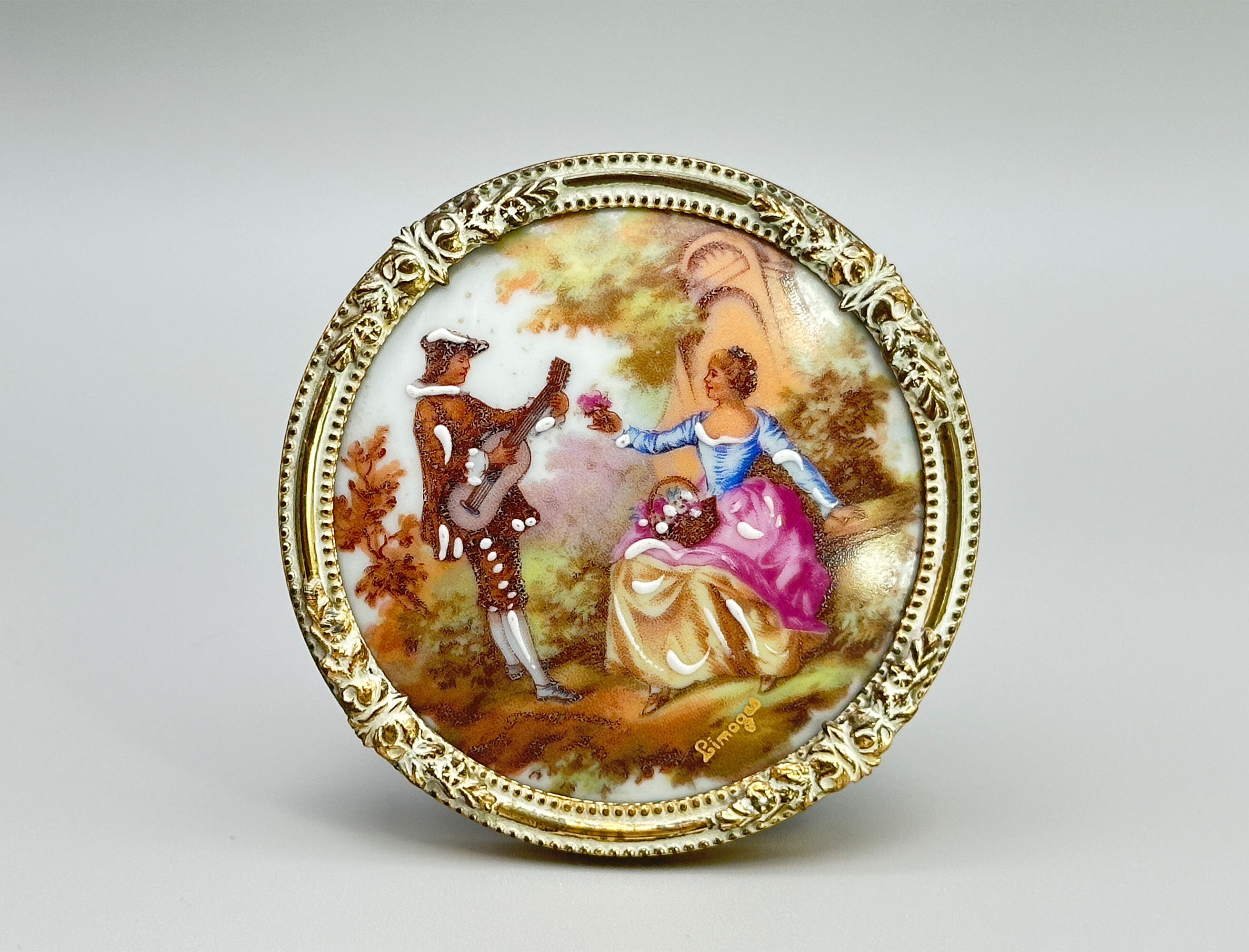
Small circular ceramic plaque after Fragonard marked Limoges, framed, late C20th
Price: £25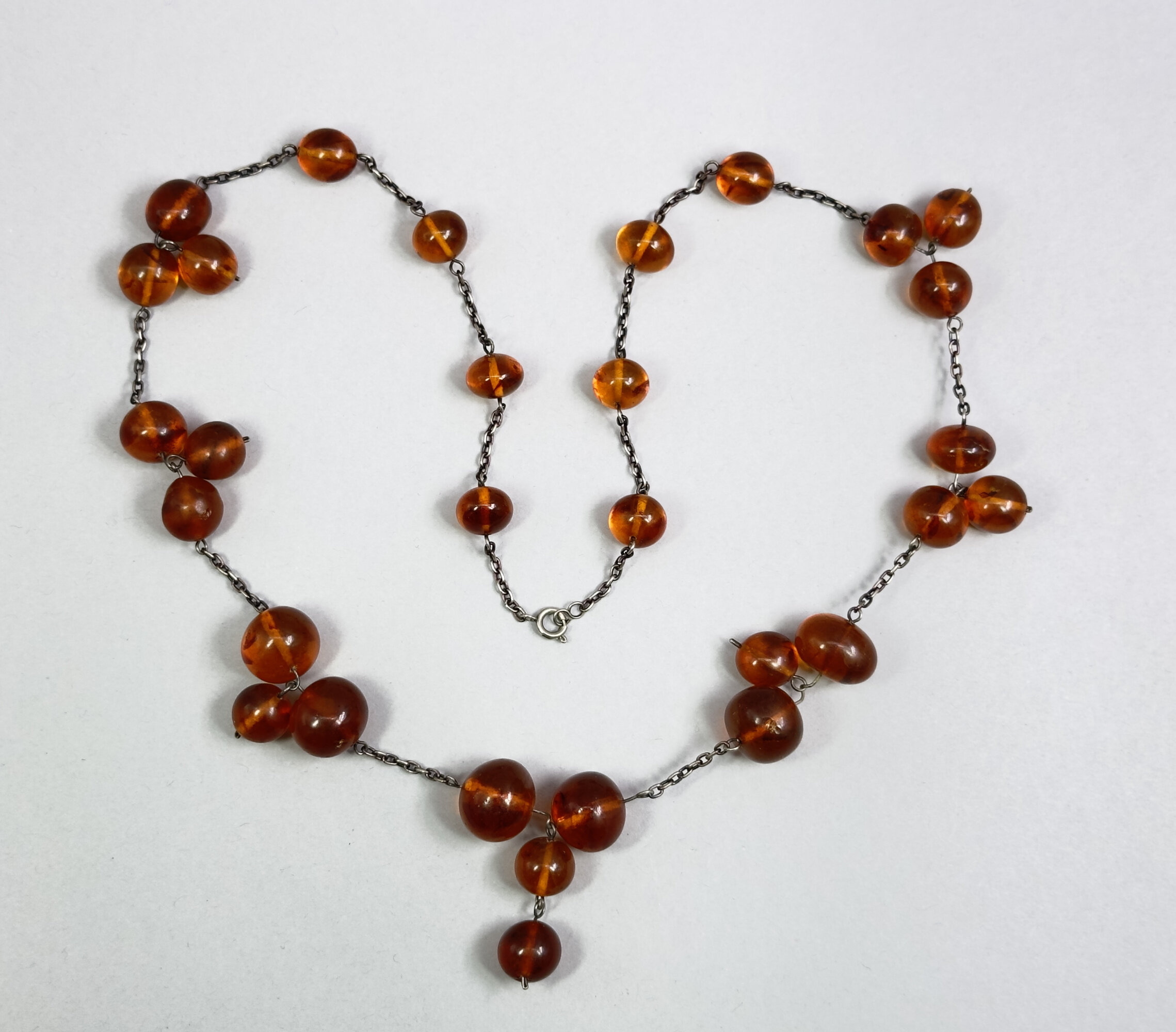
Amber statement necklace with round drops c1960
Price: £65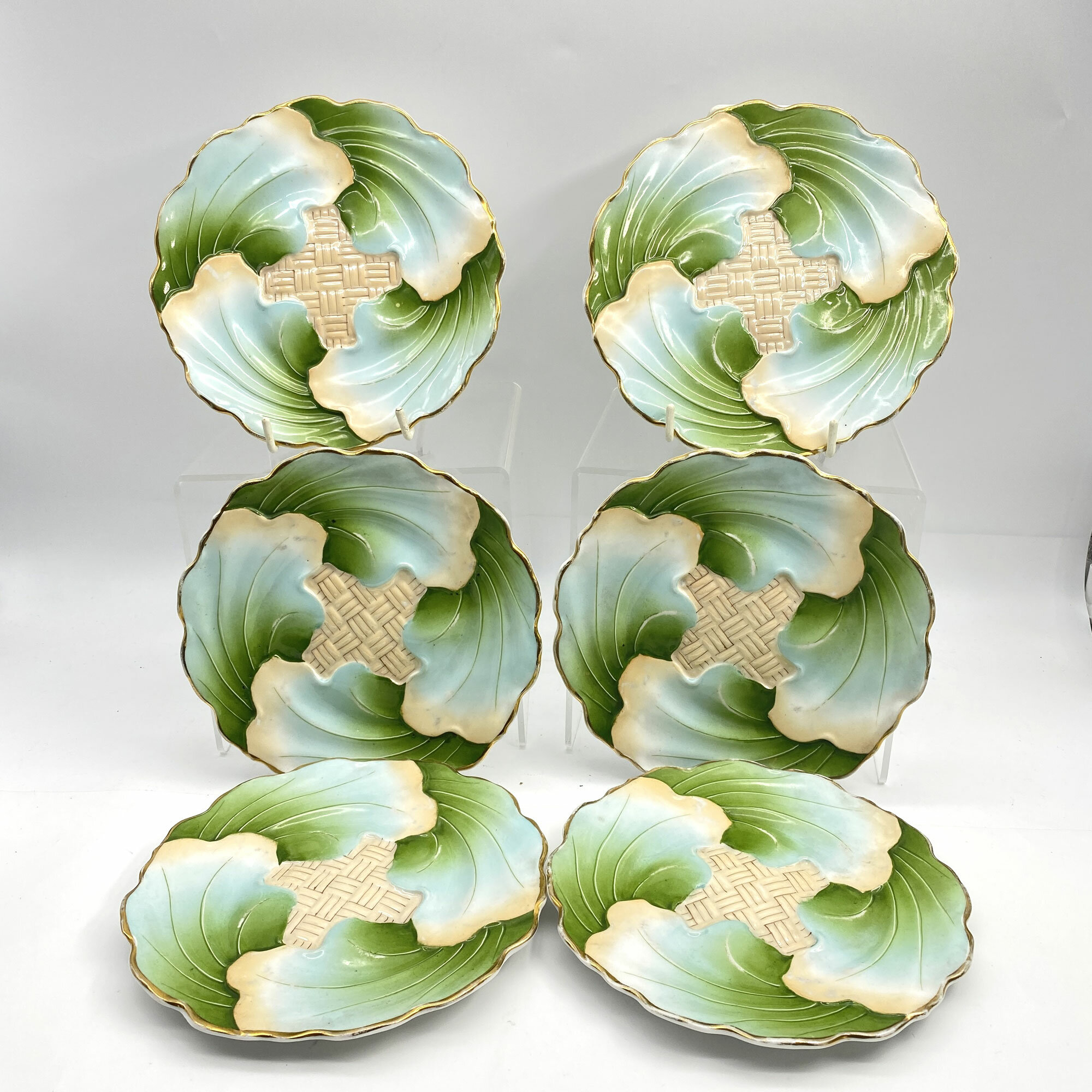
Set of 6 small Art Deco style plates by C.T. Altwasser, Silesia, 1920s/1930s
Price: £75

A Large Islamic Pewter Ewer, C20th
Price: £45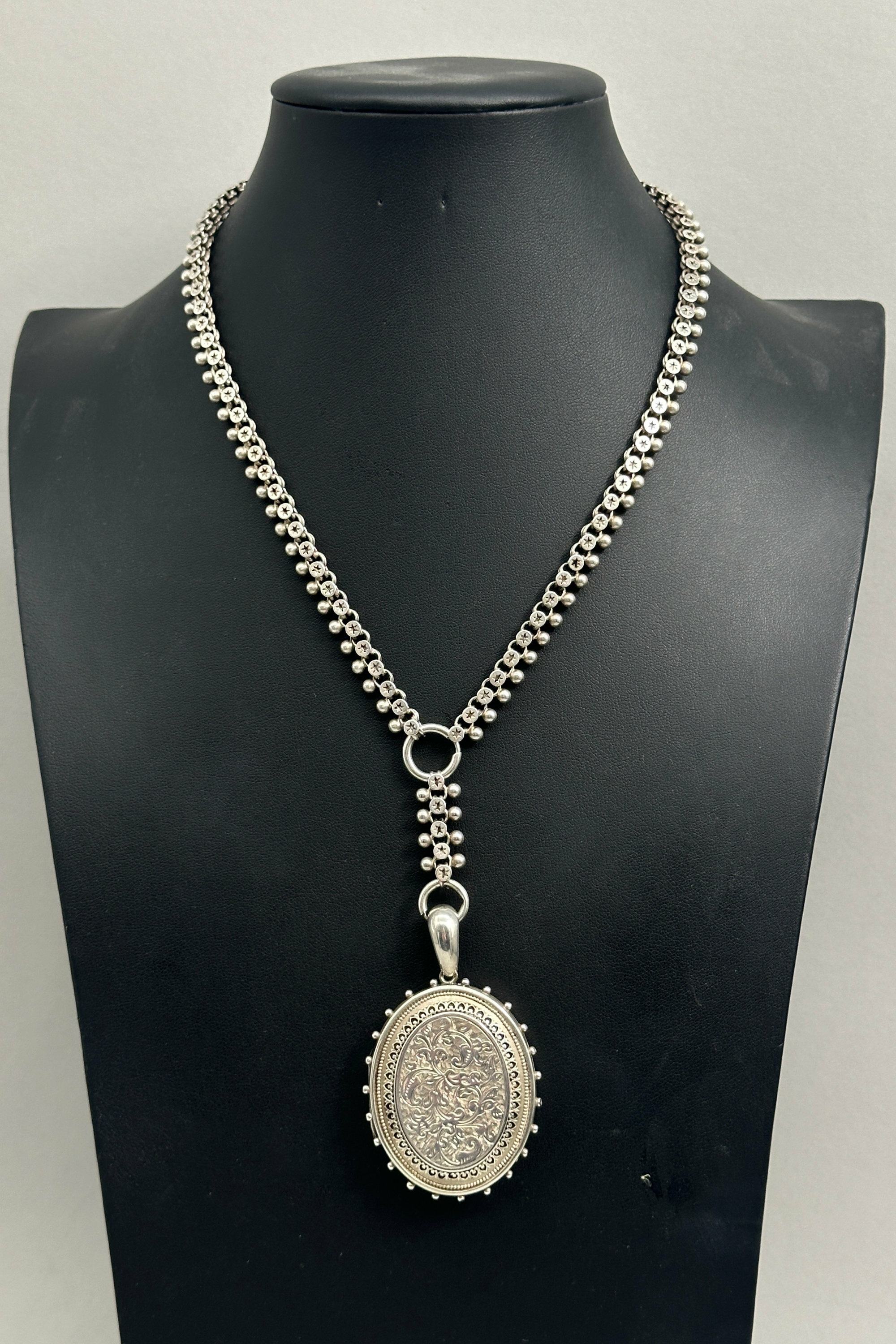
Victorian book chain with locket c1900
Price: £350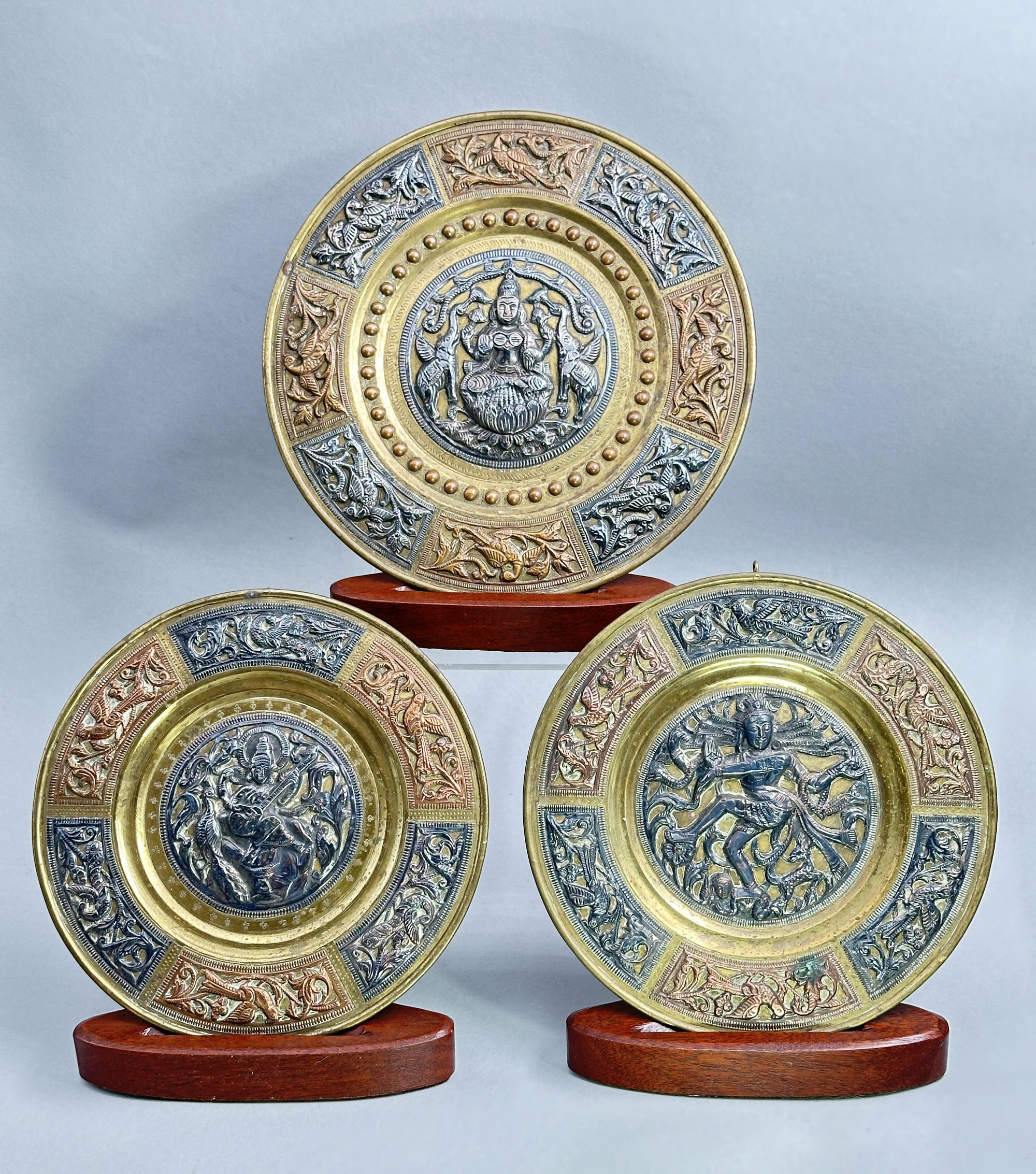
Three Indian Brass hanging plates, Thanjavur, C20th
Price: £55The style of decoration here is typical of the art brass hanging plaques produced by the metalworkers of Thanjavur, formerly known as Tanjore, from the late eighteenth century onwards. A Tanjore Art Plate consists of three components: the base plate (brass), a circular central relief panel of a deity worked in silver surrounded by relief panels in copper and silver often depicting flowers. Various deities are depicted here including the well known many armed Shiva. All the reliefs have milled borders but the wells are finished differently, some with engraved designs and one with circular bosses. Dating is probably to the mid C20th but the style of these pieces was continuous and relatively unchanging so an earlier period of manufacture is quite possible.
NB Stands for display purposes only and not included

Pair of fine quality Japanese Bronze Vases decorated birds, circa 1880
Price: £220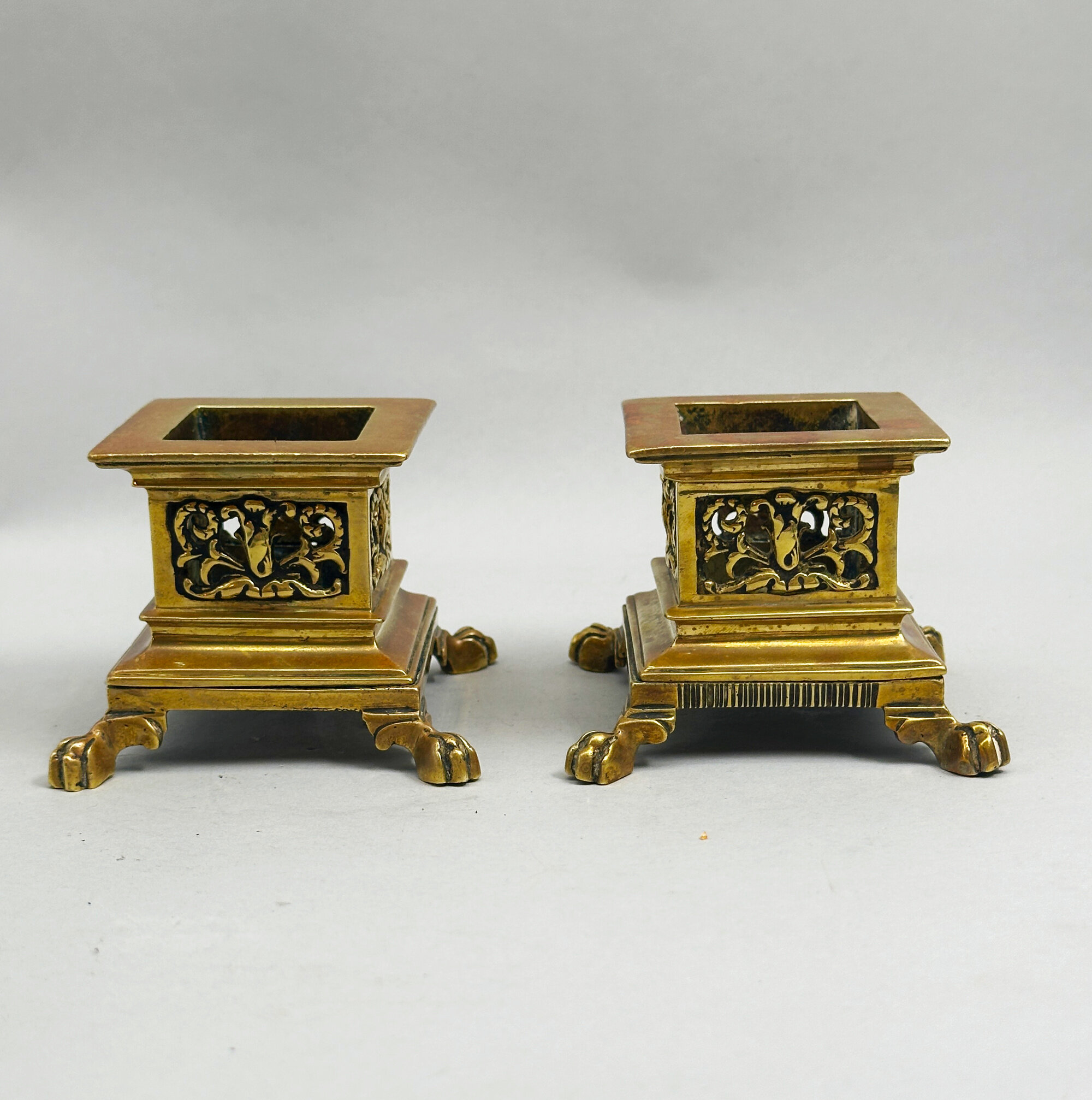
Pair of Georgian Style Square Gilt Bronze Table Salts, English C19th
Price: £45
Set of ring and earrings with obsidian mask motif, Mexico, 1950s
Price: £45
Art Deco beaded bag with celluloid frame
Price: £25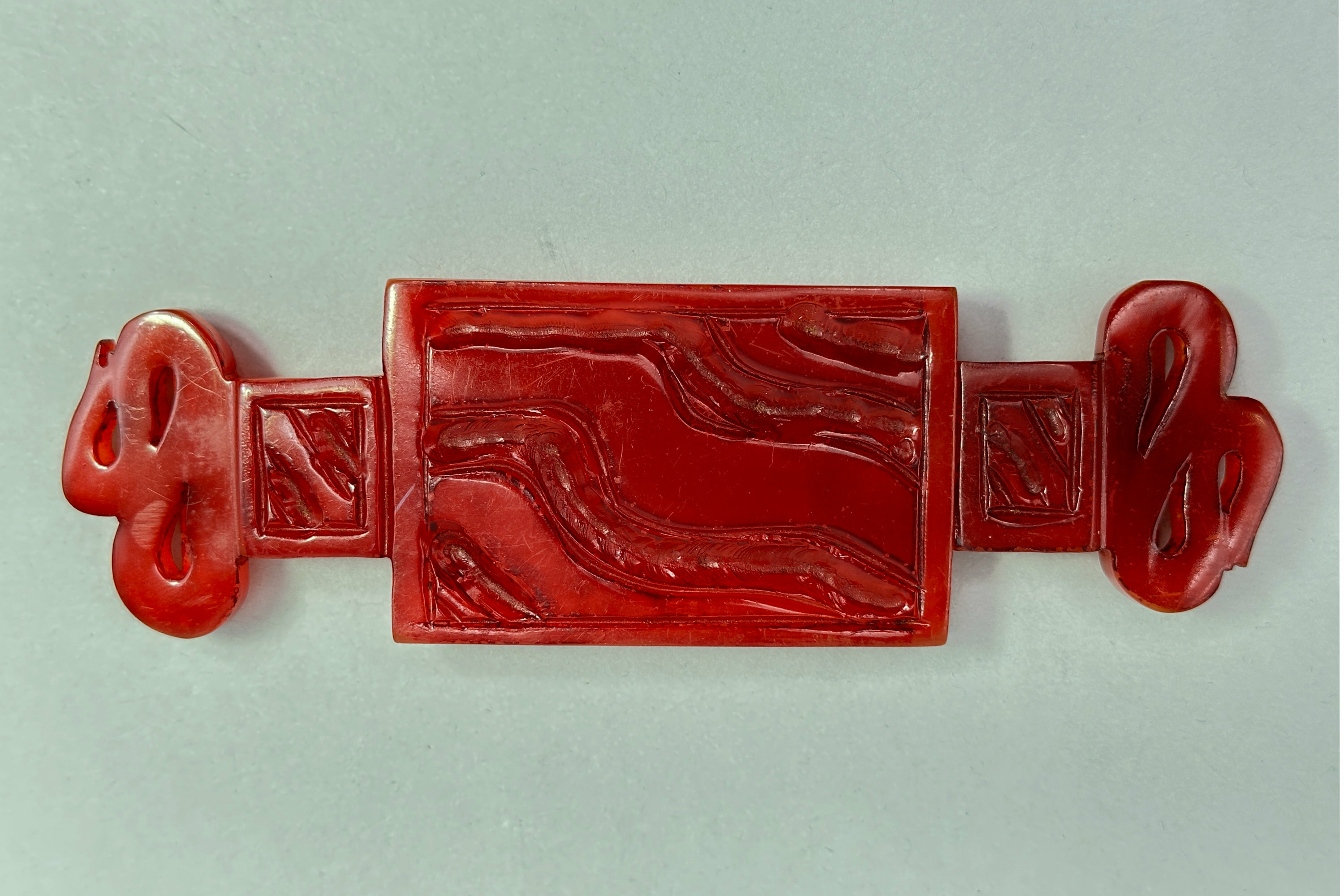
Rare large ruby red Bakelite buckle, American 1930s
Price: £75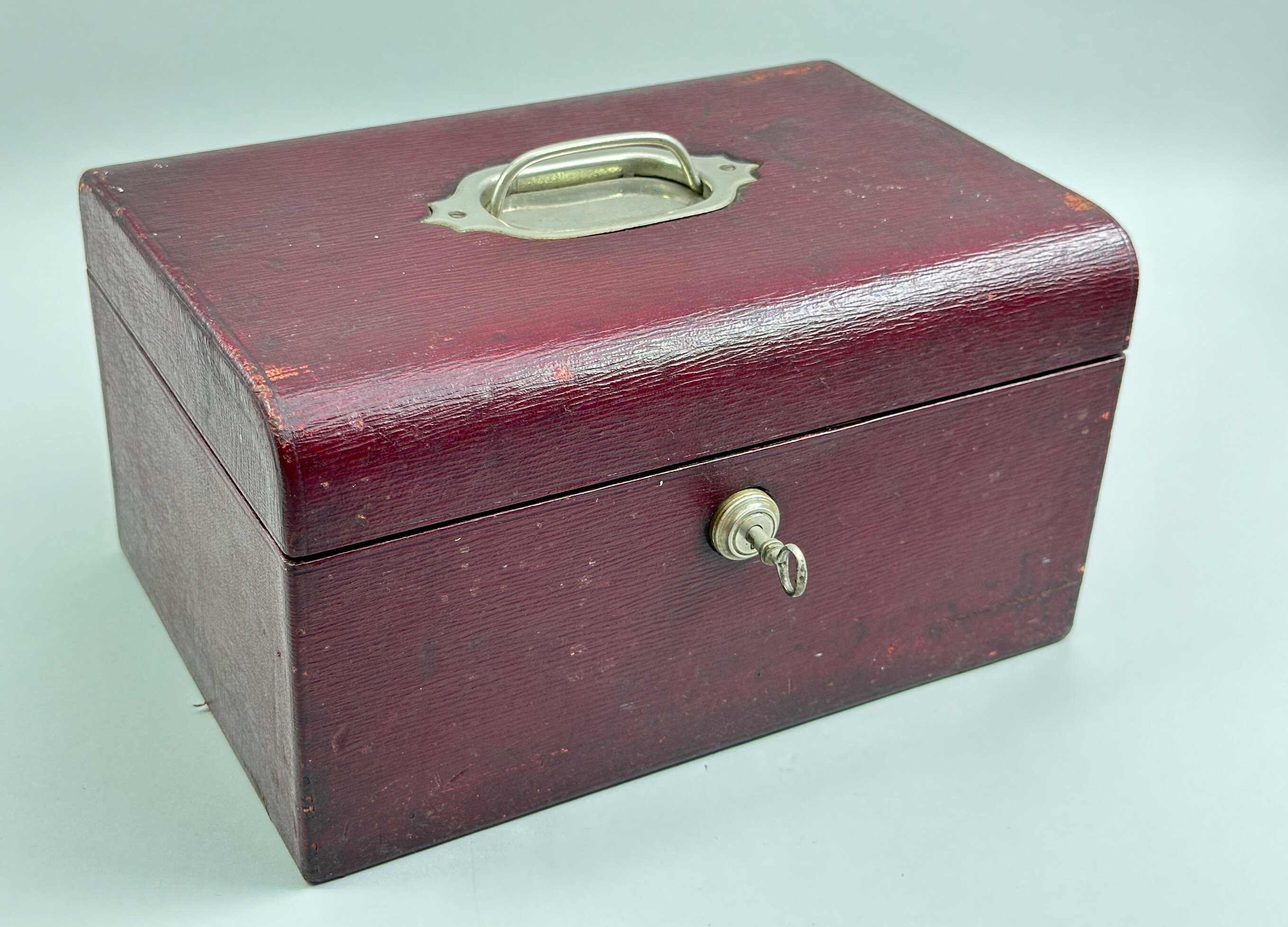
Burgundy Leather Jewellery Box with Bramah Lock, early C20th
Price: £95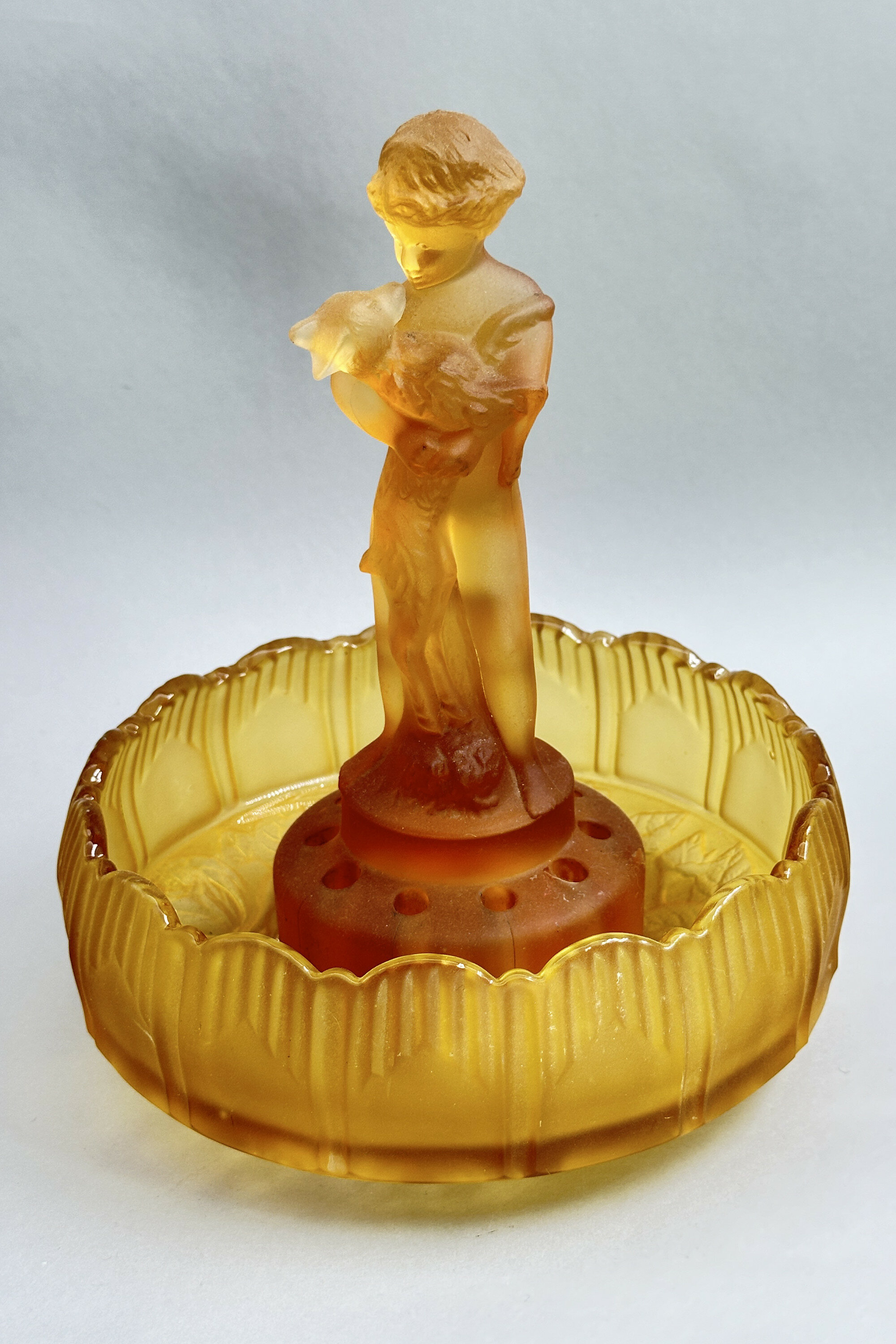
Sowerby Amber Glass Centrepiece circa 1930
Price: £75The Sowerby family came from the North West of England near Carlisle and settled in Gateshead in the late eighteenth century. The firm Sowerby Glassworks is known from 1807 onwards and continued production until 1972, concentrating on pressed glass. Catalogues of their wares still exist and they produced pieces in a wide variety of styles and shapes which retain their popularity today.
The centrpiece figurine, which was intended as a flower holder or ‘frog’, is rather unusual; normally the figures are female but the style of the modelling is identical. Similar designs to the bowl can be found in a 1936 catalogue but versions of it even appear in another catalogue from 1882. Many centrepiece/bowl combinations are found and some of them are not always original. This may possibly be the case here but if so the ‘match’ is extremely pleasing to the eye and the two elements set one another off perfectly to produce a striking example of Art Deco decorative design.
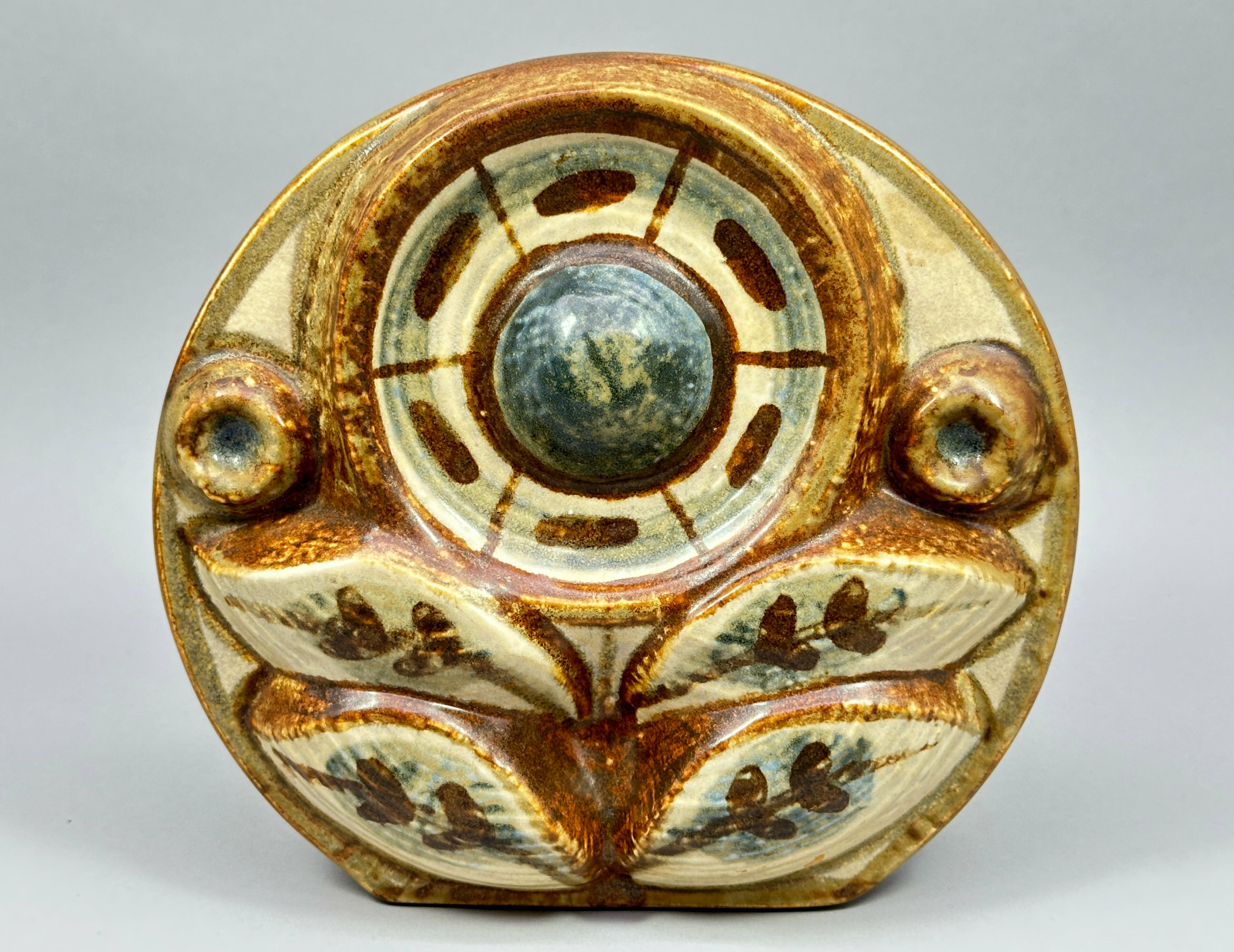
Wall Vase, designed by Noomi Backhausen, Søholm Stentøj, Denmark, late C20th
Price: £95The company Søholm Stentøj was founded by Herman Sonne Wolffsen and Edvard Christian Sonne in 1835 at Rønne, the principal town of Bornholm, a Danish island off the south coast of Sweden. One of the most respected of the Danish potteries it continued producing a wide range of ceramics until the firm closed in 1996. Noomi Backhausen was a designer for Søholm from 1966 to 1990 and set up her own pottery in Rønne in 1996 after the closure of her old employers. This wall vase is a typical example of her abstract organic designs and would be a worthy addition to a collection of twentieth century Danish design.
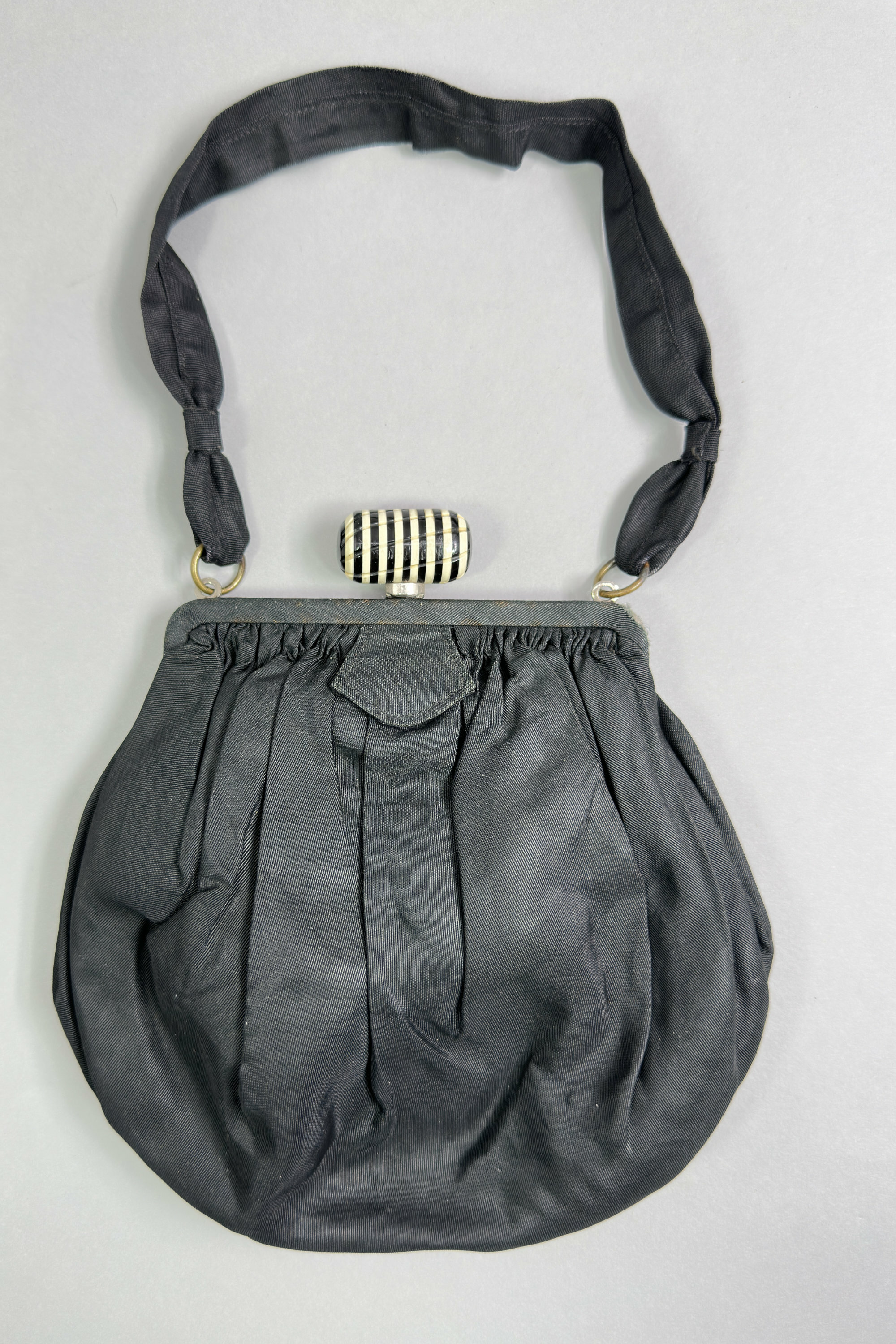
Small Art Deco wrist bag with Bakelite closure, French 1920s
Price: £35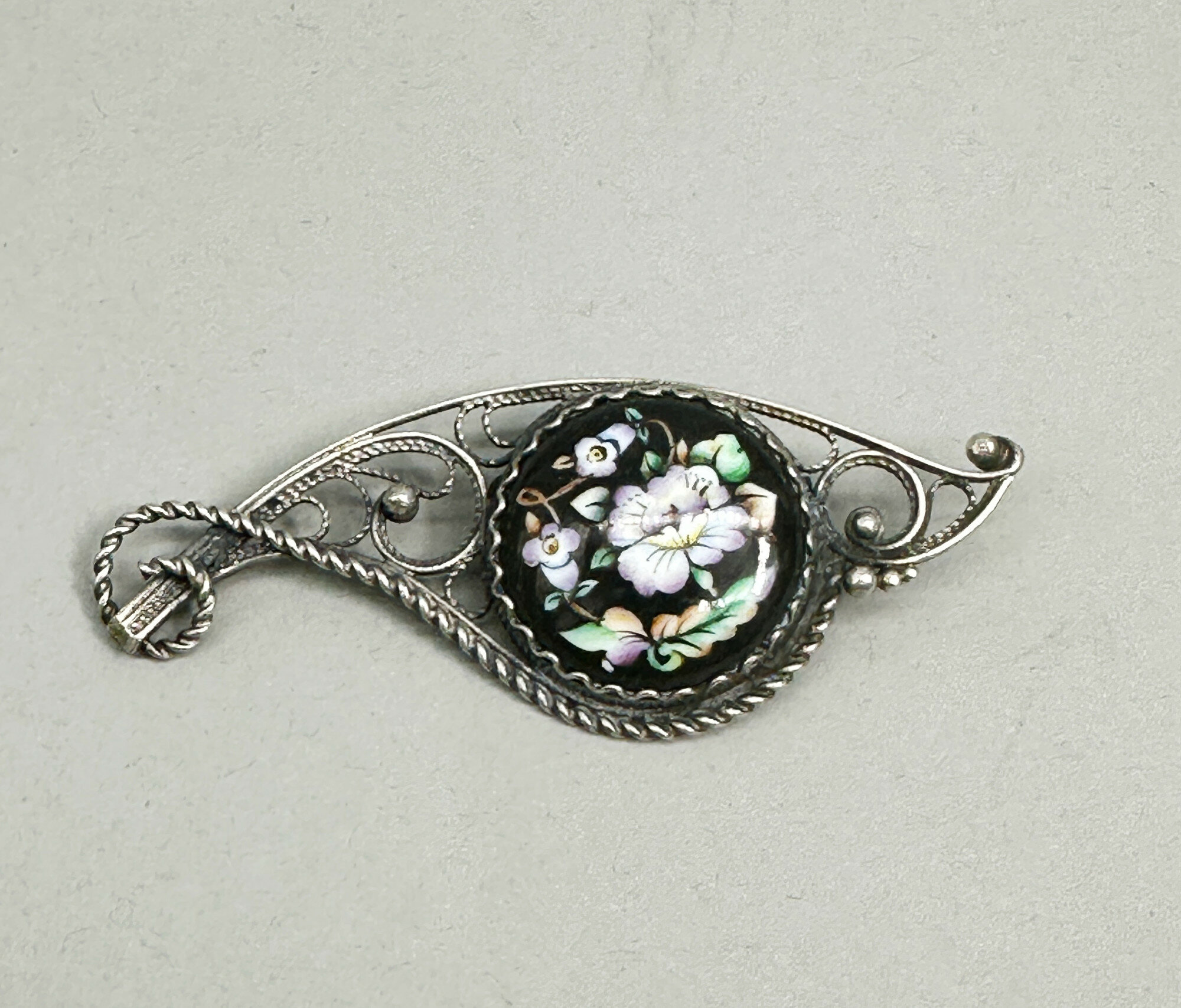
Russian Enamel Brooch, probably Rostov Finift, mid C20th
Price: £20
Chinese Straw Thread Picture on Silk, framed in original box, late C20th
Price: £45
Elegant Modernist pendant 1970s
Price: £15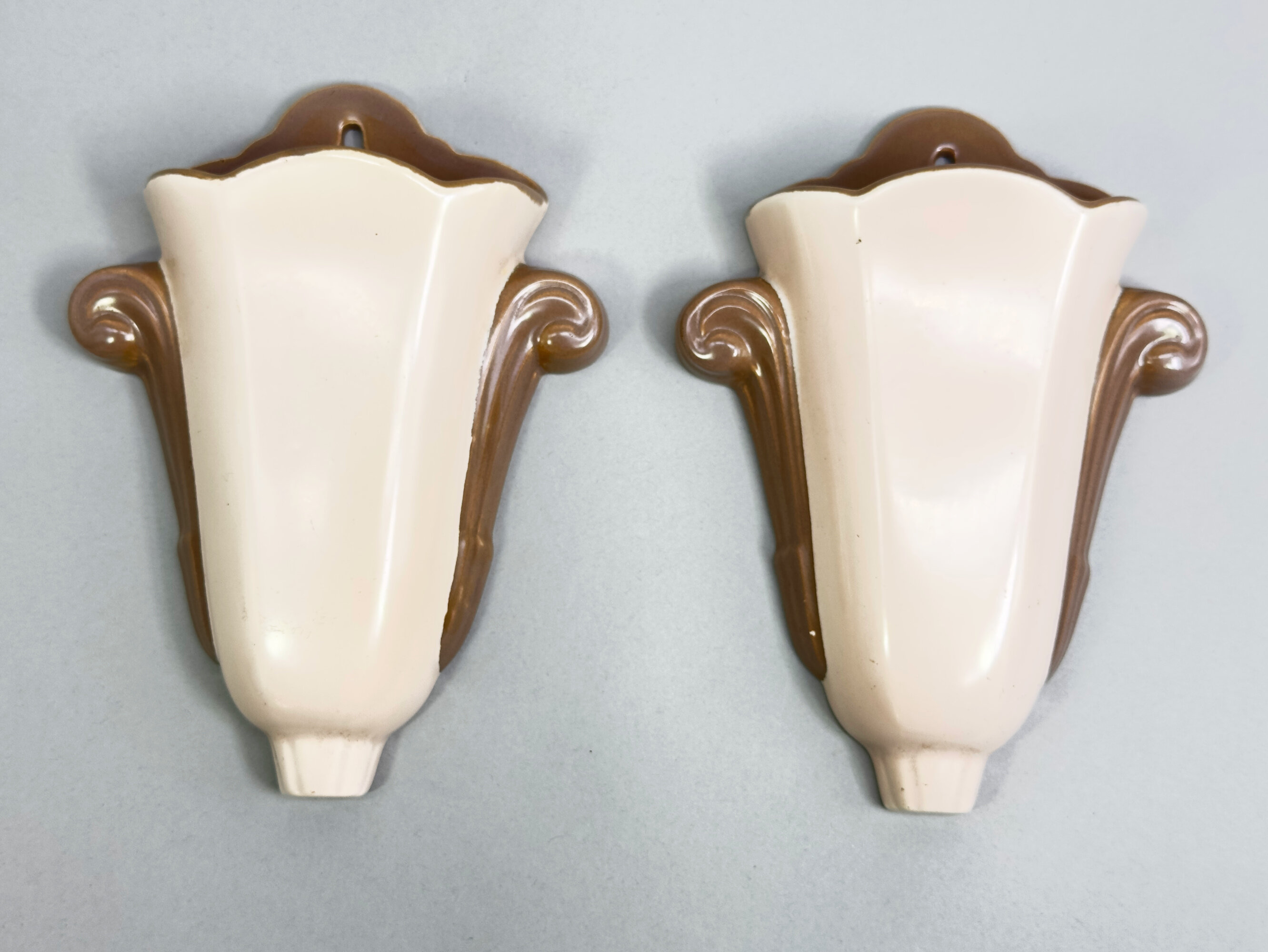
Pair of Art Deco style Wall Pocket Vases, Poole Pottery, mid C20th
Price: £55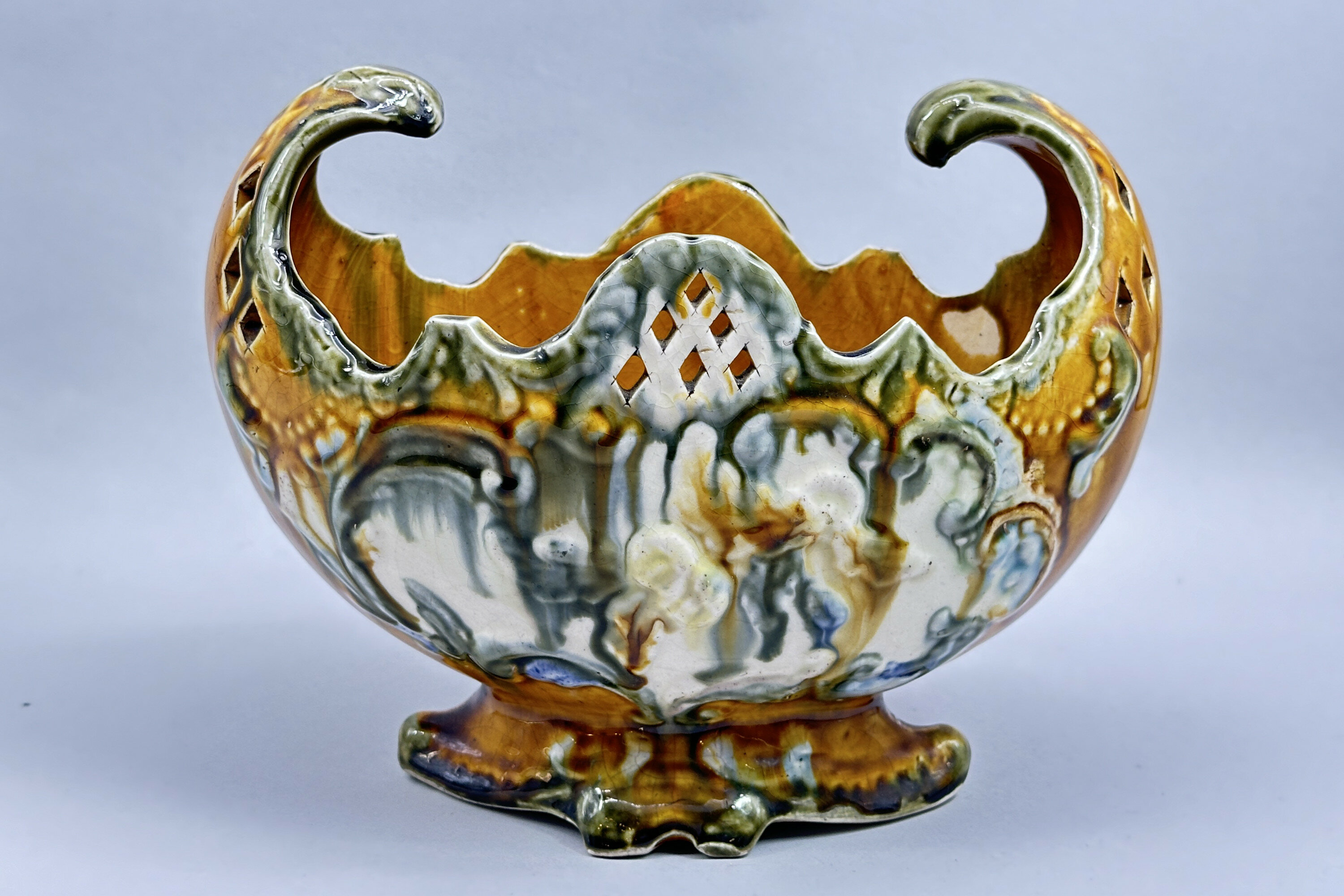
Majolica Style Jardiniere, French, circa 1900
Price: £55This is a French interpretation of the ‘Majolica’ style which became so popular, particularly in England in the second half of the nineteenth century. A very distant relation of the tin glazed Italian and Spanish wares which share the name, nineteenth century majolica employed a wide variety of brightly coloured glazes applied to elaborate forms some of which had a slightly ‘classical’ feel and some a reflection of ‘rococo’ designs. The paste and glazes here suggest France, which produced various pieces in the ‘majolica’ style and dating is probably to the end of the nineteenth century.
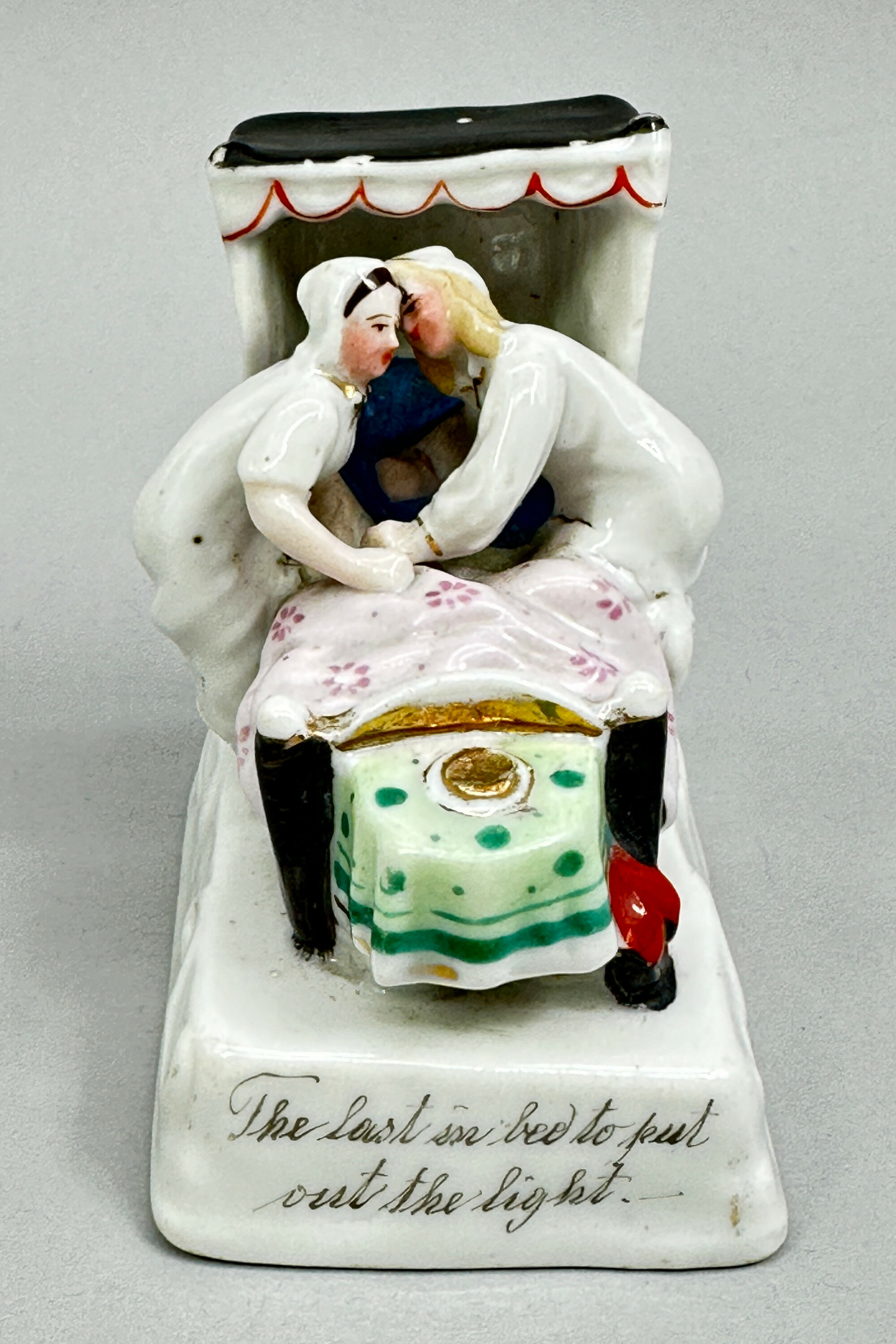
Fairing Figurine - The last in bed to put out the light, German, early Twentieth Century
Price: £25The various figures were made in white glazed porcelain with coloured decoration. The compositions were sculptural and often accompanied by an inscription, as here. Many models are known. Two typical examples are 'Returning from the Ball' and 'Twelve Months after Marriage' but the most common example is represented here 'The last in bed to put out the light'. A couple are seen climbing into a covered bed at the foot of which stands a candle in a holder. These candles are usually broken off, most likely because of simple damage over the years but it has been suggested that this was done deliberately for good luck.
Some of the fairing figurines are marked, as here. In comparison with the previous Lot 4, this example has a glazed circular mark which reads 'Made in Germany'. These marks appear on the later productions of the Conta factory and indicate a dating here to shortly before the First World War. This is consistent with the rather 'brassy' looking gilding used which is typical of ceramic production generally post 1900.
It is interesting to compare Lots 4 and 5 and to see how consistent the manufacture was throughout the period. Only the glazed base with its circular mark and the type of gilt decoration separate this example from its earlier companion.
Fairings have been collectors' items for many years now and still hold a naif charm which makes them appealing display items, with a history of their own.
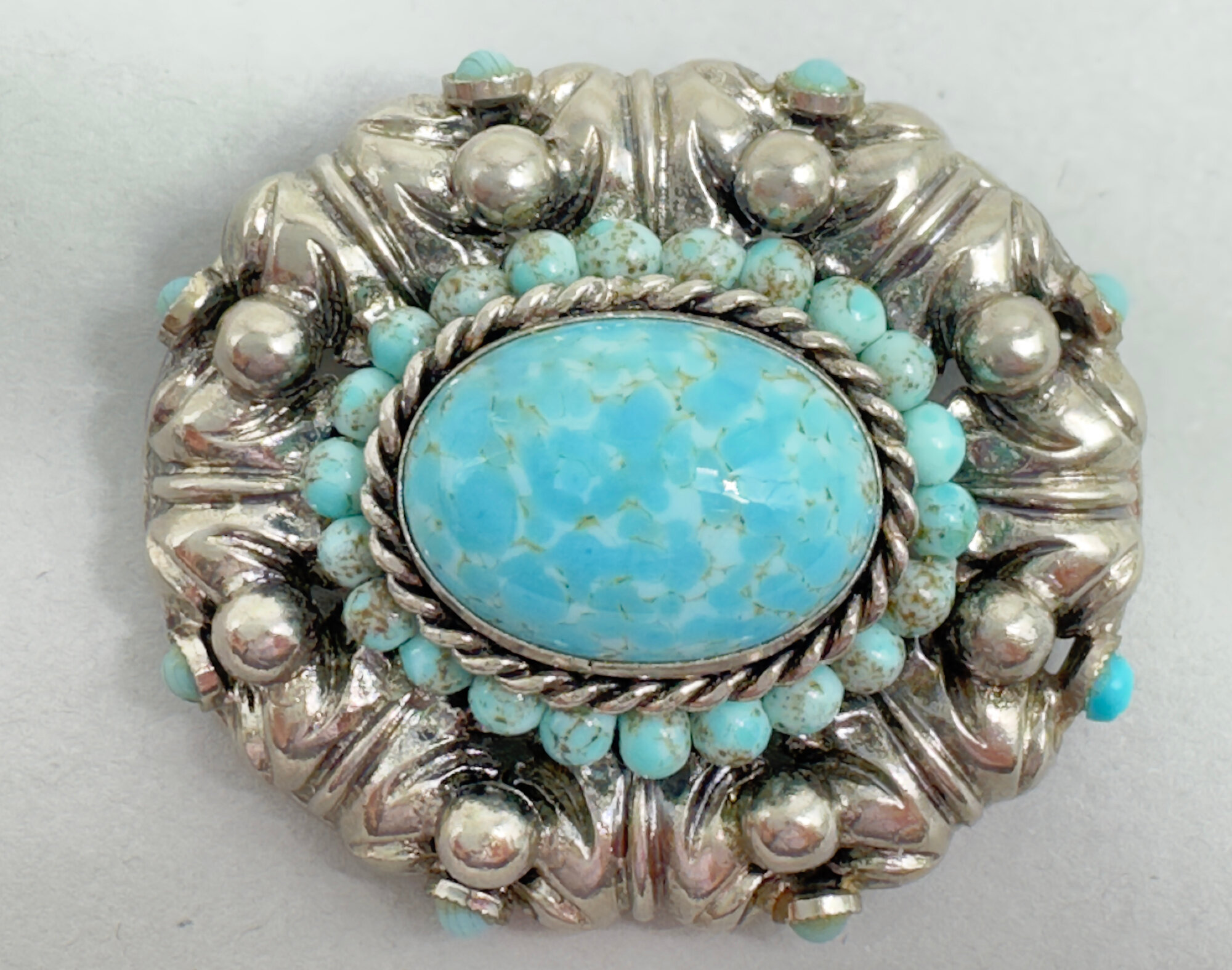
Czech glass faux turquoise brooch c1930
Price: £65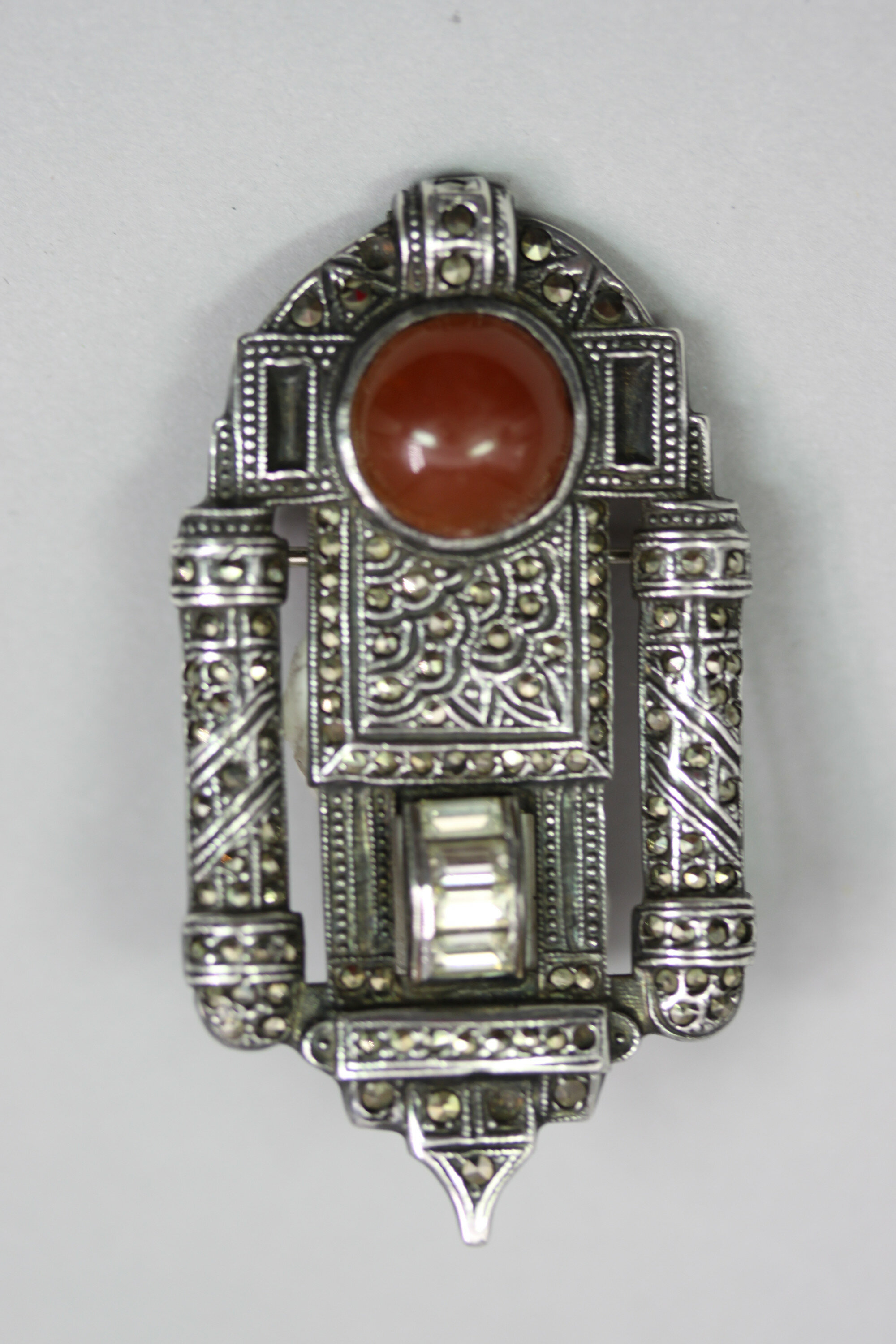
American Art Deco silver and marcasite brooch
Price: £35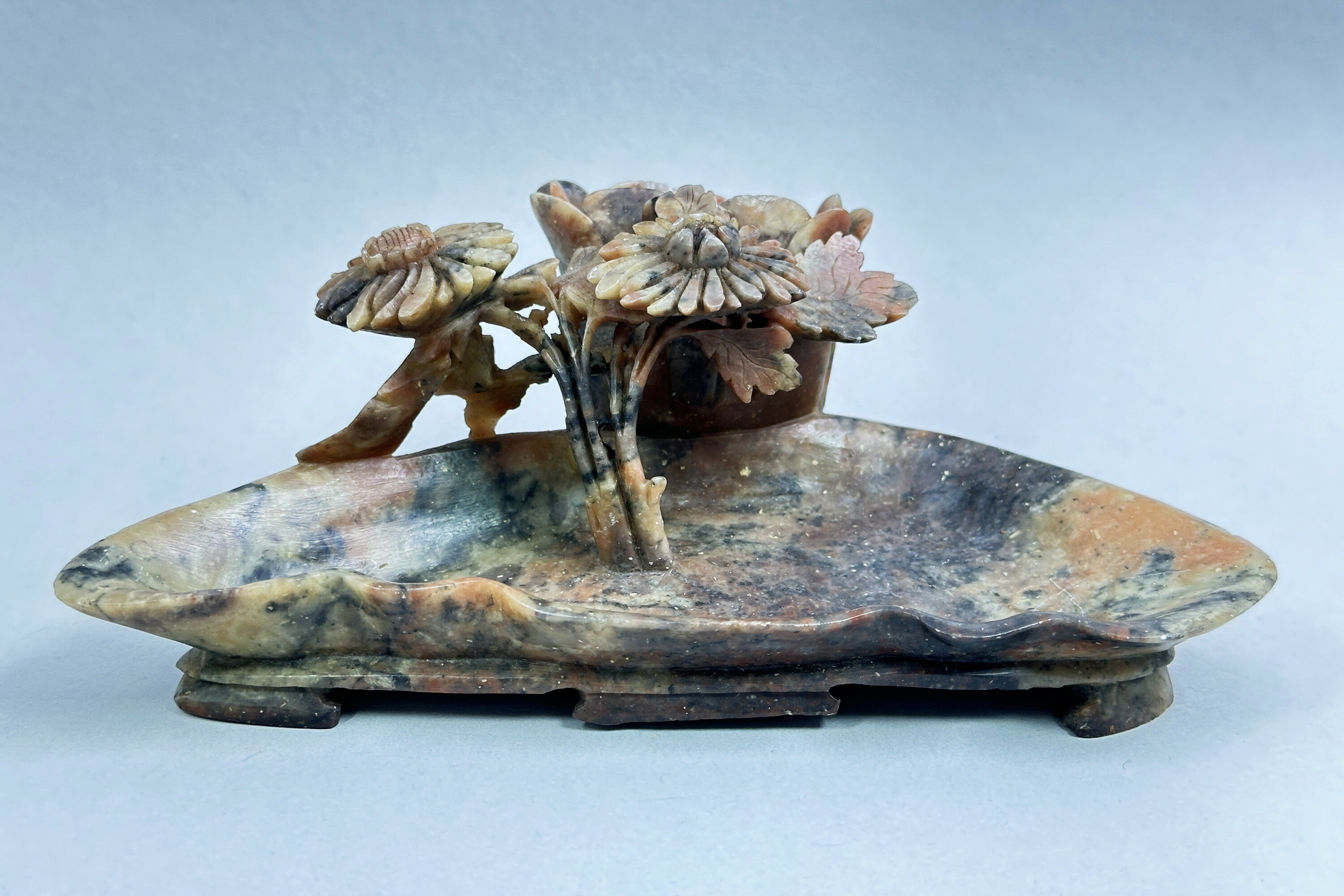
Chinese Soapstone Brushwasher with flowering lotus, early C20th
Price: £95
